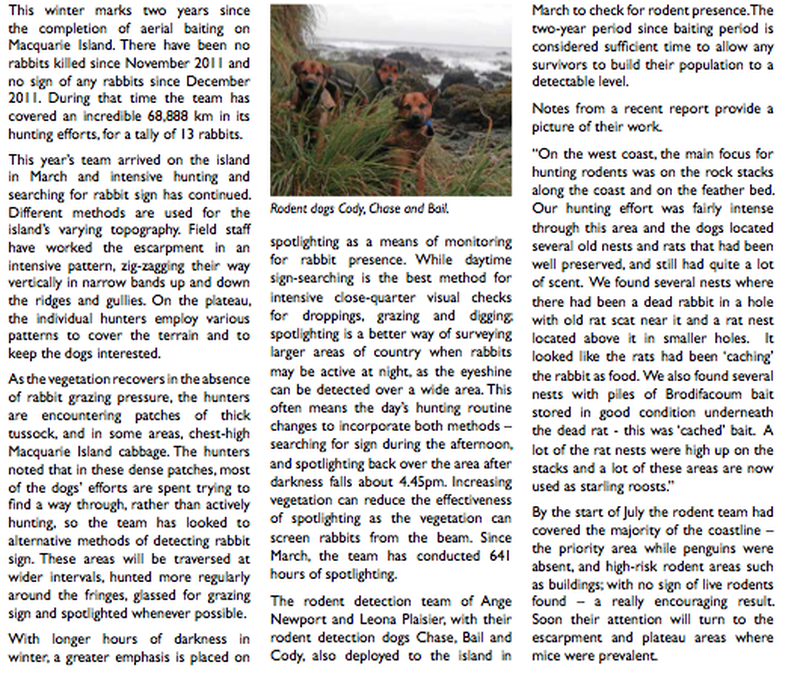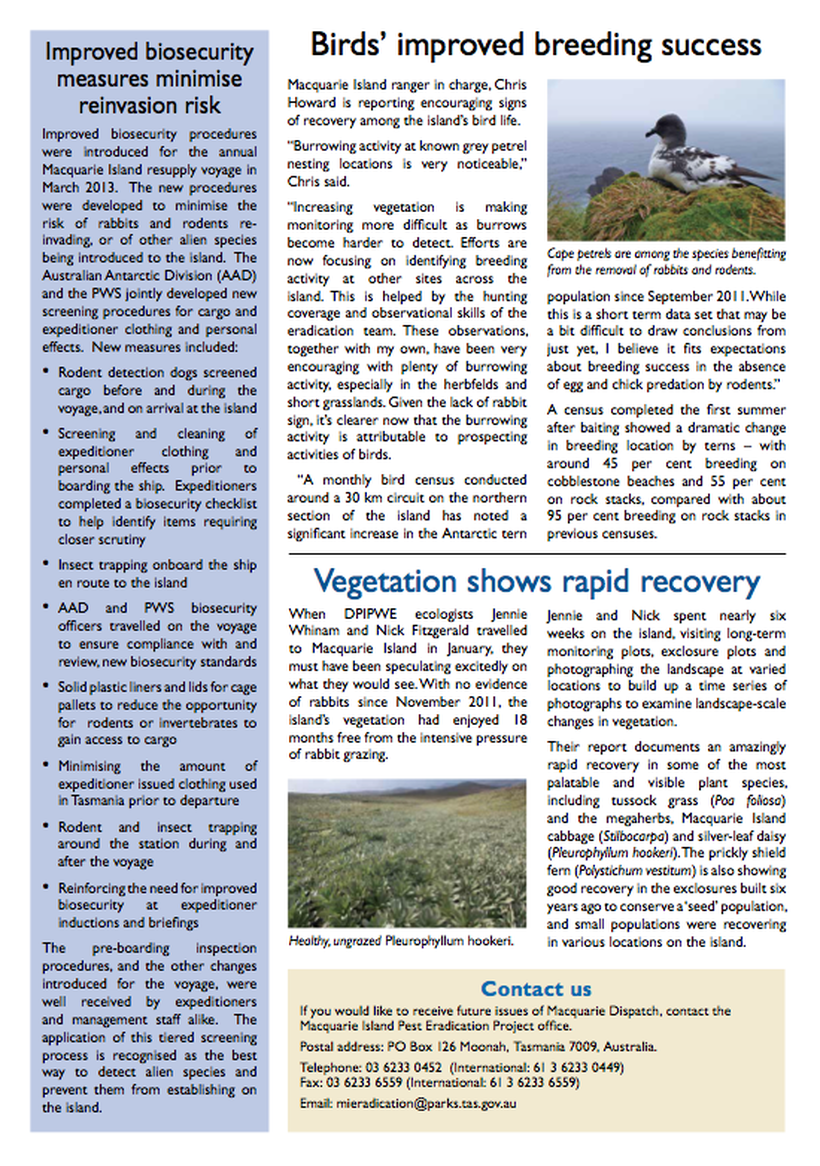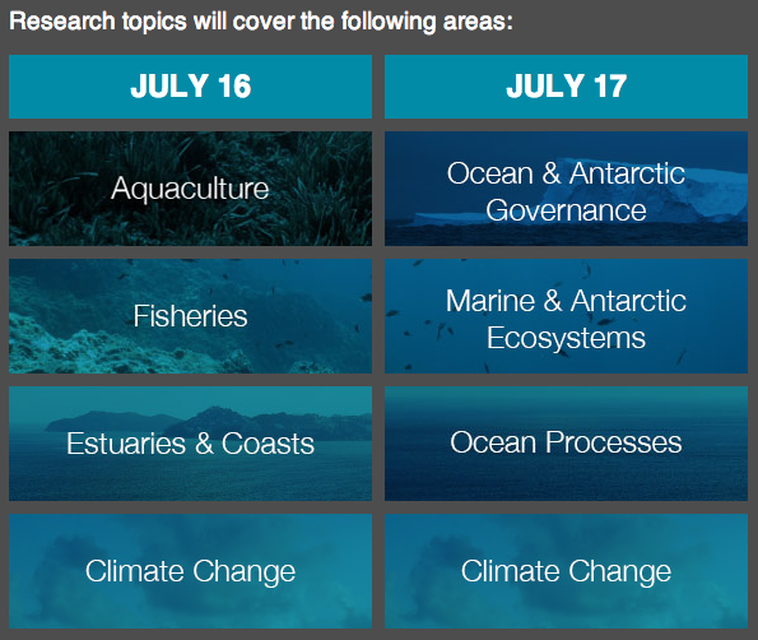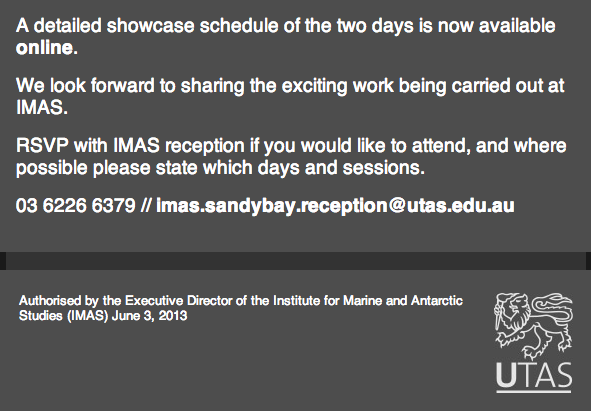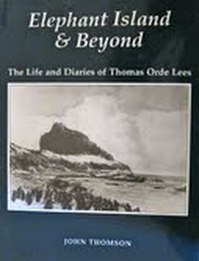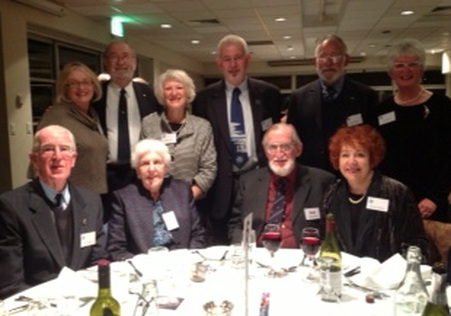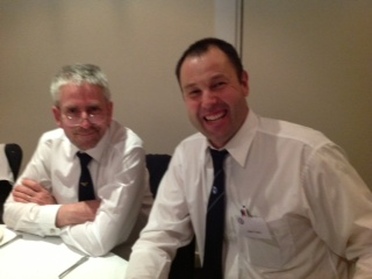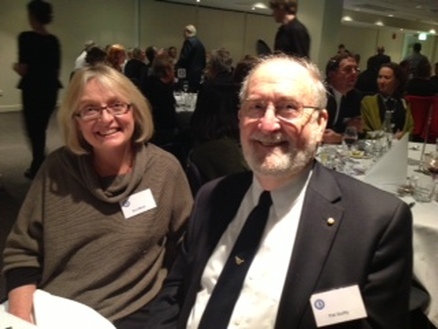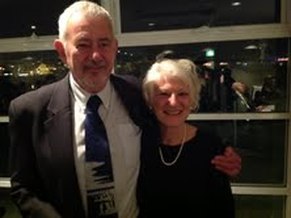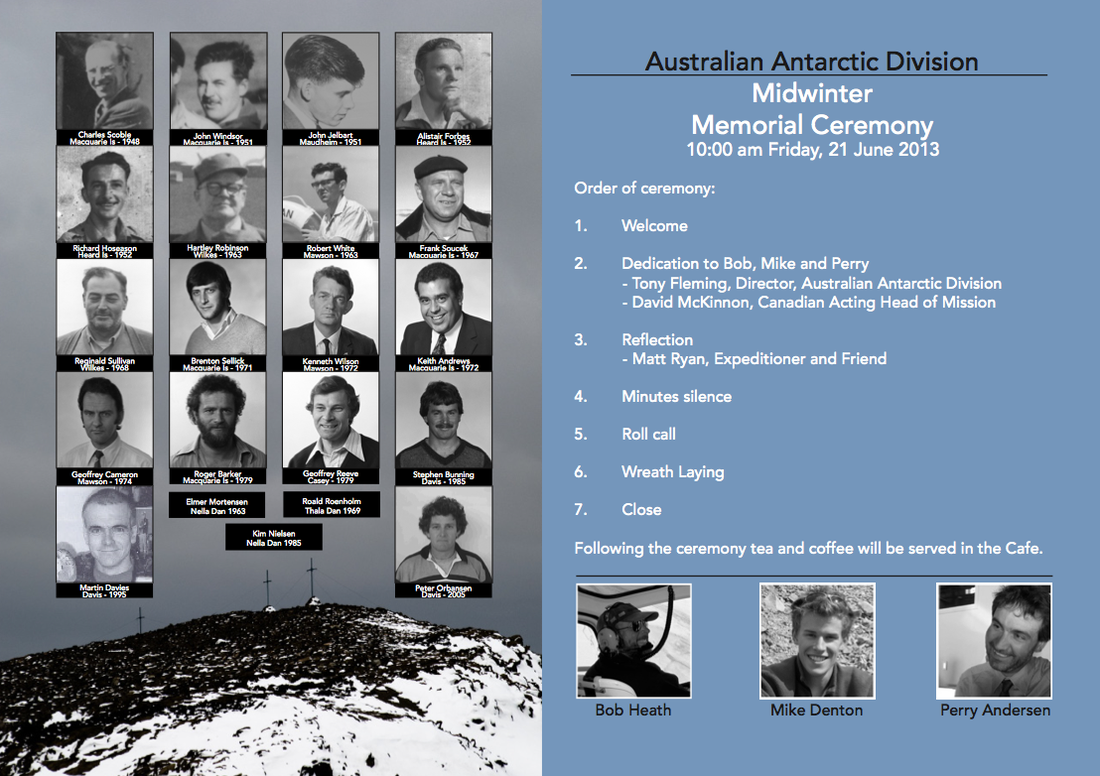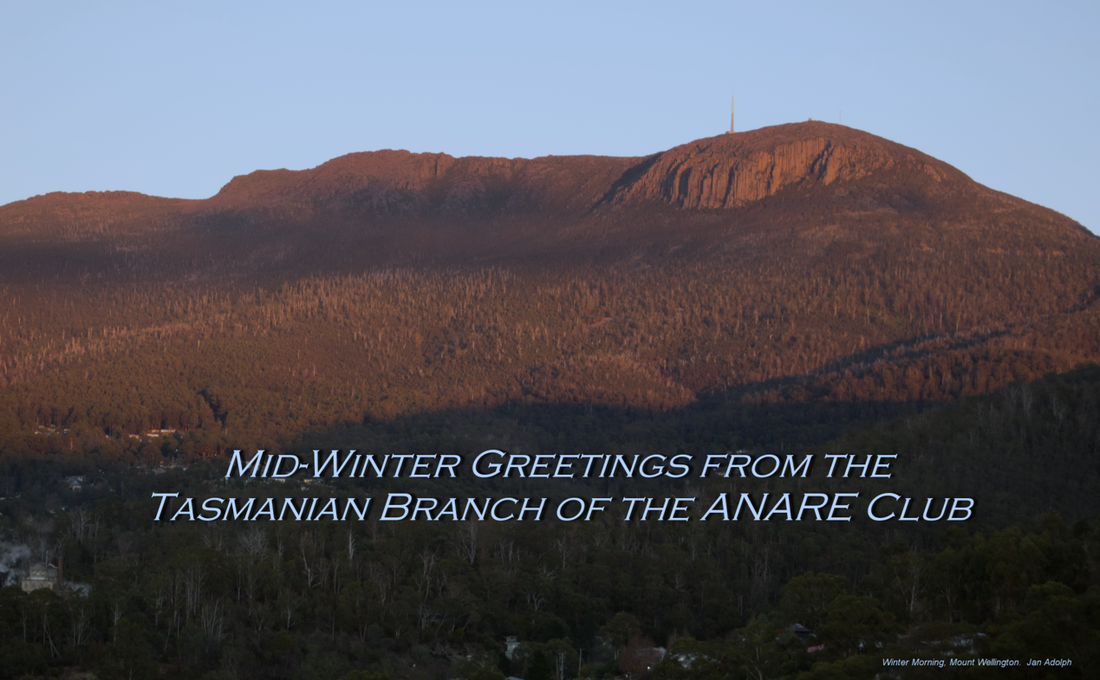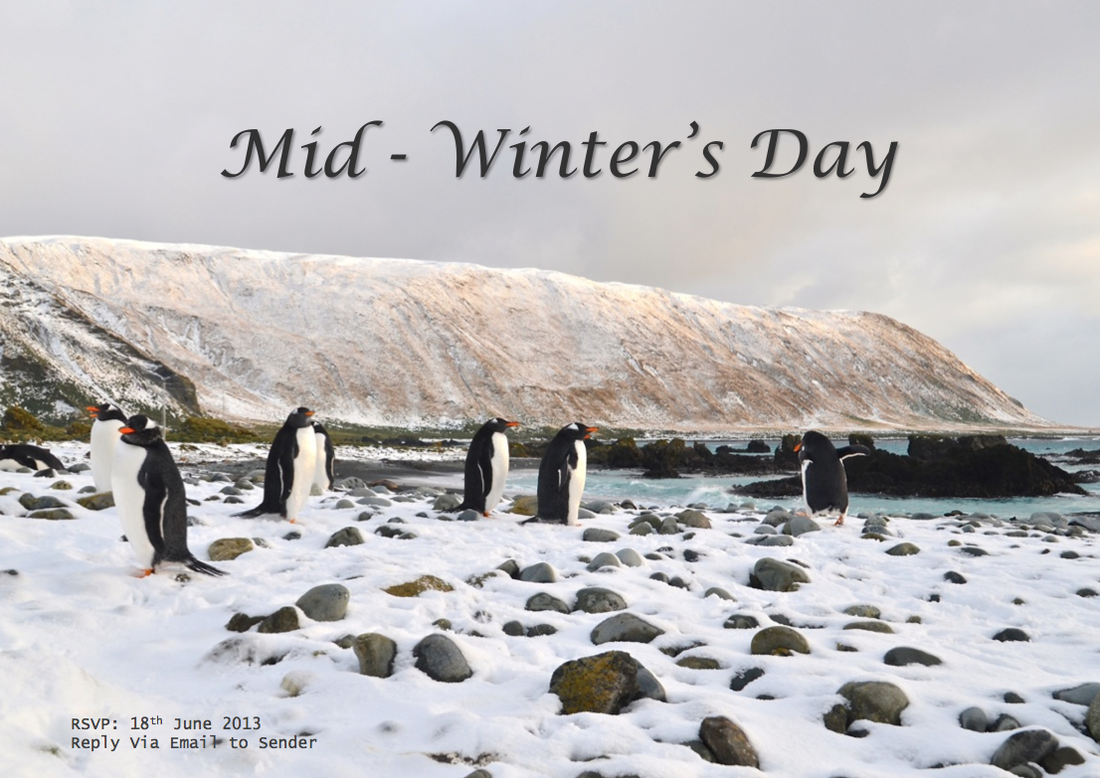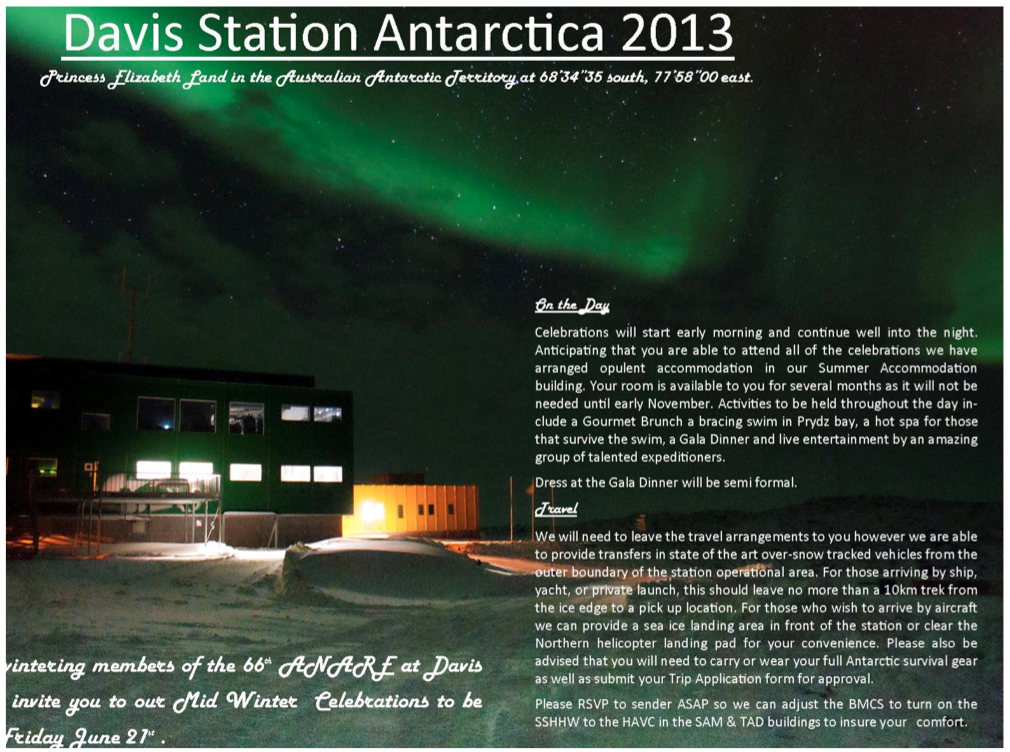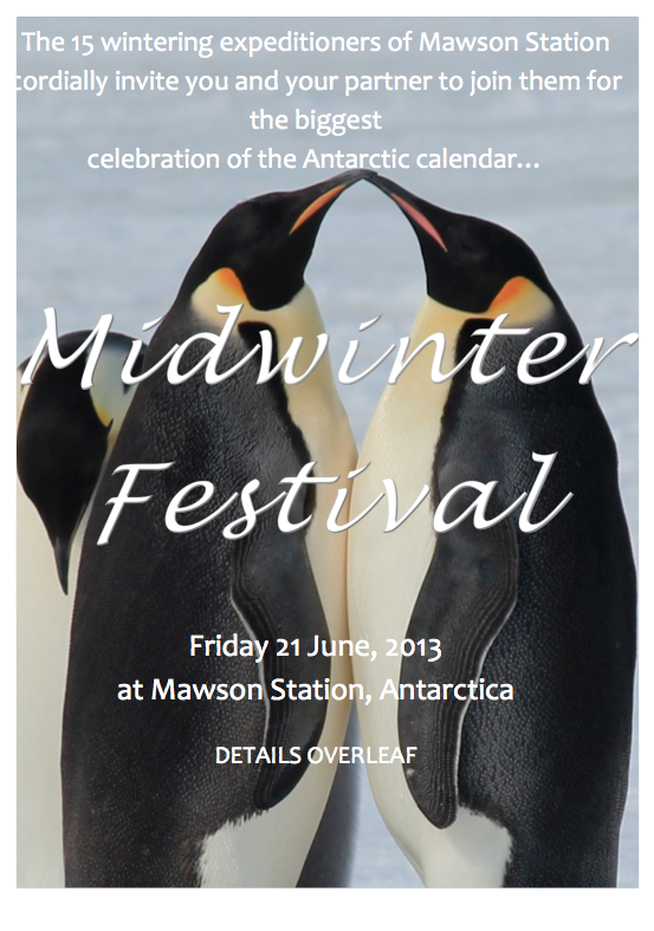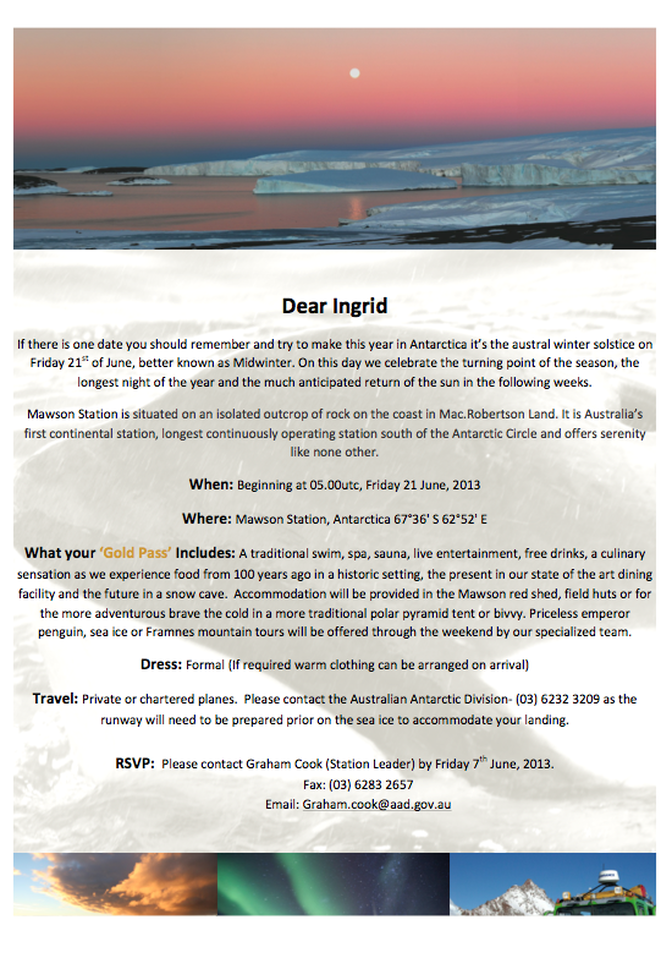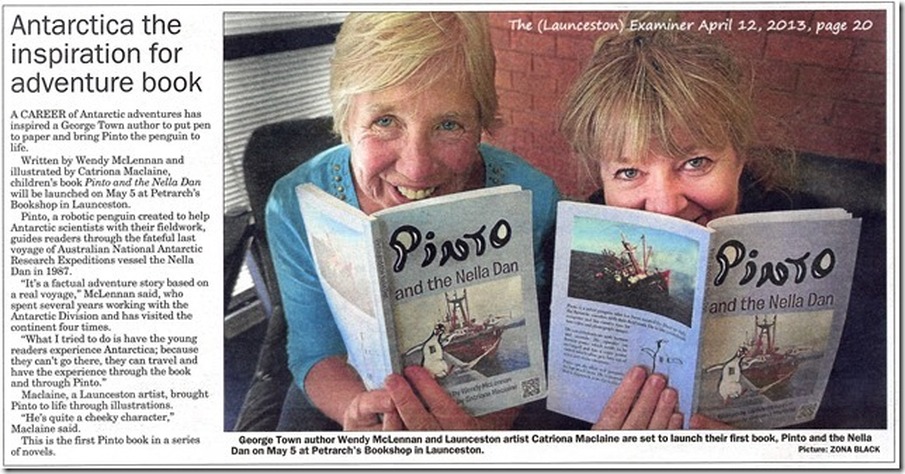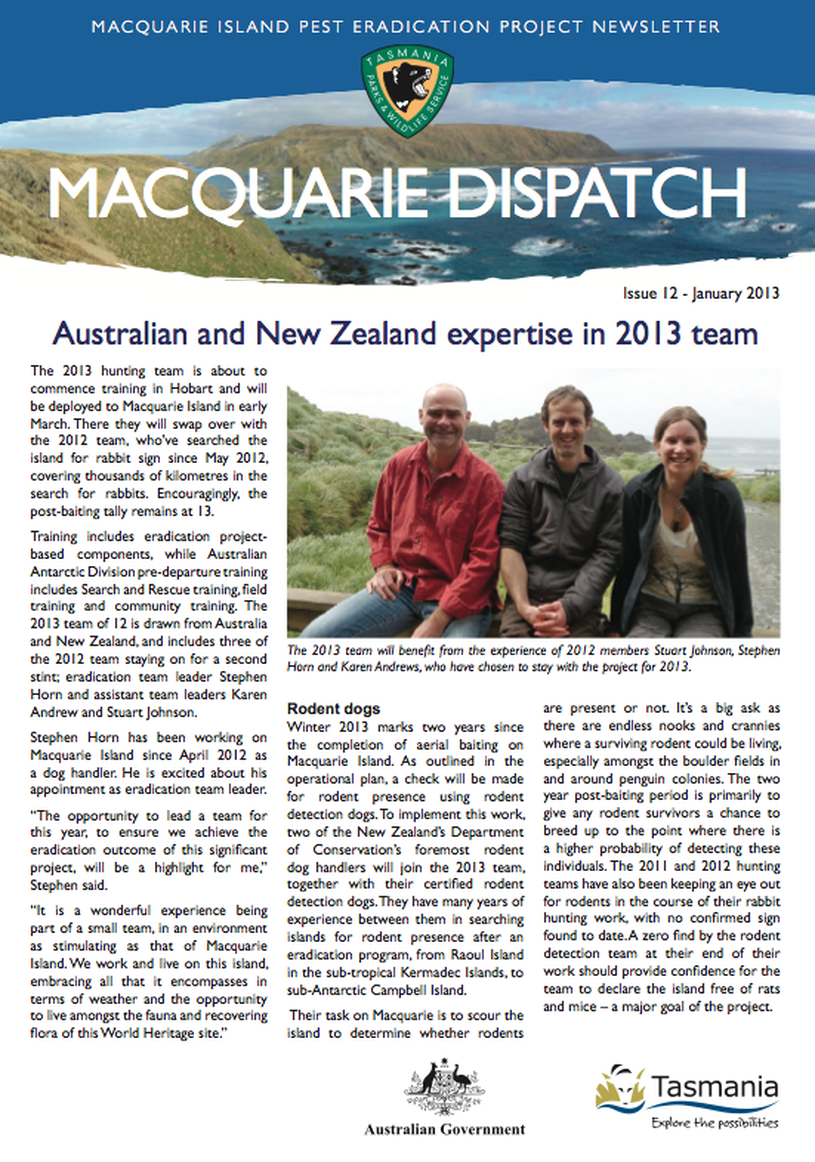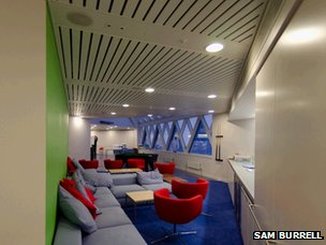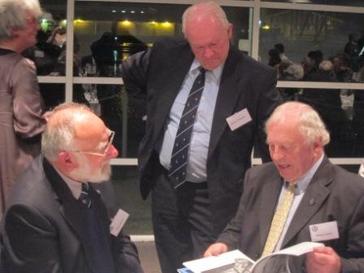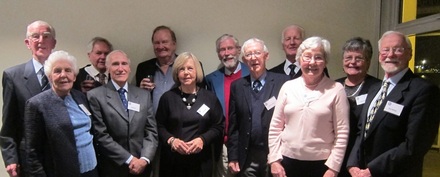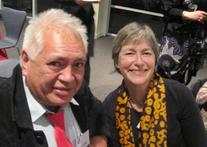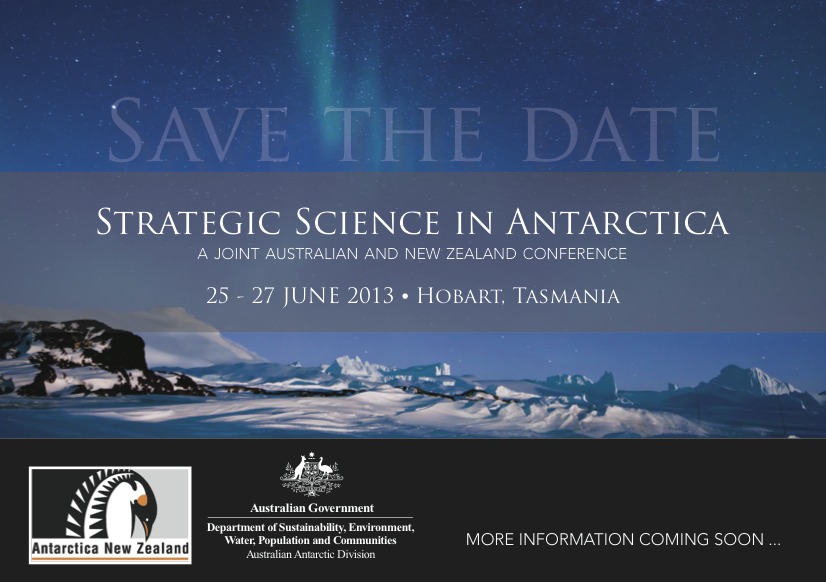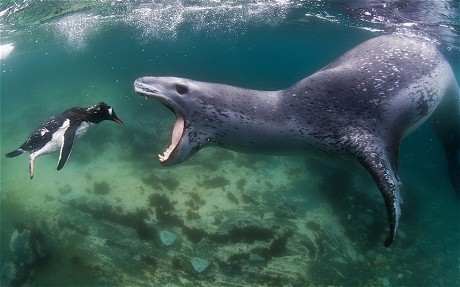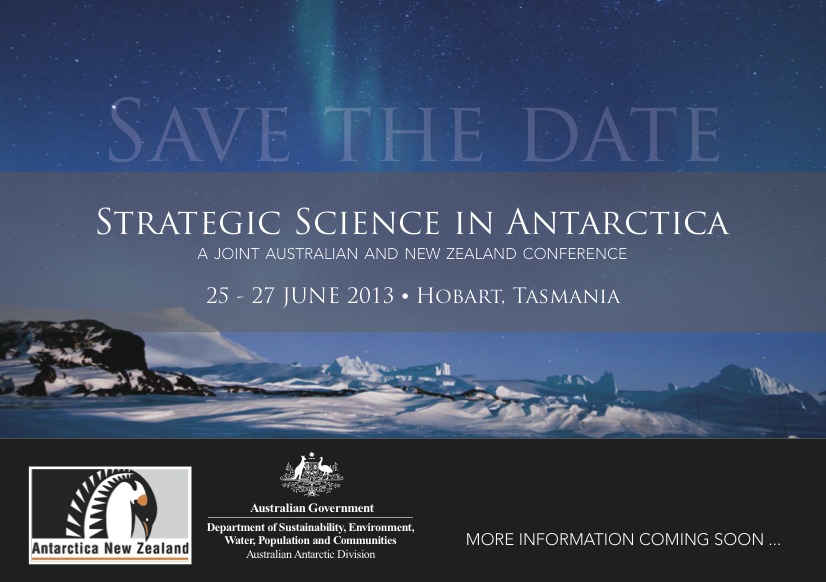|
Latest News
AGM Tas branch
federal politics Antarctic promises Artist Wendy Sharpe Update Mawson Hut in Hobart Vale Colin Perger Macca Romantics IMAS meeting Aurora photography festival Call of aurora chamber opera Antarctic books Tas MWD photos on line ANARE veterans meet for midwinter lunch Station midwinter updates Ant. science conference AGM and elections in July Tas polar industry concerns Geraldton news Glass exhibition Davis MWD photos on line Ian Allison awarded Phil Law medal Wanted: Tas MWD photos Mawson MWD photos on line Thankyou Michael & Marilyn Historic medal on display Cheeky solstice swim video Update on parking Antarctic medals awarded Casey Midwinter preparations Tas science awards MWD seating list released Tours of the Div Midwinter AA tour Purchase pinto at MWD Macquarie Is on new ABC TV series Antarctic science meeting Antarctic ice shelf news Tas branch Midwinter greetings Macca MWD invite Davis MWD invite Casey MWD invite MWD tickets wanted Pinto penguin book launch Phil Law article by Pat Quilty European midwinter lunch news Looking for... Madigan book review Nude or prude... Seal research Ant park rejected MWD filling up Memorial Rock ceremony AAD Midwinter tours Explore Tas at Midwinters Antarctic Science news Ice lab exhibition Tas MWD menu released Mawsons huts funding Media release Mawsons Huts Nude swim goes ahead Constitution approved $25 million for Antarctica Alien invaders minimised Winter trek proceeds ANARE Club constitution Early bird MWD discount ends soon Pinto, adventure penguin Hobarts Auroras Cpt Scotts last letter Antarcic postmistress wanted Win free flights to Hobart Nude swim for Midwinters Red Queen opening night Casey 88 reunion planned Barend Becker Blog Macca DVD 'Edge of Nowhere' Greens media release on funding Antarctica Macca pest eradication project Book on Stay to be released Heard Island trip iconic photos wanted Heard Island report Phillip Law medal nominations ANARE Club berth applications Club berth voyage reports Mawson Mountains on stamps Chasing the Light: Women in Antarctica Minke whale research New bacteria Lake Vostok Madigan book launch Invite to WA Traversing Antarctica Antarctic conf registration opens Movie 'The Thing' 2011 prequel New BAS station unveiled AA to be replaced GG visits Casey station MWD festivities /dinner update Antarctic plane crash Chinese icebreaker in Hobart Antarctic Arts fellowship Shakleton expedition Leopard seal v penguin photo Geographic pole marker moved Fishing season in Antarctica New photos from Scott expedition found UK midwinter lunch New Tas Midwinter festival Conference: strategic science in Antarctica Vale Andrew McLaughlin Round 3 ice drilling Antarctic glacier retreats Hobart climate change conference Ant Div recruiting Ant lake research abandoned Ant machinery photographic exhibition And furthermore... Queen Elizabeth land announced ...And the Argentinians object.. Ant marine park on ice Nella Dan link Arts recipient |
ANARE CLUB - Tas branch 2013 Annual General Meeting
The Club AGM will be held at Hadley’s in Murray St, Hobart. on Friday 13th September at 7.00 pm. If we are to have a fantastic midwinter dinner in 2014 with members choosing Tasmania for their reunions we need support from you, our local members. Please attend the meeting on Friday 13th September...it will run for less than one hour. Jan Adolph President Tas Branch ANARE More (federal) politics....
Coalition promises Antarctic catch-up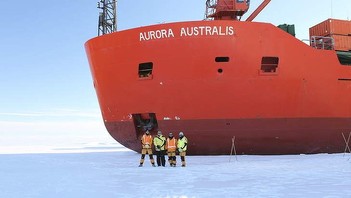
by Andrew Darby, Fairfax media
August 29th 2013. The Coalition is promising to conduct the first strategic review of Australia's Antarctic priorities in 15 years as it moves to reverse deep cuts to the national program. The review led by internationally respected polar policy-maker Tony Press comes as Labor imposes another 8 per cent cut to the program this year, while other nations are boosting their Antarctic involvement. "It's really been a fairly long process of death by a thousand cuts," said Dr Press, the chief executive of the Antarctic Co-operative Research Centre in Hobart. Advertisement "We're on the verge at the moment of losing the capacity to take a large number of scientists to do important science in Antarctica," he said. "The gradual diminishing of the flexibility in the Antarctic budget will have a very big impact in the next few years." The last overall strategic review of Australia's policy was conducted in the early years of the Howard government, and published in May 1998 as "Our Antarctic Future". Opposition environment spokesman Greg Hunt said the Press review, to be completed by July 1, 2014, would cover Australia's interests across its entire 42 per cent Antarctic claim. "It's about extending Australia's research capacity, it's about extending its logistics capacity, and it's about making Hobart and Tasmania a global gateway for the Antarctic," Mr Hunt said. It was driven by a need to get Australian researchers onto the ice, and into the waters off Antarctica in a long term research presence to "undo some of the damage" done by the cuts, Mr Hunt said. He said the review could consider tourism in the Australian Antarctic Territory, but he would be very cautious about it. "I think our first responsibility, our overwhelming responsibility, is to protect one of the world's great unique global environments. That trumps everything else." He also recommitted the Coalition to the current prohibition on mining in Antarctica. But the review comes with some nations raising pressure on Antarctic resources, and at a time of expanding base construction by other nations, including in the Australian Antarctic Territory (AAT). Fishing nations Russia and the Ukraine recently blocked the creation of Antarctic marine reserves in what Mr Hunt said was a case in point of the need for a review. Both of the former Soviet Union countries have also overtly claimed mineral exploration achievements, in defiance of the Antarctic Treaty's ban. Australia maintains three polar bases, but still has no permanent presence in the eastern sector of its territory, due south of Hobart, while India and China are expanding their bases elsewhere in the AAT. The review will be funded through departmental resources, but in an $87 million plan, the Coalition promised $25 million for the Antarctic CRC, an additional $24 million for Antarctic research, and $38 million to extend Hobart airport, thereby increasing the options of intercontinental aircraft. Labor campaign spokesman Mark Dreyfus said the Coalition's Antarctic plan represented a a $38 million gift to Hobart Airport's private majority owner, Macquarie. "This is not funding for Antarctic research," Mr Dreyfus said "Is Tony Abbott signalling that a future Liberal Government would fund the private operations of airports?" The airport is 50.1 per cent owned by Macquarie Global Infrastructure, and 49.9 per cent by the Tasmanian Retirement Benefits Fund Mr Dreyfus said the government recently conducted a strategic review for the scientific component of the Australian polar program. The Labor government has begun a program to replace the ageing resupply ship Aurora Australia. Read more: http://www.theage.com.au/federal-politics/federal-election-2013/coalition-promises-antarctic-catchup-20130829-2sshn.html#ixzz2dPD1LuH9 And the reply from the Labor party....
Coalition Late To The Party On Antarctic Funding

Minister for the Environment, Heritage and Water Mark Butler
Minister for Innovation, Industry, Science and Research Kim Carr SYDNEY 29 AUGUST 2013 The Coalition’s announcement today of a ‘strategic plan’ for Antarctic activities comes as a surprise, given the Rudd Labor Government already has a strategic plan in place. The Rudd Labor Government’s Antarctic Science Program is guided by the Australian Antarctic Science Strategic Plan 2011-12 to 2020-21. Is the Liberal’s so-called ‘strategy’ a plan, or just another pamphlet? The new ‘strategy’ promise, and the $25 million Mr Abbott has belatedly and reluctantly put on the table for research seems nothing more than a token gesture when held up against Federal Labor’s investments which include:
Since 2007 Federal Labor has ushered in an historic period of investment in research and universities in Tasmania. We have increased the total investment in teaching and learning in the University of Tasmania by 30 per cent since 2007 and increased infrastructure funding by more than three times the previous spend in the same period. The Coalition doesn’t have a great record in this area. When last in Government, the Coalition refused to replace the old and potentially unsafe Southern Surveyor, their ‘ship of shame’, despite years of criticism and pleas. The Coalition jeopardised Australia’s deep Southern Ocean research effort, by refusing to acknowledge that Australia needed a state-of-the-art research vessel. The Rudd Labor Government reinvigorated the national marine research effort by finally providing this capability. Labor also invested $7.9 million to extend the lifespan of the Aurora Australis icebreaker, while inviting industry to submit proposals for a new icebreaker, a critical piece of infrastructure for Antarctic operations. As for the Coalition’s plans to look into World Heritage listing, the Antarctic Treaty System delivers strong environmental protection of Antarctica, by prohibiting mining and making environmental protection a fundamental consideration for all activities in Antarctica. Australia is one of the most active nations in support of the World Heritage Convention. Some of our most significant natural and cultural landscapes have been inscribed on the World Heritage list. Tony Abbott and the Coalition are announcing policies the Labor Party already have in place and falling well short of the mark. Posted by Australian Labor on August 29, 2013 · Flag |
And the Greens policy can be accessed here...(wasn't able to copy it for reproduction on the website!)
WENDY SHARPE’S ANTARCTICA

Long Gallery, Salamanca Arts Centre, Salamanca Place Hobart
When: 1-18 August 2013
Cost: free
Renowned Australian artist Wendy Sharpe visited the historic huts in January 2012 as guest of the
Australian Antarctic Division for the Centenary of the landing by the 1911-14 Australasian Antarctic Expedition (AAE) led by Dr Douglas Mawson.
This special exhibition of about 70 paintings is to help raise funds for the fitting out of a full scale replica of Mawson’s Huts on the Hobart waterfront
When: 1-18 August 2013
Cost: free
Renowned Australian artist Wendy Sharpe visited the historic huts in January 2012 as guest of the
Australian Antarctic Division for the Centenary of the landing by the 1911-14 Australasian Antarctic Expedition (AAE) led by Dr Douglas Mawson.
This special exhibition of about 70 paintings is to help raise funds for the fitting out of a full scale replica of Mawson’s Huts on the Hobart waterfront
REPLICA PROJECT UNDERWAY
from website: Mawsons Hut Foundation
The Foundation’s plans to build a full scale replica of Mawson’s Huts on the Hobart waterfront are underway.
Construction will be in a large storage facility on the waterfront being generously provided by the Tasmanian Ports Authority (Tasports) and be ready for transportation to the replica site before the end of October.
CIRCA architects headed by Professor Robart Morris Nunn one of Tasmania’s most respected architects and Ganche Chua are heading the architectural team along with the highly respected design consultant Jim Gandy.
Assisting the project is Lee Tyers Building Surveyors and Tim Williams of Red Arrow which is looking after the replication and interpretation of the interior.
The Foundation is indebted to the Hobart City Council which is providing the prime waterfront site which is adjacent to Mawson’s Place and Constitution Dock.
Clennetts Mitre 10 are the exclusive suppliers of all the building materials and the Baltic Pine cladding will be from the same source in Scandinavia as the original timber, of exactly the same dimension and imported by the same company in Melbourne which supplied the AAE.
Foundation Chairman/CEO David Jensen AM plans to officially open the replica on December 2 this year which will be the 102nd anniversary of the departure from Hobart of the 1911-14 Australasian Antarctic Expedition (AAE) led by Douglas Mawson.
“The replica project has developed into a wonderful community spirited project with everyone involved being incredibly generous with their time and skills,” said David
Construction has been made possible by a special grant of $350,000 from the Federal Government but the Foundation is asking members of the public to assist with the provision of artefacts for the interior. “These can be donated or loaned to for the replica,” he said
from website: Mawsons Hut Foundation
The Foundation’s plans to build a full scale replica of Mawson’s Huts on the Hobart waterfront are underway.
Construction will be in a large storage facility on the waterfront being generously provided by the Tasmanian Ports Authority (Tasports) and be ready for transportation to the replica site before the end of October.
CIRCA architects headed by Professor Robart Morris Nunn one of Tasmania’s most respected architects and Ganche Chua are heading the architectural team along with the highly respected design consultant Jim Gandy.
Assisting the project is Lee Tyers Building Surveyors and Tim Williams of Red Arrow which is looking after the replication and interpretation of the interior.
The Foundation is indebted to the Hobart City Council which is providing the prime waterfront site which is adjacent to Mawson’s Place and Constitution Dock.
Clennetts Mitre 10 are the exclusive suppliers of all the building materials and the Baltic Pine cladding will be from the same source in Scandinavia as the original timber, of exactly the same dimension and imported by the same company in Melbourne which supplied the AAE.
Foundation Chairman/CEO David Jensen AM plans to officially open the replica on December 2 this year which will be the 102nd anniversary of the departure from Hobart of the 1911-14 Australasian Antarctic Expedition (AAE) led by Douglas Mawson.
“The replica project has developed into a wonderful community spirited project with everyone involved being incredibly generous with their time and skills,” said David
Construction has been made possible by a special grant of $350,000 from the Federal Government but the Foundation is asking members of the public to assist with the provision of artefacts for the interior. “These can be donated or loaned to for the replica,” he said
Vale Colin Perger C72
Colin was a member of the Casey 1972 expedition as a radio technician.
He retained an interest in Antarctic affairs, was a member of the ANARE club and a regular attender at the Melbourne gatherings of the Antarctic Family and Friends Association.
A Thanksgiving Service for the life of Mr Colin Stanley Perger will be held on FRIDAY (Aug. 16, 2013) at 11 a.m. in the Knox Comunity Baptist Church, 17-19 Falconer Rd Boronia. CREMATION
Regards,
Graeme McDiarmid.
Q 88, D 92
Colin was a member of the Casey 1972 expedition as a radio technician.
He retained an interest in Antarctic affairs, was a member of the ANARE club and a regular attender at the Melbourne gatherings of the Antarctic Family and Friends Association.
A Thanksgiving Service for the life of Mr Colin Stanley Perger will be held on FRIDAY (Aug. 16, 2013) at 11 a.m. in the Knox Comunity Baptist Church, 17-19 Falconer Rd Boronia. CREMATION
Regards,
Graeme McDiarmid.
Q 88, D 92
The Australian Antarctic Division is handing the keys of their Twitter account over to a different scientist each week day of National Science Week, to share their day with the tweeps (Twitter people) of Australia and the world.
They will tweet about their current projects, give a glimpse of what they do from day to day, share their Antarctic experience, their passions and why they are committed to Antarctica!
Visit the page from 12 to 16 August to discover the featured scientist of the day and follow the conversation.
You don't need a Twitter account to see the tweets appearing throughout the day. You do need one if you'd like to ask a question or join the conversation, and you can also 'follow' us to keep up with Antarctic news, jobs and events.
More information
They will tweet about their current projects, give a glimpse of what they do from day to day, share their Antarctic experience, their passions and why they are committed to Antarctica!
Visit the page from 12 to 16 August to discover the featured scientist of the day and follow the conversation.
You don't need a Twitter account to see the tweets appearing throughout the day. You do need one if you'd like to ask a question or join the conversation, and you can also 'follow' us to keep up with Antarctic news, jobs and events.
More information
Encouraging signs of success in rabbit and rat removal
Krill expedition leaves Chile

14th August 2013
from AAD website
How do Antarctic krill make it through the long, dark months of winter?
Australian Antarctic Division scientists this week will join an international, German-led expedition to investigate the relationship between sea ice and the winter survival of Antarctic krill in the Southern Ocean.
A Division team of six scientists and support technicians will spend eight weeks in the north-western Weddell Sea aboard the Alfred Wegener Institute icebreaker, RV Polarstern.
Sea ice scientist, Dr Klaus Meiners, will measure ice thickness and make under-ice observations using a Remotely Operated vehicle (ROV).
“We know that sea ice plays a critical role in the dynamics of the Southern Ocean, so the data we collect on this trip will help us explore the relationship between sea ice and krill,” Dr Meiners said.
Researchers will study the sea ice zone and the abundance, physiological conditions and genetics of Antarctic krill. Working on ice floes, they will use the ROV to view algae attached to the rugged underside and film krill.
Read more here...
from AAD website
How do Antarctic krill make it through the long, dark months of winter?
Australian Antarctic Division scientists this week will join an international, German-led expedition to investigate the relationship between sea ice and the winter survival of Antarctic krill in the Southern Ocean.
A Division team of six scientists and support technicians will spend eight weeks in the north-western Weddell Sea aboard the Alfred Wegener Institute icebreaker, RV Polarstern.
Sea ice scientist, Dr Klaus Meiners, will measure ice thickness and make under-ice observations using a Remotely Operated vehicle (ROV).
“We know that sea ice plays a critical role in the dynamics of the Southern Ocean, so the data we collect on this trip will help us explore the relationship between sea ice and krill,” Dr Meiners said.
Researchers will study the sea ice zone and the abundance, physiological conditions and genetics of Antarctic krill. Working on ice floes, they will use the ROV to view algae attached to the rugged underside and film krill.
Read more here...
Where 'zombies' thrive & shipwrecks are preserved...

By Jonathon Amos
BBC science correspondent
Ernest Shackleton's famous ship, the Endurance, which he had to abandon in 1915 on his ill-fated Antarctic expedition, is probably still in very good condition on the ocean floor.
This is one conclusion from research that studied how sunken wood degrades in southern polar waters.
Experiments that submerged planks for over a year found they returned to the surface in near-pristine condition.
Scientists point to the absence in the region of wood-boring "ship worms".
Anywhere else in the world, these molluscs would normally devour sunken wood rapidly.
But Adrian Glover from London's Natural History Museum says the currents that circle the Antarctic likely prevent the organisms from getting anywhere near the continent.
The experimental planks were untouched
It means the remains of old wooden shipwrecks, such as the oak- and pine-constructed Endurance, which was pierced by ice, may be remarkably well preserved in their water graves at the bottom of the sea...
...Shackleton's Endurance is thought to have settled about 3km (10,000ft) below the Weddell Sea surface. A number of groups have talked about trying to locate it.David Mearns, from the UK-based company Blue Water Recoveries, is putting together one such plan. He said the new research reinforced his view that the wreck was in a good state.
"She was badly holed in the stern by large chunks of ice that broke through the ship's sides below the water line and caused her to flood," he explained.
"As the damage was too bad to be repairable, Sir Ernest was left with no other option than to abandon ship and set up camps on the ice. While Endurance will be a wreck, I expect to find her hull largely intact. She would have suffered additional impact damage when hitting the seabed, but I don't expect this to be too bad."
For full article click here...
BBC science correspondent
Ernest Shackleton's famous ship, the Endurance, which he had to abandon in 1915 on his ill-fated Antarctic expedition, is probably still in very good condition on the ocean floor.
This is one conclusion from research that studied how sunken wood degrades in southern polar waters.
Experiments that submerged planks for over a year found they returned to the surface in near-pristine condition.
Scientists point to the absence in the region of wood-boring "ship worms".
Anywhere else in the world, these molluscs would normally devour sunken wood rapidly.
But Adrian Glover from London's Natural History Museum says the currents that circle the Antarctic likely prevent the organisms from getting anywhere near the continent.
The experimental planks were untouched
It means the remains of old wooden shipwrecks, such as the oak- and pine-constructed Endurance, which was pierced by ice, may be remarkably well preserved in their water graves at the bottom of the sea...
...Shackleton's Endurance is thought to have settled about 3km (10,000ft) below the Weddell Sea surface. A number of groups have talked about trying to locate it.David Mearns, from the UK-based company Blue Water Recoveries, is putting together one such plan. He said the new research reinforced his view that the wreck was in a good state.
"She was badly holed in the stern by large chunks of ice that broke through the ship's sides below the water line and caused her to flood," he explained.
"As the damage was too bad to be repairable, Sir Ernest was left with no other option than to abandon ship and set up camps on the ice. While Endurance will be a wreck, I expect to find her hull largely intact. She would have suffered additional impact damage when hitting the seabed, but I don't expect this to be too bad."
For full article click here...
The Macca Romantics...

Macca has done it again...
A couple of weeks before mid-winter, the station leader came up with an idea that they should make a video to present at a video conference hook up with AAD (Kingston) and all the other Australian bases.
Well after some discussion and thoughts the station came up with an idea -based on another video that was produced by a british Antarctic team Sky Blu.
Four of the group spent a whole Saturday choosing a song and figuring out how and where to film. The next day they spent most of the daylight hours shooting around 45 different video clips at various locations around the station. It looked like a heap of fun and a really good team exercise.
Barend and Aaron spent another 2 days putting it all together.
The video can be accessed here. ENJOY!!! (We certainly did...particularly the surprise performances by some old friends...
A couple of weeks before mid-winter, the station leader came up with an idea that they should make a video to present at a video conference hook up with AAD (Kingston) and all the other Australian bases.
Well after some discussion and thoughts the station came up with an idea -based on another video that was produced by a british Antarctic team Sky Blu.
Four of the group spent a whole Saturday choosing a song and figuring out how and where to film. The next day they spent most of the daylight hours shooting around 45 different video clips at various locations around the station. It looked like a heap of fun and a really good team exercise.
Barend and Aaron spent another 2 days putting it all together.
The video can be accessed here. ENJOY!!! (We certainly did...particularly the surprise performances by some old friends...
And we checked: IMAS is happy for interested members of the Antarctic community to attend...but you do need to RSVP.
when: 16th -17th July
where: CCLAMR, 181 Macquarie st, Hobart
cost: free
when: 16th -17th July
where: CCLAMR, 181 Macquarie st, Hobart
cost: free
Aurora Australis and night sky photography festival
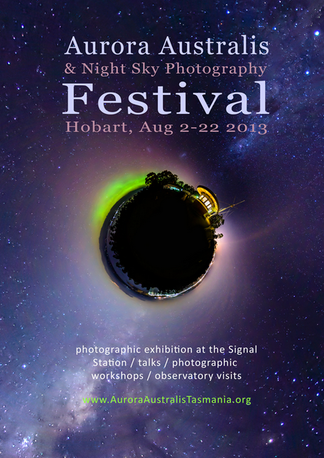
Where: Hobart, Tasmania
When: 2-22 August, 2013.
In recent times, Tasmania has become the place to be for aurora viewing and photography in the southern hemisphere. The Facebook groupAurora Australis Tasmania has grown from a few hundred members in 2012 to over 4000 in July 2013.
This festival will celebrate this community and the growing interest in aurora australis as well as more broadly night sky photography.
The festival is based around a 3 week photographic exhibition at the Signal Station, Hobart.
Festival program so far
Photographic exhibition at the Signal Station from August 02 until August 22
Aurora talks on Saturday 03 August at the Hobart Town Hall at 3pm… more info
Screening of the groundbreaking movie TimeScapes at the State Cinema on Sunday 04 August at 1.30pm… more info
Visit to Mt Canopus telescope observatory on Friday 9th of August… more info
Photographic workshop at the Signal Station on Saturday 10th of August… more info
Sign up to their mailing list here....
When: 2-22 August, 2013.
In recent times, Tasmania has become the place to be for aurora viewing and photography in the southern hemisphere. The Facebook groupAurora Australis Tasmania has grown from a few hundred members in 2012 to over 4000 in July 2013.
This festival will celebrate this community and the growing interest in aurora australis as well as more broadly night sky photography.
The festival is based around a 3 week photographic exhibition at the Signal Station, Hobart.
Festival program so far
Photographic exhibition at the Signal Station from August 02 until August 22
Aurora talks on Saturday 03 August at the Hobart Town Hall at 3pm… more info
Screening of the groundbreaking movie TimeScapes at the State Cinema on Sunday 04 August at 1.30pm… more info
Visit to Mt Canopus telescope observatory on Friday 9th of August… more info
Photographic workshop at the Signal Station on Saturday 10th of August… more info
Sign up to their mailing list here....
The Call of Aurora -an Antarctic chamber opera by Joe Bugden

Mertz Cross, photo by MHF
"A story of love, death & madness!"
The Call of Aurora is a chamber opera by Tasmanian composer & librettist, JOE BUGDEN.
The opera is based on Douglas Mawson's 1911-1914 expedition to Antarctica, and the crux of the story took place 100 years ago this year.
Performances
The Call of Aurora is being presented, with the generous support of the Hobart City Council, in four performances only:
Wed 7th - Saturday 10th August 2013 at 8pm at the Peacock Theatre in the Salamanca Arts Centre, Salamanca Place, Hobart.
Tickets are on sale now at http://callofaurora.eventbrite.com.au
Follow us on facebook at ...
http://www.facebook.com/events/142101192635593/?ref=ts&fref=ts
If you'd like to support the 2013 production of The Call of Aurora and would like to know how contact Joe Bugden here.
Many thanks to Anthea Wallhead for details of the Tasmanian activities...
The Call of Aurora is a chamber opera by Tasmanian composer & librettist, JOE BUGDEN.
The opera is based on Douglas Mawson's 1911-1914 expedition to Antarctica, and the crux of the story took place 100 years ago this year.
Performances
The Call of Aurora is being presented, with the generous support of the Hobart City Council, in four performances only:
Wed 7th - Saturday 10th August 2013 at 8pm at the Peacock Theatre in the Salamanca Arts Centre, Salamanca Place, Hobart.
Tickets are on sale now at http://callofaurora.eventbrite.com.au
Follow us on facebook at ...
http://www.facebook.com/events/142101192635593/?ref=ts&fref=ts
If you'd like to support the 2013 production of The Call of Aurora and would like to know how contact Joe Bugden here.
Many thanks to Anthea Wallhead for details of the Tasmanian activities...
Antarctic books recommended by Phil Barnaart...a personal note

Phil wrote...
'...I've been overseas since early April and have consequently missed all the midwinter dinners in Aus.
A month ago I arrived in Ireland with a couple of friends to begin a two-month stay - based on a rental property in County Kildare. Coincidentally we're living on a farm that was once owned by Shackleton's uncle, Ebenezer. In fact, "Ernest Henry" is the name of the lodge adjacent to ours!
There is a focus on Shackleton and the Antarctic in this area and the local town, Athy, has a Shackleton exhibition in their heritage centre. Their little shop is full of interesting polar books including the two books as per the attached photos. The one on Mawson is fascinating and one of the best books that I have read on the AAE.
The one on Antarctic ships I found in a bookstore in Wexford and, as it has full details of all the Lauritzen ships plus "Aurora Australls", I couldn't resist it!
Are you aware of these books? I've never seen them in Australia.
Went to Dublin recently and also visited the "Shackleton/Endurance" exhibition at Dun Laoghaire which is excellent. Yesterday we went for a drive around the Dingle Peninsula and ended up at Tom Crean's "South Polar Inn" so I couldn't resist having a drink there and taking a photo!
So many Antarctic connections here!
cheers
Phil
'...I've been overseas since early April and have consequently missed all the midwinter dinners in Aus.
A month ago I arrived in Ireland with a couple of friends to begin a two-month stay - based on a rental property in County Kildare. Coincidentally we're living on a farm that was once owned by Shackleton's uncle, Ebenezer. In fact, "Ernest Henry" is the name of the lodge adjacent to ours!
There is a focus on Shackleton and the Antarctic in this area and the local town, Athy, has a Shackleton exhibition in their heritage centre. Their little shop is full of interesting polar books including the two books as per the attached photos. The one on Mawson is fascinating and one of the best books that I have read on the AAE.
The one on Antarctic ships I found in a bookstore in Wexford and, as it has full details of all the Lauritzen ships plus "Aurora Australls", I couldn't resist it!
Are you aware of these books? I've never seen them in Australia.
Went to Dublin recently and also visited the "Shackleton/Endurance" exhibition at Dun Laoghaire which is excellent. Yesterday we went for a drive around the Dingle Peninsula and ended up at Tom Crean's "South Polar Inn" so I couldn't resist having a drink there and taking a photo!
So many Antarctic connections here!
cheers
Phil
And furthermore...
'...I forgot to include another book on Thomas Orde Lees who was on Shackleton's "Endurance" expedition. Apparently he was the most unpopular member of the expedition - probably as a consequence of being a well-educated aristocrat - and Antarctic folklore has it that if the expedition had to resort to cannabilism then he would be the first to be sacrificed!
I've started to read it but it's competing with the latest biography on Tom Crean so I haven't made much progress. But I get the impression that it goes some way to rehabilitate his reputation...'
'...I forgot to include another book on Thomas Orde Lees who was on Shackleton's "Endurance" expedition. Apparently he was the most unpopular member of the expedition - probably as a consequence of being a well-educated aristocrat - and Antarctic folklore has it that if the expedition had to resort to cannabilism then he would be the first to be sacrificed!
I've started to read it but it's competing with the latest biography on Tom Crean so I haven't made much progress. But I get the impression that it goes some way to rehabilitate his reputation...'
Tas MWD photos on line...

Photos from the Tas MWD are now on line here...
If you have any photos you would like to add to the collection, please send them to ingrid.
Also if you would like a high resolution copy of those pics on line, just email us...
If you have any photos you would like to add to the collection, please send them to ingrid.
Also if you would like a high resolution copy of those pics on line, just email us...
Antarctic veterans celebrate with midwinter lunch
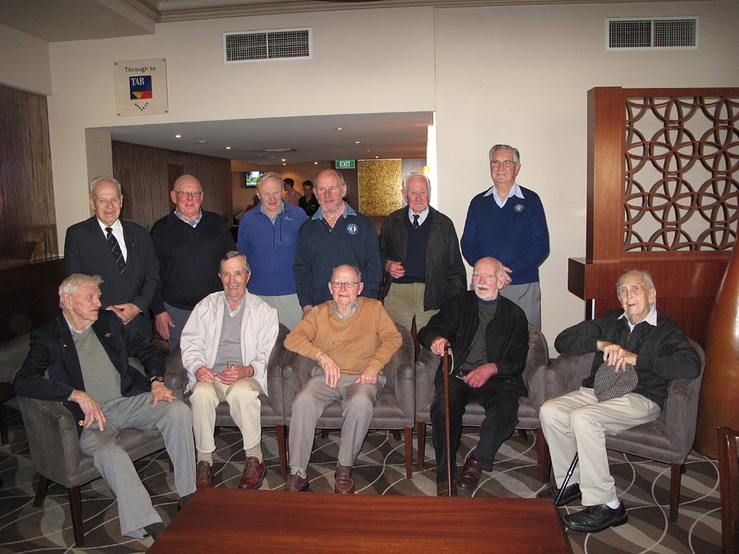
Standing from left to right: Doug Twigg (Q56, M58, C78), Ray McMahon (M63), Max Corry (M65, A68), Noel Cooper (M56), George Casasayas (Q59), Ted Giddings (M61, D63, Q65, W66)
Seated from Left: Bill Storer (Q51, M54), Alex Brown (Q56, M58, D61), Frits van Hulssen (M55, M59), Fred Elliott (H53, M55, M58), Jack Ward (Q50, M55)
The 'Chelsea Pensioners', a group of ANARE veterans, met for a special Midwinter lunch on Friday 21st June 2013.
Midwinter icy news and photos from Casey, Davis, Macquarie Island and Mawson....
(click on the station name to access...)
(click on the station name to access...)
Strategic science conference in Hobart

from AAD website
Some of the best minds in Antarctic research in Australia and New Zealand are in Hobart this week for the first such meeting of its kind between the two countries.
Three hundred delegates from around Australia and across the Tasman are meeting to exchange ideas and share information on policy, current research and operational planning on the icy continent and in the Southern Ocean.
In a welcome message via video from Canberra, Australia’s Environment Minister, Tony Burke, reflected on the foresight of earlier decision-makers who agreed to set aside an entire continent for scientific research. “But what’s made it such a permanent conservation decision is that the quality of the research that has come about as a result is second to none, and doesn’t just inform us about Antarctica, it informs us about the whole world.
“The work you do is important and I think it symbolises everything about the decisions that were made some years ago about Antarctica,” Mr Burke said. (Watch Minister Burke’s full message here)
The conference was born out of ongoing collaboration between the Australian Antarctic Division and Antarctica New Zealand who have a shared vision for Antarctica and the Southern Ocean.
It is an important forum offering the opportunity for attendees to explore how the assimilation of policy, research and operational priorities can influence Antarctic science. It will also highlight the role science plays, now and into the future, in informing and evaluating the successful environmental management and biodiversity conservation in the region and beyond.
Presentation and talks throughout the conference will cover:
Some of the best minds in Antarctic research in Australia and New Zealand are in Hobart this week for the first such meeting of its kind between the two countries.
Three hundred delegates from around Australia and across the Tasman are meeting to exchange ideas and share information on policy, current research and operational planning on the icy continent and in the Southern Ocean.
In a welcome message via video from Canberra, Australia’s Environment Minister, Tony Burke, reflected on the foresight of earlier decision-makers who agreed to set aside an entire continent for scientific research. “But what’s made it such a permanent conservation decision is that the quality of the research that has come about as a result is second to none, and doesn’t just inform us about Antarctica, it informs us about the whole world.
“The work you do is important and I think it symbolises everything about the decisions that were made some years ago about Antarctica,” Mr Burke said. (Watch Minister Burke’s full message here)
The conference was born out of ongoing collaboration between the Australian Antarctic Division and Antarctica New Zealand who have a shared vision for Antarctica and the Southern Ocean.
It is an important forum offering the opportunity for attendees to explore how the assimilation of policy, research and operational priorities can influence Antarctic science. It will also highlight the role science plays, now and into the future, in informing and evaluating the successful environmental management and biodiversity conservation in the region and beyond.
Presentation and talks throughout the conference will cover:
- Antarctic ice sheet
- Marine ecosystems
- Terrestrial ecosystems
- Land and coastal marine
- Human impacts in Antarctica
ANARE Club AGM and National council elections
from the ANARE Club website
The ANARE Club has its national office based in Melbourne, Australia.
The National committee members include representatives from several states. Members from all states are free to nominate to serve on the National Council and attend the four meetings held each year.
The National AGM is to be held at the Bayview Eden, 6 Queens Road, Melbourne 3004
on Monday 15 July 2013 at 7.30 pm.
Under the current constitution of the ANARE Club there are 13 positions available for election to National Council. These include 5 Office Bearers (President, Vice President, Treasurer, Secretary and Social Secretary) and 8 Ordinary Members who may nominate for positions of Editor, Membership officer, Web & Database Manager, Sales officer and Historian.
Please consider attending in person or placing a proxy vote.
Appointment of Proxy Form- AGM
Nomination Form AGM
from the ANARE Club website
The ANARE Club has its national office based in Melbourne, Australia.
The National committee members include representatives from several states. Members from all states are free to nominate to serve on the National Council and attend the four meetings held each year.
The National AGM is to be held at the Bayview Eden, 6 Queens Road, Melbourne 3004
on Monday 15 July 2013 at 7.30 pm.
Under the current constitution of the ANARE Club there are 13 positions available for election to National Council. These include 5 Office Bearers (President, Vice President, Treasurer, Secretary and Social Secretary) and 8 Ordinary Members who may nominate for positions of Editor, Membership officer, Web & Database Manager, Sales officer and Historian.
Please consider attending in person or placing a proxy vote.
Appointment of Proxy Form- AGM
Nomination Form AGM
Race on to save polar industy in Tasmania..

Aurora Australis in pack ice.
By Simon Bevilaqua
29 June 2013
from The Mercury newspaper website
TASMANIA risks missing a lucrative window of opportunity to expand its reputation as an Antarctic gateway, with China, the US and Korea considering where to base their operations, says Tasmanian Polar Network chairman John Brennan.
Hobart could secure these operations if the Federal Government increased its investment in Hobart's $444 million Antarctic and Southern Ocean research sector.
"The sector's economic window presently stands open for Australia, pending decisions in the very near future by nations such as China, the US and the Republic of Korea on where they will stage and support their Antarctic programs," Mr Brennan said. "We cannot be complacent. Tasmania is not the only option for international programs to stage their operations or obtain logistical support into East Antarctica.
"South Africa and New Zealand compete for this business and in some respects are better equipped with infrastructure to support sea and air logistics." He said enhanced infrastructure in Hobart such as shipping fuel procurement, storage and refuelling capability and aviation could attract northern hemisphere nations.
Mr Brennan said federal budget cuts to the Australian Antarctic Division jeopardised these plans. "If Australia, through Tasmania, does not plan, commit and prepare now, it will find itself unable to offer these nations the necessary infrastructure and support or collaboration opportunities for science and research," he said.
In a paper released today, the Tasmanian Polar Network reveals the Antarctic and Southern Ocean sector employs 1100 and was directly worth $187 million to the state in 2011-12. It estimates $5.50 is returned for every dollar invested by the Federal Government.
The independent survey estimates spending by sector employees generates 1606 jobs and an additional contribution of $256.9 million to Gross State Product, for a total of 2791 jobs and $444.2 million.
29 June 2013
from The Mercury newspaper website
TASMANIA risks missing a lucrative window of opportunity to expand its reputation as an Antarctic gateway, with China, the US and Korea considering where to base their operations, says Tasmanian Polar Network chairman John Brennan.
Hobart could secure these operations if the Federal Government increased its investment in Hobart's $444 million Antarctic and Southern Ocean research sector.
"The sector's economic window presently stands open for Australia, pending decisions in the very near future by nations such as China, the US and the Republic of Korea on where they will stage and support their Antarctic programs," Mr Brennan said. "We cannot be complacent. Tasmania is not the only option for international programs to stage their operations or obtain logistical support into East Antarctica.
"South Africa and New Zealand compete for this business and in some respects are better equipped with infrastructure to support sea and air logistics." He said enhanced infrastructure in Hobart such as shipping fuel procurement, storage and refuelling capability and aviation could attract northern hemisphere nations.
Mr Brennan said federal budget cuts to the Australian Antarctic Division jeopardised these plans. "If Australia, through Tasmania, does not plan, commit and prepare now, it will find itself unable to offer these nations the necessary infrastructure and support or collaboration opportunities for science and research," he said.
In a paper released today, the Tasmanian Polar Network reveals the Antarctic and Southern Ocean sector employs 1100 and was directly worth $187 million to the state in 2011-12. It estimates $5.50 is returned for every dollar invested by the Federal Government.
The independent survey estimates spending by sector employees generates 1606 jobs and an additional contribution of $256.9 million to Gross State Product, for a total of 2791 jobs and $444.2 million.
Glass exhibition inspired by Antarctica

ANTARCTICA - A solo exhibition by Emma Varga following her recent research study tour to Antarctica will be held at Kirra Galleries in Melbourne.
Emma is well known for her mastery of the technique of ‘multiple layers fusing’.
These objects are made from 20–400 thin transparent glass layers; a mosaic from colored glass frits and stringers is assembled on each sheet, according to a complicated three-dimensional plan.
Each sheet is slightly different from the previous one. These are then fused together in particular order, to form the image and to create a sense of movement inside a glass object
It takes two weeks to fire and slowly cool down large sculptural works, then a further two weeks to grind and polish all of the surfaces to perfection. Only then it is finally possible to see the inside; all the fine details and veil-like structures floating in the sea of clear glass. (Excerpt from Kirra galleries news)
When: 18 July 2013 to 18 August 2013
Where: Kirra Galleries, Federation Square, Melbourne
Cost: free
Emma is well known for her mastery of the technique of ‘multiple layers fusing’.
These objects are made from 20–400 thin transparent glass layers; a mosaic from colored glass frits and stringers is assembled on each sheet, according to a complicated three-dimensional plan.
Each sheet is slightly different from the previous one. These are then fused together in particular order, to form the image and to create a sense of movement inside a glass object
It takes two weeks to fire and slowly cool down large sculptural works, then a further two weeks to grind and polish all of the surfaces to perfection. Only then it is finally possible to see the inside; all the fine details and veil-like structures floating in the sea of clear glass. (Excerpt from Kirra galleries news)
When: 18 July 2013 to 18 August 2013
Where: Kirra Galleries, Federation Square, Melbourne
Cost: free
Davis MWD photos on line
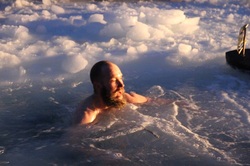
All I can say is that they breed them tough at Davis ...the Hobart swim looks a little tame in retrospect...
Click here to view
Photos and commentary supplied by Richard Youd, Comms Tech Officer with thanks.
Click here to view
Photos and commentary supplied by Richard Youd, Comms Tech Officer with thanks.
Ian Allison receives Phil Law medal
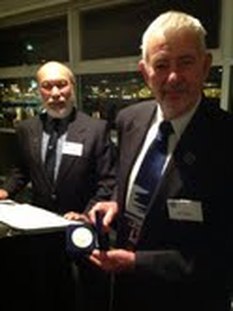
Jan Adolph (Tas branch president) with Ian Allison (on right)
Ian Allison was awarded the Phil Law medal at the Tasmanian Midwinter dinner on Saturday 22nd June 2013. Judging from the comments of attendees, Ian was a popular choice.
Ian is well known, liked and respected within the ANARE, national and international Antarctic communities.
Since wintering at Mawson in 1969, Ian has contributed to many other Antarctic and marine science expeditions in both a scientific and leadership capacity.
As well as extensive contributions to Antarctic science, Ian has always been very giving of his time and expertise to others.
An excellent choice!
Ian is well known, liked and respected within the ANARE, national and international Antarctic communities.
Since wintering at Mawson in 1969, Ian has contributed to many other Antarctic and marine science expeditions in both a scientific and leadership capacity.
As well as extensive contributions to Antarctic science, Ian has always been very giving of his time and expertise to others.
An excellent choice!
|
The Phillip Law Medal is designed to be a prestigious and ongoing tribute to Phil by the ANARE (Australian National Antarctic Research Expeditions) Club. The medal is awarded annually, and recognises an individual who has made an outstanding contribution to Antarctic affairs and the Antarctic community. This may include, but is not restricted to, contribution in the areas of science, technology, leadership, administration, environmental management, the promotion of tourism or the raising of public awareness.
|
Citation for Ian Allison
Ian Allison has worked as a glaciologist for over 40 years with more than 30 years in scientific leadership positions.
He has participated in or led 25 expeditions to Antarctica.
For more than a quarter of a century Professor Allison has played a lead role in international collaboration in glaciology and climate science through bodies such as the Scientific Committee on Antarctic Research; the World Climate Research Programme and the International Union of Geodesy and Geophysics.
He was co-Chair of the Joint Committee for the International Polar Year 2007-2008, and a Lead Author on the Intergovernmental Panel on Climate Change Fourth and Fifth Assessment Reports.
Ian’s research covers a broad field including sea ice; ice shelf ocean interaction; mass budget of the Antarctic ice sheet; and Antarctic surface weather and climate.
The Phillip Law Medal is awarded to someone who has made an outstanding contribution to Antarctic Affairs and the Antarctic community.
From his wintering at Mawson in 1969 as a newly qualified physicist Ian’s contribution to Antarctic science has grown to be enormous, but it is matched by his leadership in Antarctica, in Australia and in the global Antarctic community.
Among Ian’s Antarctic legacy are:
· Mawson winter (1969);
· Seven extended deep-field operations (including the Southern Prince Charles Mountains, Enderby Land and Heard Island);
· Numerous marine science voyages;
· Twice field leader of deep-field operations; and
· Seven time voyage leader of resupply and research voyages.
· Prof Allison was awarded the Australian Antarctic Medal in 1988;
· The Scientific Committee for Antarctic Research, Medal for International Coordination in 2012;
· A Doctor of Science (Honoris Causa) from University of Tasmania for outstanding contributions to international scientific collaboration in 2009;
· A National Australia Day Achievement Medallion in 1999 for leadership during and following the engine room fire on RSV Aurora Australis in the Antarctic in July 1998;
· An Australian Antarctic Service Medallion in 1969;
· A Ministerial Achievement Award in 2006; and
· The Future Justice Prize (shared with others) in communicating the latest advances in climate change science in 2010.
Professor Ian Allison, AAM is a worthy recipient of the Phillip Law Medal.
Ian Allison has worked as a glaciologist for over 40 years with more than 30 years in scientific leadership positions.
He has participated in or led 25 expeditions to Antarctica.
For more than a quarter of a century Professor Allison has played a lead role in international collaboration in glaciology and climate science through bodies such as the Scientific Committee on Antarctic Research; the World Climate Research Programme and the International Union of Geodesy and Geophysics.
He was co-Chair of the Joint Committee for the International Polar Year 2007-2008, and a Lead Author on the Intergovernmental Panel on Climate Change Fourth and Fifth Assessment Reports.
Ian’s research covers a broad field including sea ice; ice shelf ocean interaction; mass budget of the Antarctic ice sheet; and Antarctic surface weather and climate.
The Phillip Law Medal is awarded to someone who has made an outstanding contribution to Antarctic Affairs and the Antarctic community.
From his wintering at Mawson in 1969 as a newly qualified physicist Ian’s contribution to Antarctic science has grown to be enormous, but it is matched by his leadership in Antarctica, in Australia and in the global Antarctic community.
Among Ian’s Antarctic legacy are:
· Mawson winter (1969);
· Seven extended deep-field operations (including the Southern Prince Charles Mountains, Enderby Land and Heard Island);
· Numerous marine science voyages;
· Twice field leader of deep-field operations; and
· Seven time voyage leader of resupply and research voyages.
· Prof Allison was awarded the Australian Antarctic Medal in 1988;
· The Scientific Committee for Antarctic Research, Medal for International Coordination in 2012;
· A Doctor of Science (Honoris Causa) from University of Tasmania for outstanding contributions to international scientific collaboration in 2009;
· A National Australia Day Achievement Medallion in 1999 for leadership during and following the engine room fire on RSV Aurora Australis in the Antarctic in July 1998;
· An Australian Antarctic Service Medallion in 1969;
· A Ministerial Achievement Award in 2006; and
· The Future Justice Prize (shared with others) in communicating the latest advances in climate change science in 2010.
Professor Ian Allison, AAM is a worthy recipient of the Phillip Law Medal.
Still Wanted: MWD Photos
We would like heaps of people to contribute their photos of the Tas MWD...friends, reunions, Phil Law medallists, whoever, whatever... so we can create a photo gallery for all.
They can be emailed in any format, any size.
If you have any photos you would like to share please email them ASAP to:
We would like heaps of people to contribute their photos of the Tas MWD...friends, reunions, Phil Law medallists, whoever, whatever... so we can create a photo gallery for all.
They can be emailed in any format, any size.
If you have any photos you would like to share please email them ASAP to:
MWD roundup
And just in case attending one MWD is not enough, details on other MWDs can be accessed here...
19 June Wednesday Country - Binalong NSW
21 June Friday Victoria Melbourne
22 June Saturday South Australia Adelaide
22 June Saturday Tasmania - Hobart
21/22 June ANARE Stations Mawson, Casey, Davis and Macquarie Island.
28 June Friday Queensland - Brisbane
28 June Friday Australian Capital Territory Canberra
29 June Saturday New South Wales Sydney
And just in case attending one MWD is not enough, details on other MWDs can be accessed here...
19 June Wednesday Country - Binalong NSW
21 June Friday Victoria Melbourne
22 June Saturday South Australia Adelaide
22 June Saturday Tasmania - Hobart
21/22 June ANARE Stations Mawson, Casey, Davis and Macquarie Island.
28 June Friday Queensland - Brisbane
28 June Friday Australian Capital Territory Canberra
29 June Saturday New South Wales Sydney
THANKYOU!!!!
Thanks to Michael Carr and Marilyn Boydell for organising a great 2013 Tas Midwinter dinner.
And to Jan Adolph the Tas branch president for coordinating tours of the Australian Antarctic Division and icebreaker Aurora Australis...
And especially to everyone who attended, creating a very memorable and fun night...
...And in answer to the most frequently asked question...bookings for the 2014 Tas MWD open in late January 2014... We hope to see you there!!!
Thanks to Michael Carr and Marilyn Boydell for organising a great 2013 Tas Midwinter dinner.
And to Jan Adolph the Tas branch president for coordinating tours of the Australian Antarctic Division and icebreaker Aurora Australis...
And especially to everyone who attended, creating a very memorable and fun night...
...And in answer to the most frequently asked question...bookings for the 2014 Tas MWD open in late January 2014... We hope to see you there!!!
Mawson MWD photos online

We have a collection of Mawson Midwinter festivities photos on line...looks excellent (especially the brunch setting...). Click here...
Photos of the Davis MWD will be uploaded tonight...
Photos of the Davis MWD will be uploaded tonight...
Polar medal comes to TMAG
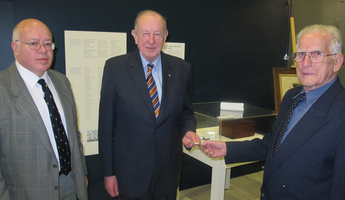
Mr Herbet Dartnell, Sir Guy Green and Mr Jim Spaulding
A significant piece of Antarctic exploration history, with a poignant story attached, has now found a new home at the Tasmanian Museum and Art Gallery (TMAG).
TMAG Director Bill Bleathman welcomed the acquisition of a Polar Medal awarded to Dunalley man Tasman Spaulding, who helped in the effort to rescue Captain Scott from the Antarctic in 1903-04.
“Mr Spaulding served as an Able Seaman on the Terra Nova, one of the two relief ships that went down to the Antarctic to effect the rescue of Captain Scott,” Mr Bleathman said. “In 1904, the Polar Medal was inaugurated for members of Captain Scott's first expedition to Antarctica, and Mr Spaulding was one of those recommended for the honour.”
However, TMAG Cultural Heritage Curator Elspeth Wishart said due to a cruel twist of fate, Mr Spaulding never received his medal and it has been sitting unclaimed for the past 108 years. “Due to a clerical error, Mr Spaulding’s first and last names were transposed on the medal, and it was gazetted to an S. Tasman,” Ms Wishart said. “When no-one of that name came forward to claim it, the medal remained in the United Kingdom.”
Ms Wishart thanked Herbert Dartnell, a past Australian National Antarctic Research Expedition (ANARE) expeditioner, who had worked hard to find a more appropriate home for Mr Spaulding’s medal. “Mr Dartnell has been researching this sad story, and in an effort to try and right the wrong he retrieved the medal from its custodians, the UK Polar Medal Committee,” Ms Wishart said. “We are delighted to assist Mr Dartnell’s efforts by providing a new home for the medal here at TMAG.”
posted 23/6/13, text and photo from TMAG website
TMAG Director Bill Bleathman welcomed the acquisition of a Polar Medal awarded to Dunalley man Tasman Spaulding, who helped in the effort to rescue Captain Scott from the Antarctic in 1903-04.
“Mr Spaulding served as an Able Seaman on the Terra Nova, one of the two relief ships that went down to the Antarctic to effect the rescue of Captain Scott,” Mr Bleathman said. “In 1904, the Polar Medal was inaugurated for members of Captain Scott's first expedition to Antarctica, and Mr Spaulding was one of those recommended for the honour.”
However, TMAG Cultural Heritage Curator Elspeth Wishart said due to a cruel twist of fate, Mr Spaulding never received his medal and it has been sitting unclaimed for the past 108 years. “Due to a clerical error, Mr Spaulding’s first and last names were transposed on the medal, and it was gazetted to an S. Tasman,” Ms Wishart said. “When no-one of that name came forward to claim it, the medal remained in the United Kingdom.”
Ms Wishart thanked Herbert Dartnell, a past Australian National Antarctic Research Expedition (ANARE) expeditioner, who had worked hard to find a more appropriate home for Mr Spaulding’s medal. “Mr Dartnell has been researching this sad story, and in an effort to try and right the wrong he retrieved the medal from its custodians, the UK Polar Medal Committee,” Ms Wishart said. “We are delighted to assist Mr Dartnell’s efforts by providing a new home for the medal here at TMAG.”
posted 23/6/13, text and photo from TMAG website
Historic Antarctic medal on display

from ABC news website
The first Polar Medal awarded to an Australian-born expeditioner has been brought to the Tasmanian Museum and Art Gallery for display.
The bronze medal was awarded to Dunalley man Tasman Spaulding for his efforts in the Antarctic rescue of Captain Robert Scott in 1903 and 1904. Clerical errors meant Mr Spaulding never received the medal, or even knew he had been awarded it.
The museum's Elspeth Wishart says the medal has been sitting in England for more than a century. "It's a fantastic opportunity and it just shows the length of the time that Australia and Tasmania has been involved in Antarctic exploration and the whole connection with the Antarctic," she said.
Herbert Dartnall, a former Antarctic expeditioner, was instrumental in bringing the medal to Tasmania.
"Much better that it comes into this lovely exhibition here at TMAG to join all the other displays than sit in a drawer in the UK where nobody looks at it and probably more people will look at it in a day here than will have seen it in the last 108, 109 years since it was awarded," he said.
posted 23/6/2013
The first Polar Medal awarded to an Australian-born expeditioner has been brought to the Tasmanian Museum and Art Gallery for display.
The bronze medal was awarded to Dunalley man Tasman Spaulding for his efforts in the Antarctic rescue of Captain Robert Scott in 1903 and 1904. Clerical errors meant Mr Spaulding never received the medal, or even knew he had been awarded it.
The museum's Elspeth Wishart says the medal has been sitting in England for more than a century. "It's a fantastic opportunity and it just shows the length of the time that Australia and Tasmania has been involved in Antarctic exploration and the whole connection with the Antarctic," she said.
Herbert Dartnall, a former Antarctic expeditioner, was instrumental in bringing the medal to Tasmania.
"Much better that it comes into this lovely exhibition here at TMAG to join all the other displays than sit in a drawer in the UK where nobody looks at it and probably more people will look at it in a day here than will have seen it in the last 108, 109 years since it was awarded," he said.
posted 23/6/2013
Cheeky solstice swim
Chaos reigned on a Sandy Bay beach on Saturday morning as hundreds got their gear off and took an icy plunge into the river.
The Mercury website has a fun (and surprisingly tasteful!) video of the swim. The best part is the squealing.... Not sure if they make that much noise in Antarctica...
Chaos reigned on a Sandy Bay beach on Saturday morning as hundreds got their gear off and took an icy plunge into the river.
The Mercury website has a fun (and surprisingly tasteful!) video of the swim. The best part is the squealing.... Not sure if they make that much noise in Antarctica...
Hobart braves the cold for nude solstice swim
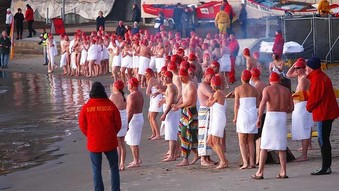
By Andrew Darby
The Age newspaper
It might have held as part of a major arts festival, but organisers dismissed any suggestion that nude winter solstice swim shortly on a freezing Hobart morning was art.
"It has no artistic merit whatsoever," said Dark Mofo festival artistic director Leigh Carmichael after he emerged from his plunge into the Derwent River on Saturday. "This is about embracing community. Embracing the solstice."
But if he had been watching, instead of swimming, he would have seen a beautiful sight. As dawn broke, the local winter river fog known as the Bridgewater Jerry raced downstream. To the beat of Buddhist drums and clash of cymbals, the swimmers lined up along a small beach at suburban Sandy Bay. Pale bodies girdled with white towels and wearing red bathing caps, they stood as a uniform group waiting for the beat to peak, suddenly stop, and red flares to fire. Then as a whooping mass they waded out.
Rather than being a perv at nudes, the sight gave pause to think about human togetherness. For a moment, the nude swimmers of Hobart had the impact that photographer Spencer Tunick gave to massed reclining bodies on Princes Bridge, Melbourne, in 2007; and on the Sydney Opera House steps in 2010.
For 84-year-old Margaret Clougher, of nearby Taroona, who swims regularly in the Derwent, the idea of a mass of naked people around her on this particular swim was irrelevant. "I didn't even think about it," Ms Clougher said.
The swim that was nearly banned also left its 203 participants mainly exhilarated. ..Organisers said the water temperature was a balmy 12 degrees, compared to two degrees of air temperature on frosted ground...
Organisers set up a ring of lifesavers on boards in the water and first aid stations on shore, including a heated emergency room equipped with defibrillators. Swimmers were told it was safest to immerse slowly.
Police, who initially banned the swim but later relented under an agreement with the festival organisers and council, said it had unfolded without a hitch. "This was done in a good context," Inspector Glen Woolley said. "But if someone turns up tomorrow and swims naked, they'll be charged."
Read full report
The Age newspaper
It might have held as part of a major arts festival, but organisers dismissed any suggestion that nude winter solstice swim shortly on a freezing Hobart morning was art.
"It has no artistic merit whatsoever," said Dark Mofo festival artistic director Leigh Carmichael after he emerged from his plunge into the Derwent River on Saturday. "This is about embracing community. Embracing the solstice."
But if he had been watching, instead of swimming, he would have seen a beautiful sight. As dawn broke, the local winter river fog known as the Bridgewater Jerry raced downstream. To the beat of Buddhist drums and clash of cymbals, the swimmers lined up along a small beach at suburban Sandy Bay. Pale bodies girdled with white towels and wearing red bathing caps, they stood as a uniform group waiting for the beat to peak, suddenly stop, and red flares to fire. Then as a whooping mass they waded out.
Rather than being a perv at nudes, the sight gave pause to think about human togetherness. For a moment, the nude swimmers of Hobart had the impact that photographer Spencer Tunick gave to massed reclining bodies on Princes Bridge, Melbourne, in 2007; and on the Sydney Opera House steps in 2010.
For 84-year-old Margaret Clougher, of nearby Taroona, who swims regularly in the Derwent, the idea of a mass of naked people around her on this particular swim was irrelevant. "I didn't even think about it," Ms Clougher said.
The swim that was nearly banned also left its 203 participants mainly exhilarated. ..Organisers said the water temperature was a balmy 12 degrees, compared to two degrees of air temperature on frosted ground...
Organisers set up a ring of lifesavers on boards in the water and first aid stations on shore, including a heated emergency room equipped with defibrillators. Swimmers were told it was safest to immerse slowly.
Police, who initially banned the swim but later relented under an agreement with the festival organisers and council, said it had unfolded without a hitch. "This was done in a good context," Inspector Glen Woolley said. "But if someone turns up tomorrow and swims naked, they'll be charged."
Read full report
One more sleep to go...
An update on the Tas MWD: parking around the venue is likely to be tight as dark MOFO festival is also hosting several events in the waterfront area. You may wish to reconsider travel plans e.g walk, drop off or walk....
Midwinter dinners kick off in Melbourne Victoria tonight and Adelaide South Australia tomorrow night. And of course the Antarctic stations are celebrating today...from what we are hearing...BIG TIME!! Best wishes to all..
ANARE Tas branch
BTW: Here is some info on the dinner and Hobart generally that may help your planning for the big night...
An update on the Tas MWD: parking around the venue is likely to be tight as dark MOFO festival is also hosting several events in the waterfront area. You may wish to reconsider travel plans e.g walk, drop off or walk....
Midwinter dinners kick off in Melbourne Victoria tonight and Adelaide South Australia tomorrow night. And of course the Antarctic stations are celebrating today...from what we are hearing...BIG TIME!! Best wishes to all..
ANARE Tas branch
BTW: Here is some info on the dinner and Hobart generally that may help your planning for the big night...
Master mariner (AKA Scottie) awarded Antarctic medal

text by David Benuik
from The Mercury Newspaper, Hobart.
FROM the moment the Antarctic icebreaker Aurora Australis leaves the wharf until the moment it docks, Captain Scott Laughlin takes nothing for granted.
The skipper of the bright orange Hobart-based icon navigates some of the world's biggest seas and trickiest harbours in the six months he spends at sea each year. "You can encounter anything from force 12-plus gales with anything up to 20-plus metre seas," he says. That's hurricane-strength gales at close to 120km/h when the sea becomes a mess of white. "Although the ship can handle it and the cargo can handle it and the crew can handle it, there's a high possibility of hurting someone on board with the heavy roll," he continues. "You heave to, put your head to sea and sit there at minimum speed until the storm goes through and that can be anything up to 72 hours."
Captain Laughlin has been making the voyage from Hobart to Antarctica for 20 years, more than 10 as the Aurora's skipper.
The 43-year-old's dedication to making it safe has been recognised with the Australian Antarctic Medal (AAM), appropriately awarded in midwinter by the Governor-General. The trip south is just the first part of a journey that can also be hit by blizzards and pack-ice, which can trap or damage a ship. "Nothing down south can be taken for granted, from the time you're leaving the wharf until the time you're getting back to the wharf," he says. "You can't be complacent at all otherwise Antarctica bites."
Captain Laughlin's time aboard has brought its share of hairy moments, including two fires. In 2002 it took the Aurora's 24-person crew almost five days to break another vessel, Polar Bird, out of pack ice it had been stuck in for six weeks. Then in 2011 Captain Laughlin led the rescue of a stricken fishing boat off Macquarie Island.
A childhood dream to visit Antarctica led him to switch from a commercial shipping job in 1994 and, apart from the difficulty of being away from his two children, the Master Mariner hasn't looked back. "I love being down in the ice -- there's the animals and the kind of people you have on board," he says. "The people that go down south are a cut above the rest. They want to do things."
Seabird ecologist Dr Barbara Wienecke has also been awarded the AAM for her research into the effects of commercial fishing on bird populations.
posted 21/6/2013
from The Mercury Newspaper, Hobart.
FROM the moment the Antarctic icebreaker Aurora Australis leaves the wharf until the moment it docks, Captain Scott Laughlin takes nothing for granted.
The skipper of the bright orange Hobart-based icon navigates some of the world's biggest seas and trickiest harbours in the six months he spends at sea each year. "You can encounter anything from force 12-plus gales with anything up to 20-plus metre seas," he says. That's hurricane-strength gales at close to 120km/h when the sea becomes a mess of white. "Although the ship can handle it and the cargo can handle it and the crew can handle it, there's a high possibility of hurting someone on board with the heavy roll," he continues. "You heave to, put your head to sea and sit there at minimum speed until the storm goes through and that can be anything up to 72 hours."
Captain Laughlin has been making the voyage from Hobart to Antarctica for 20 years, more than 10 as the Aurora's skipper.
The 43-year-old's dedication to making it safe has been recognised with the Australian Antarctic Medal (AAM), appropriately awarded in midwinter by the Governor-General. The trip south is just the first part of a journey that can also be hit by blizzards and pack-ice, which can trap or damage a ship. "Nothing down south can be taken for granted, from the time you're leaving the wharf until the time you're getting back to the wharf," he says. "You can't be complacent at all otherwise Antarctica bites."
Captain Laughlin's time aboard has brought its share of hairy moments, including two fires. In 2002 it took the Aurora's 24-person crew almost five days to break another vessel, Polar Bird, out of pack ice it had been stuck in for six weeks. Then in 2011 Captain Laughlin led the rescue of a stricken fishing boat off Macquarie Island.
A childhood dream to visit Antarctica led him to switch from a commercial shipping job in 1994 and, apart from the difficulty of being away from his two children, the Master Mariner hasn't looked back. "I love being down in the ice -- there's the animals and the kind of people you have on board," he says. "The people that go down south are a cut above the rest. They want to do things."
Seabird ecologist Dr Barbara Wienecke has also been awarded the AAM for her research into the effects of commercial fishing on bird populations.
posted 21/6/2013
Science & sea capture 2013 Antarctic medals

21st June 2013
From AAD website.
Seabird ecologist, Dr Barbara Wienecke and master mariner, Captain Scott Laughlin are the recipients of Australian Antarctic Medals for 2013. Governor General, Ms Quentin Bryce AC CVO today announced the awards which are given for outstanding service to the Australian Antarctic program.
Environment Minister Tony Burke congratulated Dr Wienecke and Captain Laughlin saying that their focus and dedication over many years had made a significant contribution to Australia’s work in Antarctica and the Southern Ocean.
Dr Wienecke’s Medal is awarded for her exemplary research into sea birds and the effect of commercial fishing operations on sea bird populations.
“When I visited Casey Station last year I was blown away by the work that is done in Antarctica – it’s some of the most extraordinary environmental work in the world,” Mr Burke said. “The work that is done in Antarctica on all levels is highly valued by this government and I thank them for what they do. I congratulate Dr Wienecke and Captain Laughlin on winning this prestigious award. “It's inspirational to see Douglas Mawson's legacy continue today, more than a century on, as Australians dedicate their work to the science of Antarctica and the Southern Ocean and supporting Australia's presence on the frozen continent.”
Dr Wienecke is highly regarded on the world stage and should be applauded for her long-term work with sea birds, particularly penguins, often at remote field locations in cramped and uncomfortable conditions and at the mercy of extreme weather conditions.
Over the past two decades, while at the Australian Antarctic Division, she has also participated in several studies carried out at sea on long-line fishing vessels to decrease the by-catch of sea birds.
Much of her research has been considered by the Scientific Committee of the Convention for the Conservation of Antarctic Marine Living Resources and supported Government objectives in that forum.
Captain Scott Laughlin’s name is synonymous with Antarctic voyages stretching back to 1990, first as a crew member of Aurora Australis then as ship’s master from 2002.
The Minister said that Captain Laughlin’s deep appreciation of, and affinity with, Australia’s Antarctic program has resulted in broad respect across the Antarctic community. Read more...
From AAD website.
Seabird ecologist, Dr Barbara Wienecke and master mariner, Captain Scott Laughlin are the recipients of Australian Antarctic Medals for 2013. Governor General, Ms Quentin Bryce AC CVO today announced the awards which are given for outstanding service to the Australian Antarctic program.
Environment Minister Tony Burke congratulated Dr Wienecke and Captain Laughlin saying that their focus and dedication over many years had made a significant contribution to Australia’s work in Antarctica and the Southern Ocean.
Dr Wienecke’s Medal is awarded for her exemplary research into sea birds and the effect of commercial fishing operations on sea bird populations.
“When I visited Casey Station last year I was blown away by the work that is done in Antarctica – it’s some of the most extraordinary environmental work in the world,” Mr Burke said. “The work that is done in Antarctica on all levels is highly valued by this government and I thank them for what they do. I congratulate Dr Wienecke and Captain Laughlin on winning this prestigious award. “It's inspirational to see Douglas Mawson's legacy continue today, more than a century on, as Australians dedicate their work to the science of Antarctica and the Southern Ocean and supporting Australia's presence on the frozen continent.”
Dr Wienecke is highly regarded on the world stage and should be applauded for her long-term work with sea birds, particularly penguins, often at remote field locations in cramped and uncomfortable conditions and at the mercy of extreme weather conditions.
Over the past two decades, while at the Australian Antarctic Division, she has also participated in several studies carried out at sea on long-line fishing vessels to decrease the by-catch of sea birds.
Much of her research has been considered by the Scientific Committee of the Convention for the Conservation of Antarctic Marine Living Resources and supported Government objectives in that forum.
Captain Scott Laughlin’s name is synonymous with Antarctic voyages stretching back to 1990, first as a crew member of Aurora Australis then as ship’s master from 2002.
The Minister said that Captain Laughlin’s deep appreciation of, and affinity with, Australia’s Antarctic program has resulted in broad respect across the Antarctic community. Read more...
Haute cuisine and icy dip for solstice
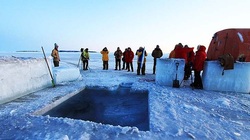
2011 midwinter swim hole
By Andrew Stephens
the Age newspaper
June 15 2013.
When midwinter solstice hits the southern hemisphere next week on June 21, staff at the Australian Antarctic Division's Casey Station won't be avoiding the oppressive dark and chill of the season.
They will be jumping into the icy waters, having a ski, hosting an impressive art show and sitting down to a lavish 11-course degustation likely to last five hours.
Winter solstice is the isolated Antarctic station's biggest annual celebration. It is the year's longest night when daytime shrinks to nothing at the South Pole. At Casey, 50 kilometres outside the Antarctic Circle, there will be about two hours of daylight on June 21.
According to station leader Allan Cooney, who began his one-year term in December, most of the 21 staff miss out on Christmas with their families, so solstice is a welcome substitute. ''The days get long and cold,'' he said last week. ''Daily temperatures around this time of year are around the minus 20s. We have regular blizzards, this year lots of snowfall, and constant winds. It's a tough environment.''
After taking a spin on their recreational ski loop, staff will use a chainsaw to cut a rectangular hole in the ice for a plunge into the sea, estimated at minus 1.6 degrees. While Mr Cooney - who has spent most of his working life in Queensland farming - said the plunge used to be a rite of passage, these days it is seen as fun: no one is expected to do it and they must all pass medicals. A doctor will be on site at the hole, where they will also set up a mobile spa bath. Mr Cooney sent a crew out last week to measure ice depths to make sure they can move safely around the hole before they cut it.
''People get in and out pretty quickly, the spa is on standby so they get straight into the warm water,'' he said, noting that they all wear ''nothing fancy - just budgie smugglers and board shorts'', as well as protective hand and foot gear.
''Outside air temps are more likely to be around minus 20 degrees and wind chill can also be a factor; however, we do have cut-off points where at my discretion I can say, no go, if the conditions are too extreme. If it is too cold, too windy or snowy, the possible presence of leopard seals (very low at this time of year) are all considerations.''
It is the extraordinary feast later in the day that really warms everyone up, however. MrCooney said the chef is given free rein, breaking away from the staple foods the company usually exists on. ''This is a particular high point in the year for our chef who is very, very good and has been an executive chef in some of Australia's best restaurants,'' he said. ''While we are concentrating on the food this year, there have been things like ice sculptures and grand design masterpieces of the culinary decorative arts done in years past.''
Mr Cooney and his colleagues, as part of their rituals, had hoped to have a video hook-up with their kindred spirits far above at the International Space Station (''We've got a lot in common,'' Mr Cooney said) but it didn't work out. They will make do with an art show curated by Mr Cooney, an accomplished artist: he has been hosting weekly art classes and has discovered some real talents.
Read more: http://www.theage.com.au/national/haute-cuisine-and-icy-dip-for-solstice-20130614-2o9rb.html#ixzz2WnKgDW8a
the Age newspaper
June 15 2013.
When midwinter solstice hits the southern hemisphere next week on June 21, staff at the Australian Antarctic Division's Casey Station won't be avoiding the oppressive dark and chill of the season.
They will be jumping into the icy waters, having a ski, hosting an impressive art show and sitting down to a lavish 11-course degustation likely to last five hours.
Winter solstice is the isolated Antarctic station's biggest annual celebration. It is the year's longest night when daytime shrinks to nothing at the South Pole. At Casey, 50 kilometres outside the Antarctic Circle, there will be about two hours of daylight on June 21.
According to station leader Allan Cooney, who began his one-year term in December, most of the 21 staff miss out on Christmas with their families, so solstice is a welcome substitute. ''The days get long and cold,'' he said last week. ''Daily temperatures around this time of year are around the minus 20s. We have regular blizzards, this year lots of snowfall, and constant winds. It's a tough environment.''
After taking a spin on their recreational ski loop, staff will use a chainsaw to cut a rectangular hole in the ice for a plunge into the sea, estimated at minus 1.6 degrees. While Mr Cooney - who has spent most of his working life in Queensland farming - said the plunge used to be a rite of passage, these days it is seen as fun: no one is expected to do it and they must all pass medicals. A doctor will be on site at the hole, where they will also set up a mobile spa bath. Mr Cooney sent a crew out last week to measure ice depths to make sure they can move safely around the hole before they cut it.
''People get in and out pretty quickly, the spa is on standby so they get straight into the warm water,'' he said, noting that they all wear ''nothing fancy - just budgie smugglers and board shorts'', as well as protective hand and foot gear.
''Outside air temps are more likely to be around minus 20 degrees and wind chill can also be a factor; however, we do have cut-off points where at my discretion I can say, no go, if the conditions are too extreme. If it is too cold, too windy or snowy, the possible presence of leopard seals (very low at this time of year) are all considerations.''
It is the extraordinary feast later in the day that really warms everyone up, however. MrCooney said the chef is given free rein, breaking away from the staple foods the company usually exists on. ''This is a particular high point in the year for our chef who is very, very good and has been an executive chef in some of Australia's best restaurants,'' he said. ''While we are concentrating on the food this year, there have been things like ice sculptures and grand design masterpieces of the culinary decorative arts done in years past.''
Mr Cooney and his colleagues, as part of their rituals, had hoped to have a video hook-up with their kindred spirits far above at the International Space Station (''We've got a lot in common,'' Mr Cooney said) but it didn't work out. They will make do with an art show curated by Mr Cooney, an accomplished artist: he has been hosting weekly art classes and has discovered some real talents.
Read more: http://www.theage.com.au/national/haute-cuisine-and-icy-dip-for-solstice-20130614-2o9rb.html#ixzz2WnKgDW8a
Tasmanian Science Excellence Awards
Applications are open until Wednesday 17 July 2013!
The Tasmanian Science Excellence Awards will showcase Tasmania’s outstanding scientist and also highlight the importance of science and research for the growth of Tasmania’s community and economy. Please circulate this email to all of your friends, family and colleagues who may be interested in applying. There will be two categories for nominations:
Tasmania’s Scientist of the Year Award
This Award recognises the achievements of the state's leading science and technology researchers over the past 12 months. The winner will be presented with a trophy and a $10 000 cheque.
Tasmanian Science Innovation Award
This Award will recognise a business or individual for their innovative science and technology product, process or service during the 2012/13 financial year. The winner will be presented with a trophy and a $5 000 cheque.
If you or someone you know has had great science achievements in the last 12 months, you can find the application forms here.
For more information please contact Dr Diana Nahodil on (03) 6233 5949 or at[email protected]
Applications are open until Wednesday 17 July 2013!
The Tasmanian Science Excellence Awards will showcase Tasmania’s outstanding scientist and also highlight the importance of science and research for the growth of Tasmania’s community and economy. Please circulate this email to all of your friends, family and colleagues who may be interested in applying. There will be two categories for nominations:
Tasmania’s Scientist of the Year Award
This Award recognises the achievements of the state's leading science and technology researchers over the past 12 months. The winner will be presented with a trophy and a $10 000 cheque.
Tasmanian Science Innovation Award
This Award will recognise a business or individual for their innovative science and technology product, process or service during the 2012/13 financial year. The winner will be presented with a trophy and a $5 000 cheque.
If you or someone you know has had great science achievements in the last 12 months, you can find the application forms here.
For more information please contact Dr Diana Nahodil on (03) 6233 5949 or at[email protected]
Tasmanian 2013 Midwinter Dinner
Let the party (almost) begin!!
Here is some info on the dinner and Hobart generally that may help your planning for the big night...
Let the party (almost) begin!!
Here is some info on the dinner and Hobart generally that may help your planning for the big night...
Midwinter memorial ceremony
The Australian Antarctic Division has invited all ANARE to attend the Midwinter memorial ceremony. As part of this year’s Midwinter the AAD are using the occasion to host a short service to dedicate a plaque to the three Canadian aircrew that perished on a flight from the South Pole to Terra Nova Bay. Mr David McKinnon, Acting Head of Mission from the High Commission of Canada is attending the event.
Whether or not you are able to attend, it is a beautiful invitation honoring those who have died in the Antarctic and Subantarctic while working with ANARE and the AAD...
The Australian Antarctic Division has invited all ANARE to attend the Midwinter memorial ceremony. As part of this year’s Midwinter the AAD are using the occasion to host a short service to dedicate a plaque to the three Canadian aircrew that perished on a flight from the South Pole to Terra Nova Bay. Mr David McKinnon, Acting Head of Mission from the High Commission of Canada is attending the event.
Whether or not you are able to attend, it is a beautiful invitation honoring those who have died in the Antarctic and Subantarctic while working with ANARE and the AAD...
Seating for the 2013 Tas Midwinter dinner has been released...click here for details...
Tours of Aust Antarctic Division

Generally access to the Australian Antarctic Division is limited to the foyer display and the cafe, however the Division has kindly offered to host a special tour for ANARE expeditioners and their guests for the Midwinter festivities.
This year there will be a tour on the Friday 21st June at 11am. Highlights include opportunities to view the Clothing store and warehouse, Instrument workshop, and Artefacts store. Around 2 hours should be allowed for the visit.
There is no charge for the tour, but there is a limit of 20 people.
Please meet at the main entrance of the AAD, Channel Hwy, Kingston at 10.45 am. The tour will start promptly at 11am. Covered /enclosed shoes will need to be worn as a number of workshop areas are being accessed.
If you would like to attend please email Jan Adolph
If transport to and from the Australian Antarctic Division at Kingston (about 15 kilometres south of Hobart) is required, please contact us so we can advise of transport arrangements.
Where: Australian Antarctic Division, Kingston, Hobart
When: Friday 21st June 11am.
Cost: free
This year there will be a tour on the Friday 21st June at 11am. Highlights include opportunities to view the Clothing store and warehouse, Instrument workshop, and Artefacts store. Around 2 hours should be allowed for the visit.
There is no charge for the tour, but there is a limit of 20 people.
Please meet at the main entrance of the AAD, Channel Hwy, Kingston at 10.45 am. The tour will start promptly at 11am. Covered /enclosed shoes will need to be worn as a number of workshop areas are being accessed.
If you would like to attend please email Jan Adolph
If transport to and from the Australian Antarctic Division at Kingston (about 15 kilometres south of Hobart) is required, please contact us so we can advise of transport arrangements.
Where: Australian Antarctic Division, Kingston, Hobart
When: Friday 21st June 11am.
Cost: free
Tours of the Aurora Australis

The Masters of the Aurora Australis in conjunction with P&O have offered to run a tour of the Australian icebreaker Aurora Australis.
A tour of the Aurora Australis will be on the 22nd June 2pm.
Please meet outside the front doors (city side) of Princess Wharf 1...just next to Salamanca.
Covered /enclosed shoes will need to be worn
Please contact Jan Adolph if you would like to attend
When: Saturday 22nd June 2013 at 2pm
Where: Please meet outside the front doors (city side) of Princess Wharf 1...just next to Salamanca at 13.45
Cost: free
A tour of the Aurora Australis will be on the 22nd June 2pm.
Please meet outside the front doors (city side) of Princess Wharf 1...just next to Salamanca.
Covered /enclosed shoes will need to be worn
Please contact Jan Adolph if you would like to attend
When: Saturday 22nd June 2013 at 2pm
Where: Please meet outside the front doors (city side) of Princess Wharf 1...just next to Salamanca at 13.45
Cost: free
Purchase Pinto at Tas MWD
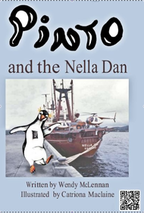
Wendy McLennan has recently published a children's book on a magical penguin called Pinto.
Several ANARE members have expressed interest in purchasing the book.
Wendy will be attending the Tasmanian MWD in Hobart.
Copies of the book can be purchased from the Hobart bookshop in Salamanca square or from Wendy directly at the MWD. If you would like to preorder a copy from Wendy please email her directly. Cost $20.
And a reminder that there will be a book launch at the Hobart bookshop at 17.30 on Thursday 19th June. All welcome!
Several ANARE members have expressed interest in purchasing the book.
Wendy will be attending the Tasmanian MWD in Hobart.
Copies of the book can be purchased from the Hobart bookshop in Salamanca square or from Wendy directly at the MWD. If you would like to preorder a copy from Wendy please email her directly. Cost $20.
And a reminder that there will be a book launch at the Hobart bookshop at 17.30 on Thursday 19th June. All welcome!
Wanted: ANARE Tas MWD tickets
We have a number of people who missed out on tickets to the Tasmanian MWD.
We hope that all those that have booked and paid will be able to attend. However if you are unable to use your ticket please contact Michael Carr /Marilyn Boydell ASAP and we will organise a refund for you...and a ticket for a person on the waiting list.
Those people who are on the waiting list who have paid, but are not successful in getting a ticket. please contact Michael after the 23rd June 2013 with your banking details so your money can be returned to you.
The seating list will be published on the website and via newsletter on Sunday 16th June....
We have a number of people who missed out on tickets to the Tasmanian MWD.
We hope that all those that have booked and paid will be able to attend. However if you are unable to use your ticket please contact Michael Carr /Marilyn Boydell ASAP and we will organise a refund for you...and a ticket for a person on the waiting list.
Those people who are on the waiting list who have paid, but are not successful in getting a ticket. please contact Michael after the 23rd June 2013 with your banking details so your money can be returned to you.
The seating list will be published on the website and via newsletter on Sunday 16th June....
Macquarie Island on ABC1

The ABC will screen a new three part series, Australia’s Remote Islands, presented by 7.30 reporter Tracy Bowden exploring three unique Australian islands
It begins with a look at Lord Howe Island Sunday, 16 June at 6pm on ABC1.
The following week (Sunday 23rd June 2013) the show will feature Macquarie Island.
An interview by Tim Cox with the producer Ben Hawke which was broadcast on ABC Brisbane Drive can be accessed here.. The second half of the conversation deals with Macca...
Thanks to Bill Burch for the info...
It begins with a look at Lord Howe Island Sunday, 16 June at 6pm on ABC1.
The following week (Sunday 23rd June 2013) the show will feature Macquarie Island.
An interview by Tim Cox with the producer Ben Hawke which was broadcast on ABC Brisbane Drive can be accessed here.. The second half of the conversation deals with Macca...
Thanks to Bill Burch for the info...
Strategic Science in Antarctica
The 'Strategic Science in Antarctica' Conference will be held in Hobart from 24-28 June 2013 at the University of Tasmania.
The conference will focus on current research occurring on the icy continent and in the Southern Ocean. Featuring a number of keynote speakers, science talks, poster displays and post-conference workshops, the conference will give researchers the opportunity to collaborate and share their research. Talks and workshops on policy, operational planning, science communications and the application process for research in Antarctica are also planned.
This inaugural joint conference is the result of a collaboration between the Australian Antarctic Division and Antarctica New Zealand. These two organisations have a shared vision for Antarctica and the Southern Ocean: 'Valued, Protected And Understood'. The conference is an important professional forum for the Antarctic science community to meet and exchange ideas.
Registrations for the conference have now closed. A full conference programi s now available.
The 'Strategic Science in Antarctica' Conference will be held in Hobart from 24-28 June 2013 at the University of Tasmania.
The conference will focus on current research occurring on the icy continent and in the Southern Ocean. Featuring a number of keynote speakers, science talks, poster displays and post-conference workshops, the conference will give researchers the opportunity to collaborate and share their research. Talks and workshops on policy, operational planning, science communications and the application process for research in Antarctica are also planned.
This inaugural joint conference is the result of a collaboration between the Australian Antarctic Division and Antarctica New Zealand. These two organisations have a shared vision for Antarctica and the Southern Ocean: 'Valued, Protected And Understood'. The conference is an important professional forum for the Antarctic science community to meet and exchange ideas.
Registrations for the conference have now closed. A full conference programi s now available.
Antarctic's ice shelves melting from bottom up

By Jane J. Lee
National Geographic
Published June 13, 2013
Antarctica's ice shelves are losing it.
Conventional wisdom holds that ice shelves—the seaward extension of glaciers on land—lose most of their mass by shedding icebergs. But new research finds that there's another weight-loss program at work—many ofAntarctica's ice shelves are melting away from the bottom up.
Glacier experts have known for years that ice shelves melt at the boundary between the ice and the sea. But previous studies have only looked at individual glaciers and ice shelves in Greenland and Alaska, said Erin Pettit, a glacier expert at the University of Alaska in Fairbanks who was not involved in the new research.
A study published today in the journal Science has gone beyond those individual observations and found that about 55 percent of the mass lost from ice shelves in Antarctica is through melting at the ice-ocean boundary. (Learn more about The Big Thaw in National Geographic magazine.)
"This places more importance on the role of the ocean," said study leader Eric Rignot, a glacier expert with a joint appointment at the University of California, Irvine and the Jet Propulsion Laboratory in Pasadena. "If the ocean melts these ice shelves, it will affect the ice sheets on land."
That's because ice shelves act like plugs in a bottle, explained Rignot: They regulate the flow of ice from the glacier into the ocean. Without them, glaciers have been known to accelerate into the sea, contributing to rising water levels. (Related: "New York's Sea Level Plan: Will It Play in Miami?")
The results could have implications for how Antarctica changes due to global warming, which has already had a hand in melting in some parts of the continent. Read more...
National Geographic
Published June 13, 2013
Antarctica's ice shelves are losing it.
Conventional wisdom holds that ice shelves—the seaward extension of glaciers on land—lose most of their mass by shedding icebergs. But new research finds that there's another weight-loss program at work—many ofAntarctica's ice shelves are melting away from the bottom up.
Glacier experts have known for years that ice shelves melt at the boundary between the ice and the sea. But previous studies have only looked at individual glaciers and ice shelves in Greenland and Alaska, said Erin Pettit, a glacier expert at the University of Alaska in Fairbanks who was not involved in the new research.
A study published today in the journal Science has gone beyond those individual observations and found that about 55 percent of the mass lost from ice shelves in Antarctica is through melting at the ice-ocean boundary. (Learn more about The Big Thaw in National Geographic magazine.)
"This places more importance on the role of the ocean," said study leader Eric Rignot, a glacier expert with a joint appointment at the University of California, Irvine and the Jet Propulsion Laboratory in Pasadena. "If the ocean melts these ice shelves, it will affect the ice sheets on land."
That's because ice shelves act like plugs in a bottle, explained Rignot: They regulate the flow of ice from the glacier into the ocean. Without them, glaciers have been known to accelerate into the sea, contributing to rising water levels. (Related: "New York's Sea Level Plan: Will It Play in Miami?")
The results could have implications for how Antarctica changes due to global warming, which has already had a hand in melting in some parts of the continent. Read more...
MACCA MWD invite
Barend (Barry) Becker,who is currently wintering on Macquarie Island,has forwarded a general invitation to all ANARE folk for the Macca MWD. It goes without saying that this will be an amazing night which will be talked about for years.
if you are interested in attending, or which to make your excuses, please email Barend (Barry) by the 18th June 2013.
Barend has been keeping a blog on his time on Macquarie Island. It can be found at: http://bazintaz.blogspot.com.au
if you are interested in attending, or which to make your excuses, please email Barend (Barry) by the 18th June 2013.
Barend has been keeping a blog on his time on Macquarie Island. It can be found at: http://bazintaz.blogspot.com.au
Davis MWD invite
Hobart Book Launch for Pinto, the most amazing penguin

Wendy Mclennan's new book "Pinto and the Nella Dan' will be launched at the Bookshop, Salamanca Square in Hobart, on Thursday 20th June 17.30. All ANARE and friends are welcome to attend.
Wendy is well known to ANARE folk, having worked at the Division and travelled south on numerous occasions.
The book describes how Pinto was developed by Dave, a chief environmental scientist who also specialises in robotics and regularly travels to Antarctica. Pinto is a powerful computer with a bright child like personality and loves to learn. His curiosity often gets him into trouble. He has a microphone as ears and cameras as eyes. His tuxedo body suit is a mixture of all the penguins so can fit into any rookery. He can do mostly what real penguins do and much more. He stores valuable information into his little state-of-the-art microcomputer brain which is smarter and quicker than any human being. What’s more he can talk to both humans and animals. He was designed to help scientists working outdoors and this tale is about all his adventures.
Pinto is loosely based on the real-life expedition and final sinking of the Nella Dan in 1987. Pinto faces many challenges - once when he is collecting marine samples he is almost swallowed by a whale, but he is able to use his turbo switch to get out of trouble. He is clever, brave and curious but when his batteries drain he is helpless. When the Nella Dan runs aground he is swept overboard, his batteries deplete, but all is not lost as he turns on his special locator beacon.
Wendy McLennan spent seven years working with many scientists dedicated to the continuing study of Antarctica. As scientific and voyage coordinator she tells the story through her first hand knowledge of Antarctic expeditions. She always regretted that her children could not share her experiences. So she adds a twist to the real live stories through Pinto to bring the excitement of expeditions and adventure in Antarctica to modern children who are very computer aware.
When: Thursday 20th June at 5.30 pm
Where:The Bookshop, Salamanca Square, Hobart
Cost: free
For more details on Pinto please click here....
Phil Law article by Quilty & Lugg online
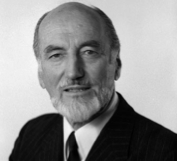
Phillip Law is renowned as the first and best-recognized Director of the Australian Antarctic Division, responsible for conduct of the Australian National Antarctic Research Expeditions (ANARE) 1947-66, with the emphasis on science. He established most of the ANARE traditions and oversaw the location and establishment of all Australian Antarctic stations. He was widely recognized and decorated for both national and international influence. His main trait was perseverance in fighting to achieve his goals. In 1966, he became Chief Executive of the Victoria Institute of Colleges to develop, highly successfully, non-university tertiary education in Victoria. Throughout his professional career, he was a prolific diarist, writer and publicist.
Patrick Quilty and Des Lugg have written an interesting and informed article which can be accessed online. The article will also be published in The Aurora at a later date.
The paper reviews Law's development, his career, particularly in the Australian Antarctic Division, and his role in the Victoria Institute of Colleges. It includes his list of awards, his memberships of societies, and importantly, the most comprehensive and up to date list of his publications.
The publication is an Australian Academy of Science publication produced through the publishing arm of CSIRO.
Patrick Quilty and Des Lugg have written an interesting and informed article which can be accessed online. The article will also be published in The Aurora at a later date.
The paper reviews Law's development, his career, particularly in the Australian Antarctic Division, and his role in the Victoria Institute of Colleges. It includes his list of awards, his memberships of societies, and importantly, the most comprehensive and up to date list of his publications.
The publication is an Australian Academy of Science publication produced through the publishing arm of CSIRO.
European Group 2013 MidWinter Lunch

Woking, Surrey, United Kingdom Saturday 18 May 2013
from Paul Gigg (M’90, Q’98) and Ian Thomas (M’67, NZARP ’75-‘84)
This was an early celebration on 18 May of Mid Winter 2013, to both commemorate the centenary of the formative Australasian Antarctic Expedition (AAE) of 1911-1914, led by Douglas Mawson, and his birthday on 05 May 1882 in Shipley, Yorkshire; plus his return to Cape Denison in early 2013 after the loss of Ninnis & Mertz. [As it happens Mawson’s birthplace is some two miles from where one of the ANARE-Eur Group lives, with another of the Group having “geologised” to the top of Mt Gaussberg, and viewed the message left by one of the AAE Western Base’s Sledging Parties over Christmas in 1912].
Thirteen old and new friends (including spouses and partners) met again for our third year and enjoyed comparing experiences that ranged from the handover of Wilkes from the Americans to the Australians, to weather vagaries on the Peninsula at Hope Bay that even exceeded the unsettled nature of UK Surrey’s attempts to thwart our garden Lunch !!
Chris Simpson, visiting from Australia, led us through some extra insights into Douglas Mawson – the person - in addition to the well recalled highlights when he was with Shackleton and later leading the AAE. Chris Brading, after bringing us very warm fraternal greetings from the British Antarctic Survey Club, offered his own insights into life as a surveyor at Hope Bay – experiences we could all well identify with.
In a developing tradition it was a privilege too to welcome visiting Australian ANARE representatives: George Cresswell from Tasmania, Chris Simpson from Victoria, and David Dodd (ANARE Council) per telephone from Aberdeen.
The ANARE-Eur Group presently has a core of some 18 members (plus spouses and partners) who predominantly reside in Western Europe, with the majority scattered through the UK. After co-ordinating the Group for some three years Paul Gigg and Ian Thomas, who are both returning to Australasia, opened the discussion on how the Group wished to proceed, or not; and included the results of a survey of the Group to include the views of those not present. In discussion the Group decided that they would like to continue, to continue as an informal fraternal Group but being aligned with the ANARE Club Council, to continue with the Lunch format, and to appreciate the fraternal “committee-level” links with the BAS Club (which was reciprocated). To take this forward the kind offers from John Barnes and Rodney Buckland were accepted and they will now liaise and link and plan the ways forward.
If any Club Members reading this, and not already on the ANARE-Eur Group email list, would be interested in keeping aware of the ANARE-Eur Group’s activities, please email either: John Barnes (MacqIs ‘67/’68 or Rodney Buckland (Mawson ’71)
posted 12th June 2013
from Paul Gigg (M’90, Q’98) and Ian Thomas (M’67, NZARP ’75-‘84)
This was an early celebration on 18 May of Mid Winter 2013, to both commemorate the centenary of the formative Australasian Antarctic Expedition (AAE) of 1911-1914, led by Douglas Mawson, and his birthday on 05 May 1882 in Shipley, Yorkshire; plus his return to Cape Denison in early 2013 after the loss of Ninnis & Mertz. [As it happens Mawson’s birthplace is some two miles from where one of the ANARE-Eur Group lives, with another of the Group having “geologised” to the top of Mt Gaussberg, and viewed the message left by one of the AAE Western Base’s Sledging Parties over Christmas in 1912].
Thirteen old and new friends (including spouses and partners) met again for our third year and enjoyed comparing experiences that ranged from the handover of Wilkes from the Americans to the Australians, to weather vagaries on the Peninsula at Hope Bay that even exceeded the unsettled nature of UK Surrey’s attempts to thwart our garden Lunch !!
Chris Simpson, visiting from Australia, led us through some extra insights into Douglas Mawson – the person - in addition to the well recalled highlights when he was with Shackleton and later leading the AAE. Chris Brading, after bringing us very warm fraternal greetings from the British Antarctic Survey Club, offered his own insights into life as a surveyor at Hope Bay – experiences we could all well identify with.
In a developing tradition it was a privilege too to welcome visiting Australian ANARE representatives: George Cresswell from Tasmania, Chris Simpson from Victoria, and David Dodd (ANARE Council) per telephone from Aberdeen.
The ANARE-Eur Group presently has a core of some 18 members (plus spouses and partners) who predominantly reside in Western Europe, with the majority scattered through the UK. After co-ordinating the Group for some three years Paul Gigg and Ian Thomas, who are both returning to Australasia, opened the discussion on how the Group wished to proceed, or not; and included the results of a survey of the Group to include the views of those not present. In discussion the Group decided that they would like to continue, to continue as an informal fraternal Group but being aligned with the ANARE Club Council, to continue with the Lunch format, and to appreciate the fraternal “committee-level” links with the BAS Club (which was reciprocated). To take this forward the kind offers from John Barnes and Rodney Buckland were accepted and they will now liaise and link and plan the ways forward.
If any Club Members reading this, and not already on the ANARE-Eur Group email list, would be interested in keeping aware of the ANARE-Eur Group’s activities, please email either: John Barnes (MacqIs ‘67/’68 or Rodney Buckland (Mawson ’71)
posted 12th June 2013
Looking for Lyell Woolnough
Alan Cheshire (Macca 2000, BAS and keen radio ham), is trying to locate Lyell Woolnough. It is thought Lyell was at Macquarie Island (?possibly a summer trip) in the late 1960s -early 1970s. Lyell was a radio ham with call sign VK0AX. If anyone has any details would they please contact Alan directly or ask Lyell to contact Alan.
Many thanks.
posted 12th June 2013
Alan Cheshire (Macca 2000, BAS and keen radio ham), is trying to locate Lyell Woolnough. It is thought Lyell was at Macquarie Island (?possibly a summer trip) in the late 1960s -early 1970s. Lyell was a radio ham with call sign VK0AX. If anyone has any details would they please contact Alan directly or ask Lyell to contact Alan.
Many thanks.
posted 12th June 2013
8 places left for tas mwd and seating requests
If you are planning to go and have not booked AND paid as yet, please contact Michael Carr ASAP.
Once the 180 places are filled we will be starting a wait list -occasionally things crop up and people are unable to attend and use their ticket.
If you have any particular requests for seating, outside those of designated reunion groups, please forward your requests to Michael Carr. You can look at the attendee list to see what your choices are! We will do our best to accomodate all requests.
Similarly any special dietary requirements should also be sent to Michael. Please list the topic of the email as seating request or dietary request to make it easier for us to sort.
List of table seating will be circulated via email and on the ANARE Tas website one week prior to the MWD.
posted 2/6/2013
If you are planning to go and have not booked AND paid as yet, please contact Michael Carr ASAP.
Once the 180 places are filled we will be starting a wait list -occasionally things crop up and people are unable to attend and use their ticket.
If you have any particular requests for seating, outside those of designated reunion groups, please forward your requests to Michael Carr. You can look at the attendee list to see what your choices are! We will do our best to accomodate all requests.
Similarly any special dietary requirements should also be sent to Michael. Please list the topic of the email as seating request or dietary request to make it easier for us to sort.
List of table seating will be circulated via email and on the ANARE Tas website one week prior to the MWD.
posted 2/6/2013
Nude or Prude Solstice swim...
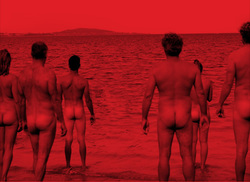
IN SOME PARTS OF THE WORLD, IT'S NORMAL TO SWIM NUDE DURING WINTER SOLSTICE. WE MEAN TO MAKE IT NORMAL HERE, TOO. TO ENTER, REGISTER YOUR INTEREST HERE BY 9AM, JUNE 4.
NOT READY TO WAVE YOUR BITS ABOUT IN THE COLD WINTER AIR? FAIR ENOUGH. DON SOME SWIMMERS - OR FULL WINTER REGALIA - AND JUMP ON IN.
TO ENTER, REGISTER YOUR INTEREST HERE BY 9AM, JUNE 4.
FREE
NUMBERS ARE LIMITED. FIRST IN, BEST UNDRESSED.
REGISTRATION REQUIRED
18+
PRESENTED BY DARK MOFO
SHARE +
Hot heads, cool relations on Antarctic trek- book review on Madigans account
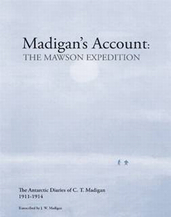
HISTORIAN and author David Day recently has questioned the judgment of Douglas Mawson while leader of the Australasian Antarctic Expedition of 1911-14. Among other things, Day suggests the two fatalities among the men and Mawson's own near-death were "largely the result of [Mawson's] ambition and relative inexperience. The caution that he should have shown was thrown to the wind."
At least one man on the expedition, Cecil Madigan, expressed similar sentiments in his private diaries, now published in one volume as Madigan's Account.
Educated at the University of Adelaide, 22-year-old Cecil Madigan chose to defer a Rhodes scholarship to accept an appointment as meteorologist with Mawson's Antarctic expedition in 1911. The young scientist must have been excited by the possibility of establishing his professional reputation on this large expedition, which was to involve intensive scientific activity, including geology, biology, cartography, on a relatively unknown continent. His diary reveals something of a personality clash with Mawson. With all the unrealistic expectations of an ambitious young man, Madigan seems to view Mawson's leadership role as being "first among equals".
Read more....
Retired SA vet takes skills to Antarctica
by Lisa Kingsberry ABC radio SA Country hour
Listen to interview here...
The effect of weather changes is one of the biggest challenges farmers face. But trying to interpret these changes means scientists need to understand how the Southern Ocean works. That's the ocean that runs around the Antarctic feeding cold water into the Pacific, Indian and Atlantic oceans.
A retired South Australian vet has been crucial in helping understand the effect that this ocean has on Australia's weather pattern.
Andy Dobe has spent the last few very cold winters in the Antarctic jumping on the back of elephant seals. He uses his forty years of experience as a veterinarian to put the seals to sleep so tracking devices can be glued to their skin.
"If you can get a couple of elephant seals to volunteer to put a couple of radio trackers on their neck, they'll gather information for free," he says. The seals then dive through the ocean and feed the information back to a satellite until they shed their fur and lose the tracking devices.
Read more here.../
by Lisa Kingsberry ABC radio SA Country hour
Listen to interview here...
The effect of weather changes is one of the biggest challenges farmers face. But trying to interpret these changes means scientists need to understand how the Southern Ocean works. That's the ocean that runs around the Antarctic feeding cold water into the Pacific, Indian and Atlantic oceans.
A retired South Australian vet has been crucial in helping understand the effect that this ocean has on Australia's weather pattern.
Andy Dobe has spent the last few very cold winters in the Antarctic jumping on the back of elephant seals. He uses his forty years of experience as a veterinarian to put the seals to sleep so tracking devices can be glued to their skin.
"If you can get a couple of elephant seals to volunteer to put a couple of radio trackers on their neck, they'll gather information for free," he says. The seals then dive through the ocean and feed the information back to a satellite until they shed their fur and lose the tracking devices.
Read more here.../
Fishing powers reject Antarctic parks
By Andrew Darby 1st June 2013
The Age newspaper website
An attempt by Western nations, including Australia, to build support for big Antarctic marine reserves has been rebuffed by the fishing powers.
China and Japan are said to have shot down a show of support for the reserves concept at a closed Antarctic Treaty meeting in Brussels this week. Australia has joined France and the European Union in proposing 1.9 million square kilometres of waters off eastern Antarctica for a chain of marine reserves. In the Ross Sea, the US and New Zealand want a 1.4 million square kilometre reserve.
The reserves would restrict some fishing rights, and China took a stand against them last year at the Commission for the Conservation of Antarctic Marine Living Resources. Other nations who objected then, including Russia, indicated that as well as future resource access, they were concerned about the need for designated marine reserves in an already tightly regulated commission system. This has forced the commission to call only the second special meeting in its history - in Bremerhaven, Germany, in July - to tackle the marine reserves issue.
By Andrew Darby 1st June 2013
The Age newspaper website
An attempt by Western nations, including Australia, to build support for big Antarctic marine reserves has been rebuffed by the fishing powers.
China and Japan are said to have shot down a show of support for the reserves concept at a closed Antarctic Treaty meeting in Brussels this week. Australia has joined France and the European Union in proposing 1.9 million square kilometres of waters off eastern Antarctica for a chain of marine reserves. In the Ross Sea, the US and New Zealand want a 1.4 million square kilometre reserve.
The reserves would restrict some fishing rights, and China took a stand against them last year at the Commission for the Conservation of Antarctic Marine Living Resources. Other nations who objected then, including Russia, indicated that as well as future resource access, they were concerned about the need for designated marine reserves in an already tightly regulated commission system. This has forced the commission to call only the second special meeting in its history - in Bremerhaven, Germany, in July - to tackle the marine reserves issue.
ANARE Tas MWD filling up...

Bookings are filling fast with 162 paid bookings to date.
As our venue caters for a maximum of 180 people, if you are keen to attend the dinner to be held on Saturday 22nd June 2013 maybe book sooner rather than later or you may miss out.
If you have paid and your name is NOT on the attendee list, please contact us ASAP.
Please note that the names of all those who have NOT paid for the dinner as yet have been removed from the attendee list. so it is quite clear how many places are left /available for booking.
posted 27 May 2013
As our venue caters for a maximum of 180 people, if you are keen to attend the dinner to be held on Saturday 22nd June 2013 maybe book sooner rather than later or you may miss out.
If you have paid and your name is NOT on the attendee list, please contact us ASAP.
Please note that the names of all those who have NOT paid for the dinner as yet have been removed from the attendee list. so it is quite clear how many places are left /available for booking.
posted 27 May 2013
Memorial ceremony at AAD
Each year the Australian Antarctic Division hosts a memorial ceremony to commemorate those who have died in Antarctica while working for ANARE or other Antarctic organisations.
This year special tribute will be paid to the three Canadian airmen killed in the plane crash between the South Pole and McMurdo station in January 2013. The crew were known to many Australian expeditioners and support staff, having worked with the Australian Antarctic Program over the summer season.
The ceremony will be at 10 am at Memorial Rock at the Australian Antarctic Division, with morning tea and a chance to catch up with others, to follow.
Where: Australian Antarctic Division, Kingston, Hobart
When: Friday 21st June 10am.
Cost: free
posted 29/5/2013
Each year the Australian Antarctic Division hosts a memorial ceremony to commemorate those who have died in Antarctica while working for ANARE or other Antarctic organisations.
This year special tribute will be paid to the three Canadian airmen killed in the plane crash between the South Pole and McMurdo station in January 2013. The crew were known to many Australian expeditioners and support staff, having worked with the Australian Antarctic Program over the summer season.
The ceremony will be at 10 am at Memorial Rock at the Australian Antarctic Division, with morning tea and a chance to catch up with others, to follow.
Where: Australian Antarctic Division, Kingston, Hobart
When: Friday 21st June 10am.
Cost: free
posted 29/5/2013
AAD midwinter tour

Generally access to the Australian Antarctic Division is limited to the foyer display and the cafe, however the Division has kindly offered to host a special tour for ANARE expeditioners and their guests for the Midwinter festivities.
This year there will be a tour on the Friday 21st June at 11am. Highlights include opportunities to view the Clothing store and warehouse, Instrument workshop, and Artefacts store. Around 2 hours should be allowed for the visit.
There is no charge for the tour, but there is a limit of 20 people.
Please meet at the main entrance of the AAD, Channel Hwy, Kingston at 10.45 am. The tour will start promptly at 11am. Covered /enclosed shoes will need to be worn as a number of workshop areas are being accessed.
If you would like to attend please email Jan Adolph
If transport to and from the Australian Antarctic Division at Kingston (about 15 kilometres south of Hobart) is required, please contact us so we can advise of transport arrangements.
Where: Australian Antarctic Division, Kingston, Hobart
When: Friday 21st June 11am.
Cost: free
posted 29/5/2012
This year there will be a tour on the Friday 21st June at 11am. Highlights include opportunities to view the Clothing store and warehouse, Instrument workshop, and Artefacts store. Around 2 hours should be allowed for the visit.
There is no charge for the tour, but there is a limit of 20 people.
Please meet at the main entrance of the AAD, Channel Hwy, Kingston at 10.45 am. The tour will start promptly at 11am. Covered /enclosed shoes will need to be worn as a number of workshop areas are being accessed.
If you would like to attend please email Jan Adolph
If transport to and from the Australian Antarctic Division at Kingston (about 15 kilometres south of Hobart) is required, please contact us so we can advise of transport arrangements.
Where: Australian Antarctic Division, Kingston, Hobart
When: Friday 21st June 11am.
Cost: free
posted 29/5/2012
Looking for....
If anyone has contact details for the following people, can they forward on my email address so we can update some MWD details
thanks Ingrid
And the list is: Dave Pollington, John Smith, Sue Reynolds, Chris Tickner,
If anyone has contact details for the following people, can they forward on my email address so we can update some MWD details
thanks Ingrid
And the list is: Dave Pollington, John Smith, Sue Reynolds, Chris Tickner,
Come behind the scenery...explore Tas at midwinters

Dear Mainlanders,
Looking to explore our magical little island at Midwinters...
There's heaps on all over the state.
Click here to see Tourism Tas ideas (and their very cool autumn -winter campaign film clip).
Using MONA as a starting point, the television ad presents the state in all its quirky glory with an old-style circus feel, heavy on theatrics and chock-full of cameos from Tasmania's most famous locals, including Tino Carnevale, Rob Pennicott, Sally Wise, Bill Lark, John X and David Foster.
Tourism Tasmania marketing director Kath McCann said the state was known for its stunning landscapes and incredible food. "The holiday experience is on offer at first glance, but when you dig a little deeper it's the things that sit below the surface that are the real experience of Tasmania," she said.(extract from The Mercury website)
Also here for Dark Mofo events...
And here for great prices for winter accomodation in iconic locations...
posted 25th May 2013
Looking to explore our magical little island at Midwinters...
There's heaps on all over the state.
Click here to see Tourism Tas ideas (and their very cool autumn -winter campaign film clip).
Using MONA as a starting point, the television ad presents the state in all its quirky glory with an old-style circus feel, heavy on theatrics and chock-full of cameos from Tasmania's most famous locals, including Tino Carnevale, Rob Pennicott, Sally Wise, Bill Lark, John X and David Foster.
Tourism Tasmania marketing director Kath McCann said the state was known for its stunning landscapes and incredible food. "The holiday experience is on offer at first glance, but when you dig a little deeper it's the things that sit below the surface that are the real experience of Tasmania," she said.(extract from The Mercury website)
Also here for Dark Mofo events...
And here for great prices for winter accomodation in iconic locations...
posted 25th May 2013
News from the SCAR website

Puzzle of why penguin cannot fly 'solved'
24 May 2013
The puzzle of why the penguin is unable to fly may have finally been solved. Researchers believe that the bird's underwater prowess may have cost it its ability to fly.
A study published in the Proceedings of the National Academy of Sciences, looked at seabirds closely related to the penguin. The study's authors confirmed that a wing that is good for flying cannot also be good for diving and swimming.
Professor John Speakman, from the University of Aberdeen and the Chinese Academy of Sciences, said: "Like many people, I've always been interested in penguins, and seeing them do these phenomenal marches across the ice, I've often thought: 'Why don't they just fly?'"
For more information, see the item on the BBC News - Science and Environment website or read the full article on the PNAS website.
Antarctic Neutrino Observatory detects unexplained high-energy particles
24 May 2013
Hot on the heels of detecting the two highest-energy neutrinos ever observed, scientists working with a mammoth particle detector buried in ice near the South Pole unveiled preliminary data showing that they also registered the signal of 26 additional high-energy neutrinos. The newfound neutrinos are somewhat less energetic than the two record-setters but nonetheless appear to carry more energy than would be expected if created by cosmic rays hitting the atmosphere — a prodigious source of neutrinos raining down on Earth. The particles thus may point to unknown energetic astrophysical processes deeper in the cosmos.
For more information, see the item on the Scientific American website.
Big brains may help baby seals survive under ice
15 May 2013
Weddell seals (Leptonychotes weddellii) are the only mammal that dares to swim long distances under sea ice, travelling up to 20 kilometres in hour-long bursts as they scan for air holes and an eventual exit somewhere in the midst of vast Antarctic sheets. There, mothers give birth so that their pups will be safe from leopard seals and killer whales. But how do those pups learn to navigate the risky underwater terrain so quickly? They're born with big brains, according to a study published online and in an forthcoming issue of Marine Mammal Science.
Researchers measured 12 carcasses and found that the brains of newborn pups are 70% the size of adult brains — the largest percentage of any mammal. In comparison, the brains of human babies are only 25% the size of adults. Good thing our trekking doesn't start until much later in life.
For more details, see the Science Shot or read the full article in Marine Mammal Science.
24 May 2013
The puzzle of why the penguin is unable to fly may have finally been solved. Researchers believe that the bird's underwater prowess may have cost it its ability to fly.
A study published in the Proceedings of the National Academy of Sciences, looked at seabirds closely related to the penguin. The study's authors confirmed that a wing that is good for flying cannot also be good for diving and swimming.
Professor John Speakman, from the University of Aberdeen and the Chinese Academy of Sciences, said: "Like many people, I've always been interested in penguins, and seeing them do these phenomenal marches across the ice, I've often thought: 'Why don't they just fly?'"
For more information, see the item on the BBC News - Science and Environment website or read the full article on the PNAS website.
Antarctic Neutrino Observatory detects unexplained high-energy particles
24 May 2013
Hot on the heels of detecting the two highest-energy neutrinos ever observed, scientists working with a mammoth particle detector buried in ice near the South Pole unveiled preliminary data showing that they also registered the signal of 26 additional high-energy neutrinos. The newfound neutrinos are somewhat less energetic than the two record-setters but nonetheless appear to carry more energy than would be expected if created by cosmic rays hitting the atmosphere — a prodigious source of neutrinos raining down on Earth. The particles thus may point to unknown energetic astrophysical processes deeper in the cosmos.
For more information, see the item on the Scientific American website.
Big brains may help baby seals survive under ice
15 May 2013
Weddell seals (Leptonychotes weddellii) are the only mammal that dares to swim long distances under sea ice, travelling up to 20 kilometres in hour-long bursts as they scan for air holes and an eventual exit somewhere in the midst of vast Antarctic sheets. There, mothers give birth so that their pups will be safe from leopard seals and killer whales. But how do those pups learn to navigate the risky underwater terrain so quickly? They're born with big brains, according to a study published online and in an forthcoming issue of Marine Mammal Science.
Researchers measured 12 carcasses and found that the brains of newborn pups are 70% the size of adult brains — the largest percentage of any mammal. In comparison, the brains of human babies are only 25% the size of adults. Good thing our trekking doesn't start until much later in life.
For more details, see the Science Shot or read the full article in Marine Mammal Science.
Ice Lab exhibition to tour UK, then internationally

BAS Halley VI sits on a floating ice shelf.
From The Guardian website
21st May 2013
Ice Lab tour sheds light on weird and wonderful buildings that allow humans to thrive in world's coldest place.
It is no coincidence that many of the buildings in the first exhibition on architecture in Antarctica, shaped like caterpillars or icebergs, on stilts or stubby legs, will look like science-fiction illustrations – the storms, blizzards, extremes of temperature, darkness and howling winds they have been designed to withstand are so extreme that conditions have been likened to those on Mars.
The British Council is to launch Ice Lab, the first major international touring exhibition on buildings designed to allow human beings live, work, and relax safely in the coldest place on earth.
Vicky Richardson, head of architecture and design at the council, said the new wave of Antarctic research stations showed great inventiveness in design and engineering. In the same way that scientists from around the world collaborate in Antarctica, these buildings are made possible by co-operation between nations, so it is highly appropriate that the British Council should be commissioning this exhibition."
The most extreme proposal is only a concept, the Iceberg Living Station designed by MAP architects in Denmark, which avoids using conventional building materials. Instead it would use the caterpillar excavators employed in the Antarctic to clear snow, to tunnel into a large iceberg and hollow out a space large enough to hold a research station. Eventually, its purpose served, the iceberg would melt and all trace of the building would disappear.
Many of the buildings already exist, including the British Antarctic Survey's Halley VI, which opened three months ago. Designed by Hugh Broughton Architects, it is located on a floating ice shelf 10,000 miles from the UK. The structure is designed to be self-sufficient for months, and to withstand winter temperatures of -55c as well as being a pleasant and interesting place for the scientists to live and work.
Belgium's Princess Elisabeth Antarctic was conceived, designed, constructed and operated by the country's branch of the International Polar Foundation, its sleek aerodynamic stainless steel structure the first designed to be zero-emission. Warmed by wind and solar energy, it has no interior heating system.
South Korea is one of the new players in Antarctic research, and its Jang Bogo base, by the Seoul-based firm Space Group, will be one of the largest bases designed to operate year round with up to 60 personnel, when it opens next year.
The exhibition will have architectural drawings, models, photographs and films, as well as a light and audio show by the Glasgow-based aritst Torsten Lauschmann. It will open in Glasgow in July, then Manchester in October before touring internationally.
21st May 2013
Ice Lab tour sheds light on weird and wonderful buildings that allow humans to thrive in world's coldest place.
It is no coincidence that many of the buildings in the first exhibition on architecture in Antarctica, shaped like caterpillars or icebergs, on stilts or stubby legs, will look like science-fiction illustrations – the storms, blizzards, extremes of temperature, darkness and howling winds they have been designed to withstand are so extreme that conditions have been likened to those on Mars.
The British Council is to launch Ice Lab, the first major international touring exhibition on buildings designed to allow human beings live, work, and relax safely in the coldest place on earth.
Vicky Richardson, head of architecture and design at the council, said the new wave of Antarctic research stations showed great inventiveness in design and engineering. In the same way that scientists from around the world collaborate in Antarctica, these buildings are made possible by co-operation between nations, so it is highly appropriate that the British Council should be commissioning this exhibition."
The most extreme proposal is only a concept, the Iceberg Living Station designed by MAP architects in Denmark, which avoids using conventional building materials. Instead it would use the caterpillar excavators employed in the Antarctic to clear snow, to tunnel into a large iceberg and hollow out a space large enough to hold a research station. Eventually, its purpose served, the iceberg would melt and all trace of the building would disappear.
Many of the buildings already exist, including the British Antarctic Survey's Halley VI, which opened three months ago. Designed by Hugh Broughton Architects, it is located on a floating ice shelf 10,000 miles from the UK. The structure is designed to be self-sufficient for months, and to withstand winter temperatures of -55c as well as being a pleasant and interesting place for the scientists to live and work.
Belgium's Princess Elisabeth Antarctic was conceived, designed, constructed and operated by the country's branch of the International Polar Foundation, its sleek aerodynamic stainless steel structure the first designed to be zero-emission. Warmed by wind and solar energy, it has no interior heating system.
South Korea is one of the new players in Antarctic research, and its Jang Bogo base, by the Seoul-based firm Space Group, will be one of the largest bases designed to operate year round with up to 60 personnel, when it opens next year.
The exhibition will have architectural drawings, models, photographs and films, as well as a light and audio show by the Glasgow-based aritst Torsten Lauschmann. It will open in Glasgow in July, then Manchester in October before touring internationally.
Nella Dan 1962-1987
Info from Ship Modelling Society of Victoria website
Nella Dan sailed to the Antarctic every year of the twenty-six years she was chartered by the Australian National Antarctic Research Expeditions (ANARE).
Built as an ice breaker by the Aarlborg Shipyard Pty Ltd, Denmark, in 1961, at the time of her construction, the Nella Dan was regarded as setting the standard for polar vessels. Her specifications included:
*Source: About Antarctica, Dept of Sustainability, Environment, Water, Population and Communities Australian Antarctic Division
Nella Dan Model 1970-1973
The concept for a club or joint build model model was introduced to the Ship Modelling Society of Victoria (SMSV) by Mr. Norm Neale at the November Meeting 1970. He proposed: “to construct a sailing model of a ship as a joint project for members”.
The choice of the Nella Dan as the subject of this model was taken in early 1971 with support being provided by National Antarctic Expedition in the provision of plans. The project was undertaken as a club build with the following members meeting two hours ahead of the main monthly club meetings to complete the model. The recorded (club newsletters) participants in the build include: Les Gooch, Norm Neale, Phil Molyneux, Tom Hadley, Kevin Lang, Bill Middleditch, Don McGraw, Denis Kendall and later Sid Rose.
The “remotely controlled” model took some 3000 hours to build and was constructed to 1/12 scale from Western Red Cedar, brass windows and portholes (with glass inserts) and the hull laminated externally with fibreglass. The overall dimensions of the model were 10ft x 18inches by approximately 18 inches draft. The model was powered by a 6V aircraft starter motor and controlled using a model aircraft RC unit. The model was capable of turning to port or starboard but restricted to forward motion only due to the complexity of trying to simulate “reversible pitch” propellers.
The model was launched by Mrs. Sid Rose at Albert Park Lake at 10:00 am on Sunday, 2nd December 1973. There were 14 SMSV members and 8 guests in attendance with Channel 2 providing TV coverage which was aired in the evening news a few days later.
The model was initially loaned to the National Trust (Polly Woodside) for display but in 1910, the model was returned to the SMSV. It was then donated to ANARE who shipped it to Tasmania where it is now on display in the AAD foyer outside the library of the ANARE club.
Photos of Nella Dan Club Project:
Click here...These photo images are provided by SMSV members for the benefit and interest of model ship builders. Please note that all photo images on this site are subject to copyright and must not be used for any commercial purposes without the permission of the owner.
Info from Ship Modelling Society of Victoria website
Nella Dan sailed to the Antarctic every year of the twenty-six years she was chartered by the Australian National Antarctic Research Expeditions (ANARE).
Built as an ice breaker by the Aarlborg Shipyard Pty Ltd, Denmark, in 1961, at the time of her construction, the Nella Dan was regarded as setting the standard for polar vessels. Her specifications included:
- length overall 75.5 metres
- breadth moulded 14.3 metres
- draft fully loaded 6.268 metres
- main engine turbo charged Burmeister & Wain diesel, with an output of 2500 IHP (Indicated Horse Power) at 300 rpm. The propeller blades were reversible.
- speed 12.5 knots
*Source: About Antarctica, Dept of Sustainability, Environment, Water, Population and Communities Australian Antarctic Division
Nella Dan Model 1970-1973
The concept for a club or joint build model model was introduced to the Ship Modelling Society of Victoria (SMSV) by Mr. Norm Neale at the November Meeting 1970. He proposed: “to construct a sailing model of a ship as a joint project for members”.
The choice of the Nella Dan as the subject of this model was taken in early 1971 with support being provided by National Antarctic Expedition in the provision of plans. The project was undertaken as a club build with the following members meeting two hours ahead of the main monthly club meetings to complete the model. The recorded (club newsletters) participants in the build include: Les Gooch, Norm Neale, Phil Molyneux, Tom Hadley, Kevin Lang, Bill Middleditch, Don McGraw, Denis Kendall and later Sid Rose.
The “remotely controlled” model took some 3000 hours to build and was constructed to 1/12 scale from Western Red Cedar, brass windows and portholes (with glass inserts) and the hull laminated externally with fibreglass. The overall dimensions of the model were 10ft x 18inches by approximately 18 inches draft. The model was powered by a 6V aircraft starter motor and controlled using a model aircraft RC unit. The model was capable of turning to port or starboard but restricted to forward motion only due to the complexity of trying to simulate “reversible pitch” propellers.
The model was launched by Mrs. Sid Rose at Albert Park Lake at 10:00 am on Sunday, 2nd December 1973. There were 14 SMSV members and 8 guests in attendance with Channel 2 providing TV coverage which was aired in the evening news a few days later.
The model was initially loaned to the National Trust (Polly Woodside) for display but in 1910, the model was returned to the SMSV. It was then donated to ANARE who shipped it to Tasmania where it is now on display in the AAD foyer outside the library of the ANARE club.
Photos of Nella Dan Club Project:
Click here...These photo images are provided by SMSV members for the benefit and interest of model ship builders. Please note that all photo images on this site are subject to copyright and must not be used for any commercial purposes without the permission of the owner.
MWD menu released
The 3 course meal will feature local Tasmanian produce and will be an alternate drop (e.g. salmon, beef, salmon, beef..) The menu is available here...
Vegetarian options are available. Please advise if you have any particular dietary requirements (vegetarian, vegan, gluten free etc) by early June 2013 at this email..
So far, over 135 people have paid to attend this years MWD in Tasmania. If you'd like to come along and catch up with heaps of friends, get more details here...
The 3 course meal will feature local Tasmanian produce and will be an alternate drop (e.g. salmon, beef, salmon, beef..) The menu is available here...
Vegetarian options are available. Please advise if you have any particular dietary requirements (vegetarian, vegan, gluten free etc) by early June 2013 at this email..
So far, over 135 people have paid to attend this years MWD in Tasmania. If you'd like to come along and catch up with heaps of friends, get more details here...
Funding for Mawsons Huts

By Matt Smith
Mercury Newspaper
THE amazing story of explorer Douglas Mawson will still inspire Australians for generations after the Federal Government yesterday confirmed support for projects in Hobart and Antarctica.
A $350,000 grant will allow a full-scale replica of Mawson's Hut to be built opposite Mawson Place at the Hobart waterfront, just 200m from the site where Mawson set sail for the Antarctic more than 100 years ago. The original hut was built in 1912 and used as a research base for the expedition.
Prime Minister Julia Gillard and Heritage Minister Tony Burke also announced yesterday that $472,725 would be provided for conservation work to preserve the original Mawson's Hut at Cape Denison, in Antarctica's Commonwealth Bay.
The Mawson's Huts Foundation, a not-for-profit charity which raises funds for the conservation of the historic huts at Cape Denison, had been attempting to secure money for the project for about three years.
Foundation chairman and CEO David Jensen said yesterday he was absolutely delighted funding had secured the project's first stage.
"Work can now start within a few weeks," Mr Jensen said.
"I can now focus on getting the remainder of the funding for the fit-out."
Mr Burke said the construction of the Hobart replica hut would be as close as possible to the original.
"This proposal has been developed by the Mawson's Huts Foundation, [which] also worked to save the original huts," Mr Burke said.
"It will be built using the same materials in Launceston, and be located on the Hobart waterfront where it will be a major tourist attraction," he said.
Mr Jensen thanked Tasmanian ALP Senator Carol Brown and the Labor candidate for Denison, Jane Austin for pestering the Prime Minister into funding the project.
"Hobart should give Carol and Jane a huge pat on the back for this," Mr Jensen said.
"They have been the driving force behind it."
[email protected]
posted 20/5/13
Mercury Newspaper
THE amazing story of explorer Douglas Mawson will still inspire Australians for generations after the Federal Government yesterday confirmed support for projects in Hobart and Antarctica.
A $350,000 grant will allow a full-scale replica of Mawson's Hut to be built opposite Mawson Place at the Hobart waterfront, just 200m from the site where Mawson set sail for the Antarctic more than 100 years ago. The original hut was built in 1912 and used as a research base for the expedition.
Prime Minister Julia Gillard and Heritage Minister Tony Burke also announced yesterday that $472,725 would be provided for conservation work to preserve the original Mawson's Hut at Cape Denison, in Antarctica's Commonwealth Bay.
The Mawson's Huts Foundation, a not-for-profit charity which raises funds for the conservation of the historic huts at Cape Denison, had been attempting to secure money for the project for about three years.
Foundation chairman and CEO David Jensen said yesterday he was absolutely delighted funding had secured the project's first stage.
"Work can now start within a few weeks," Mr Jensen said.
"I can now focus on getting the remainder of the funding for the fit-out."
Mr Burke said the construction of the Hobart replica hut would be as close as possible to the original.
"This proposal has been developed by the Mawson's Huts Foundation, [which] also worked to save the original huts," Mr Burke said.
"It will be built using the same materials in Launceston, and be located on the Hobart waterfront where it will be a major tourist attraction," he said.
Mr Jensen thanked Tasmanian ALP Senator Carol Brown and the Labor candidate for Denison, Jane Austin for pestering the Prime Minister into funding the project.
"Hobart should give Carol and Jane a huge pat on the back for this," Mr Jensen said.
"They have been the driving force behind it."
[email protected]
posted 20/5/13
Government Support for Conservation of Mawson's Huts
FRI 17 MAY 2013
Prime Minister, Minister for Heritage Hobart
Media release
Prime Minister Julia Gillard and Heritage Minister Tony Burke today announced funding for the conservation of the birthplace of Australia’s modern Antarctic program, Mawson’s Huts at Cape Denison, Commonwealth Bay, Antarctica.
The Gillard Government is providing $472,725 for conservation work to ensure this remarkable part of Australia’s history is preserved for future generations and continues to serve as a reminder of the leadership, bravery and determination of the Mawson expedition more than 100 years ago.
Funding is being provided for the project under the Government’s Your Community Heritage grants program, through the Protection National Heritage Sites sub-program.
Mawson’s expedition was the first large-scale Australian-led scientific expedition to the frozen continent.
Mawson’s Huts are Australia’s first base in Antarctica and the foundation for Australia’s sovereign claim of 42 per cent of Antarctica.
Located 3,000 kilometres south of Tasmania, Mawson’s Huts are on the National Heritage List and the Antarctic Treaty list of historic monuments.
Because of the site’s extreme remoteness and the limited window of time for operating in Antarctica the conservation work will take place on a year by year basis.
Mawson’s Huts are located in the windiest place on earth at sea level and this is compounded by the other extreme weather conditions at Commonwealth Bay.
The main priorities for the conservation work are the stabilisation of the main hut and associated structures, removal of interior ice and the prevention of snow getting inside the structures.
Mawson’s Huts are a critical part of Australia's enduring connection with the continent to our south.
The Mawson expedition left Hobart in December 1911 and reached Commonwealth Bay in January 1912.
The ongoing preservation of Mawson’s Huts will mean the story and inspiration of Mawson’s epic adventure, the tragedy of the expedition and his survival under extraordinary circumstances will continue to amaze Australians for generations to come.
In addition to the conservation work the Australian Government is providing $350,000 for stage one of the Mawson’s Hut Replica venture between the Mawson’s Huts Foundation and the Australian Geographic Society.
Assistance for this project will result in a full scale replica of Mawson’s Hut being built in Hobart, just 200 metres from the site that Mawson and his men departed.
Stage one of the project involves the construction of the Mawson’s Hut replica.
Construction of the hut will be as close as possible to the original.
This proposal has been developed by the Mawson’s Huts Foundation, who also worked to save the original huts.
It will be built using the same materials, in Launceston, and be located on the Hobart waterfront where it will be a major tourist attraction.
The Gillard Government is providing support for Antarctic research and exploration activities, including through $25 million for the Antarctic Cooperative Research Centre announced in the Budget.
It is also investing in the remediation of the Hobart rail yards, helping the long term redevelopment of the Hobart waterfront.
For information on the project go to http://www.mawsons-huts.org.au/replica/ and for information on the Your Community Heritage grants program go tohttp://www.environment.gov.au/heritage/programs/ych/index.html
FRI 17 MAY 2013
Prime Minister, Minister for Heritage Hobart
Media release
Prime Minister Julia Gillard and Heritage Minister Tony Burke today announced funding for the conservation of the birthplace of Australia’s modern Antarctic program, Mawson’s Huts at Cape Denison, Commonwealth Bay, Antarctica.
The Gillard Government is providing $472,725 for conservation work to ensure this remarkable part of Australia’s history is preserved for future generations and continues to serve as a reminder of the leadership, bravery and determination of the Mawson expedition more than 100 years ago.
Funding is being provided for the project under the Government’s Your Community Heritage grants program, through the Protection National Heritage Sites sub-program.
Mawson’s expedition was the first large-scale Australian-led scientific expedition to the frozen continent.
Mawson’s Huts are Australia’s first base in Antarctica and the foundation for Australia’s sovereign claim of 42 per cent of Antarctica.
Located 3,000 kilometres south of Tasmania, Mawson’s Huts are on the National Heritage List and the Antarctic Treaty list of historic monuments.
Because of the site’s extreme remoteness and the limited window of time for operating in Antarctica the conservation work will take place on a year by year basis.
Mawson’s Huts are located in the windiest place on earth at sea level and this is compounded by the other extreme weather conditions at Commonwealth Bay.
The main priorities for the conservation work are the stabilisation of the main hut and associated structures, removal of interior ice and the prevention of snow getting inside the structures.
Mawson’s Huts are a critical part of Australia's enduring connection with the continent to our south.
The Mawson expedition left Hobart in December 1911 and reached Commonwealth Bay in January 1912.
The ongoing preservation of Mawson’s Huts will mean the story and inspiration of Mawson’s epic adventure, the tragedy of the expedition and his survival under extraordinary circumstances will continue to amaze Australians for generations to come.
In addition to the conservation work the Australian Government is providing $350,000 for stage one of the Mawson’s Hut Replica venture between the Mawson’s Huts Foundation and the Australian Geographic Society.
Assistance for this project will result in a full scale replica of Mawson’s Hut being built in Hobart, just 200 metres from the site that Mawson and his men departed.
Stage one of the project involves the construction of the Mawson’s Hut replica.
Construction of the hut will be as close as possible to the original.
This proposal has been developed by the Mawson’s Huts Foundation, who also worked to save the original huts.
It will be built using the same materials, in Launceston, and be located on the Hobart waterfront where it will be a major tourist attraction.
The Gillard Government is providing support for Antarctic research and exploration activities, including through $25 million for the Antarctic Cooperative Research Centre announced in the Budget.
It is also investing in the remediation of the Hobart rail yards, helping the long term redevelopment of the Hobart waterfront.
For information on the project go to http://www.mawsons-huts.org.au/replica/ and for information on the Your Community Heritage grants program go tohttp://www.environment.gov.au/heritage/programs/ych/index.html
Nude swim for Dark Mofo festival gets Tasmania police go-ahead
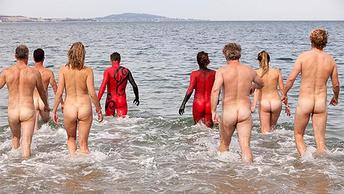
By Tim Douglas
The Australian newspaper
21st May 2013.
HOBART'S controversial nude solstice swim, being hosted by Tasmania's Museum of Old and New Art, is back on again after police today agreed to in-principle support for the event.
Yesterday, Tasmanian Police deemed the naked swim "contrary to public decency", and forced organisers of MONA's Dark Mofo festival to cancel the event, which had been organised to mirror other European solstice events.
But Tasmanian Minister for Police and Emergency Management, David O'Byrne, said today police had changed its mind. Provided the event gets the go-ahead from Hobart City Council, the Dark Mofo Nude Solstice Swim will take place on June 22 in the frigid waters of the Derwent's Lower Sandy Bay.
Social media had been abuzz with criticism of the police's decision to shut down the event, MONA's Facebook site had received some 200 messages of support.
Dark Mofo creative director Leigh Carmichael said plans would be submitted to council as soon as possible to clear the way for the event. "After further discussions of event management, safety and approval, we now have in-principal support from Tasmania Police to go ahead with the event," Mr Carmichael said.
Surf Life Saving Tasmania had deemed Lower Sandy Bay the safest place to hold the event.
"We are pleased the swim can go ahead. We think this could become a major event for Tasmania's winter on an annual basis, and - as we've seen from the public interest this week - it's just a great thing for the community to engage in together, on the morning after the darkest night."
Dark Mofo, MONA's inaugural winter festival, opens on June 13 and will also host Skywhale, artist Patricia Piccinini's controversial Centenary of Canberra hot air balloon.
The Australian newspaper
21st May 2013.
HOBART'S controversial nude solstice swim, being hosted by Tasmania's Museum of Old and New Art, is back on again after police today agreed to in-principle support for the event.
Yesterday, Tasmanian Police deemed the naked swim "contrary to public decency", and forced organisers of MONA's Dark Mofo festival to cancel the event, which had been organised to mirror other European solstice events.
But Tasmanian Minister for Police and Emergency Management, David O'Byrne, said today police had changed its mind. Provided the event gets the go-ahead from Hobart City Council, the Dark Mofo Nude Solstice Swim will take place on June 22 in the frigid waters of the Derwent's Lower Sandy Bay.
Social media had been abuzz with criticism of the police's decision to shut down the event, MONA's Facebook site had received some 200 messages of support.
Dark Mofo creative director Leigh Carmichael said plans would be submitted to council as soon as possible to clear the way for the event. "After further discussions of event management, safety and approval, we now have in-principal support from Tasmania Police to go ahead with the event," Mr Carmichael said.
Surf Life Saving Tasmania had deemed Lower Sandy Bay the safest place to hold the event.
"We are pleased the swim can go ahead. We think this could become a major event for Tasmania's winter on an annual basis, and - as we've seen from the public interest this week - it's just a great thing for the community to engage in together, on the morning after the darkest night."
Dark Mofo, MONA's inaugural winter festival, opens on June 13 and will also host Skywhale, artist Patricia Piccinini's controversial Centenary of Canberra hot air balloon.
New ANARE Club constitution approved at AGM
The new 'Rules' governing ANARE Club operation and management was overwhelmingly approved at the special AGM yesterday.
Although it was recognised that legally the ANARE Club had to make a number of additions to comply with recent changes in Victorian Government legislation, there was provision to add further information to maintain the essential character of the ANARE Club. With this in mind, several amendments were successfully introduced by members prior to the final vote.
National Council will be making a formal comment on the ratified Constitution in the near future.
Sincere thanks in particular to Joe Johnson and others who put in many hours of work on the project. And also a big thank you to those who took the time and effort to make their opinion count either in person or by proxy.
The new 'Rules' governing ANARE Club operation and management was overwhelmingly approved at the special AGM yesterday.
Although it was recognised that legally the ANARE Club had to make a number of additions to comply with recent changes in Victorian Government legislation, there was provision to add further information to maintain the essential character of the ANARE Club. With this in mind, several amendments were successfully introduced by members prior to the final vote.
National Council will be making a formal comment on the ratified Constitution in the near future.
Sincere thanks in particular to Joe Johnson and others who put in many hours of work on the project. And also a big thank you to those who took the time and effort to make their opinion count either in person or by proxy.
$25 million Antarctic lifeline
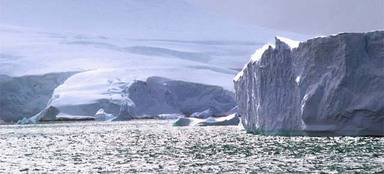
by Michelle Paine
www.themercury.com.au
13th May 2013
HOBART'S international reputation as the centre of global Antarctic research has been secured, with $25 million in funding to be announced in tomorrow's Federal Budget.
And another $7.9 million will be spent looking at options for a new icebreaker to replace the ageing Aurora Australis, as well as funds to keep it working for the next few years.
There had been fears dozens of top scientists would be lost to the state with the end of funding for the Antarctic Climate and Ecosystems Co-operative Research Centre. About $4.5 million a year goes towards the centre, which also supports the CSIRO and Australia Antarctic Division, but that money was due to run out next year.
The five-year funding plan was announced by Tertiary Education, Skills, Science and Research Minister Craig Emerson and Environment Minister Tony Burke. "Our Antarctic Climate and Ecosystems CRC has an international reputation as a leader in climate change science," Dr Emerson said. "The funding in this year's Budget means its research will address key scientific questions, including how Antarctica drives global climate, and how the pace and nature of change will affect the wellbeing and economic interests of Australians."
The centre is based at the University of Tasmania, but works with more than 20 organisations.
Dr Emerson said the funding meant the range of work done by the CRC, Australia's largest centre of Antarctic and Southern Ocean climate change research, would continue to include climate-change effects in Australia and the Pacific.
It comes after strong lobbying by the State Government, Greens leader Christine Milne and independent MHR Andrew Wilkie, as well as work by UTAS.
Hobart's concentration of climate change and Southern Ocean research is a key to economic hopes for the state's future and underpins plans for the industry to grow. Tasmania has marketed itself as the Antarctic gateway, a reputation strengthened when a Chinese polar research vessel docked in Hobart in January to be resupplied. More than 900 people are employed in Hobart's Antarctic activities.
Comment on the AAD website can be accessed here...
www.themercury.com.au
13th May 2013
HOBART'S international reputation as the centre of global Antarctic research has been secured, with $25 million in funding to be announced in tomorrow's Federal Budget.
And another $7.9 million will be spent looking at options for a new icebreaker to replace the ageing Aurora Australis, as well as funds to keep it working for the next few years.
There had been fears dozens of top scientists would be lost to the state with the end of funding for the Antarctic Climate and Ecosystems Co-operative Research Centre. About $4.5 million a year goes towards the centre, which also supports the CSIRO and Australia Antarctic Division, but that money was due to run out next year.
The five-year funding plan was announced by Tertiary Education, Skills, Science and Research Minister Craig Emerson and Environment Minister Tony Burke. "Our Antarctic Climate and Ecosystems CRC has an international reputation as a leader in climate change science," Dr Emerson said. "The funding in this year's Budget means its research will address key scientific questions, including how Antarctica drives global climate, and how the pace and nature of change will affect the wellbeing and economic interests of Australians."
The centre is based at the University of Tasmania, but works with more than 20 organisations.
Dr Emerson said the funding meant the range of work done by the CRC, Australia's largest centre of Antarctic and Southern Ocean climate change research, would continue to include climate-change effects in Australia and the Pacific.
It comes after strong lobbying by the State Government, Greens leader Christine Milne and independent MHR Andrew Wilkie, as well as work by UTAS.
Hobart's concentration of climate change and Southern Ocean research is a key to economic hopes for the state's future and underpins plans for the industry to grow. Tasmania has marketed itself as the Antarctic gateway, a reputation strengthened when a Chinese polar research vessel docked in Hobart in January to be resupplied. More than 900 people are employed in Hobart's Antarctic activities.
Comment on the AAD website can be accessed here...
Early bird discount for Tas MWD ends 18th May 2013...
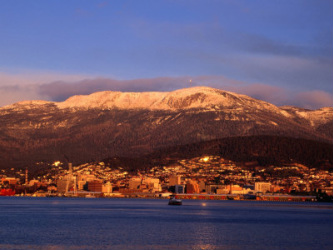
The ANARE (Tas branch) Midwinter Dinner will be held in Hobart on Saturday 222nd June 2013.
Over 100 people have booked so far. Numbers are capped at 150, so if you wish to attend please make your payments ASAP to guarantee a seat. The early bird discount finishes on 18th May 2013.
A number of ANARE folk have booked for 2 people, but not provided the name of their guest. It would be helpful if you emailed [email protected] with the name for attendees list, seating and name tags. Thanks!
Further information on the dinner and list of attendees can be accessed on our website.
Over 100 people have booked so far. Numbers are capped at 150, so if you wish to attend please make your payments ASAP to guarantee a seat. The early bird discount finishes on 18th May 2013.
A number of ANARE folk have booked for 2 people, but not provided the name of their guest. It would be helpful if you emailed [email protected] with the name for attendees list, seating and name tags. Thanks!
Further information on the dinner and list of attendees can be accessed on our website.
AAD seeks to minimise alien invaders

from the AAD website
A new state-of-the-art Australian Antarctic Division cargo and quarantine hub aims to banish bugs, rats and other ‘alien’ hitch-hikers from boarding ships travelling south.
The federally funded 2.5 million dollar facility is located at the eastern end of the re-developed Macquarie Wharf 2 shed.
It has vermin traps, impenetrable walls and automatic shutter doors to reduce the risk of introduced species reaching the fragile Antarctic and sub-Antarctic environments.
Environment Minister Tony Burke said it’s a significant improvement in bio-security.
“In 1991 the Hawke Labor Government decided that the Antarctic would be the one continent on earth that was kept as a pristine wilderness dedicated to science and peace,” Mr Burke said. “These quarantine facilities are about making sure that the pristine Antarctic stays that way.”
The Director of the Division, Dr Tony Fleming, said Australia is really committed to ensuring we have a minimal impact on the environment at our Antarctic and sub-Antarctic stations “This new facility will improve the efficiency of our screening, processing and management of all cargo and equipment to help prevent the introduction of non-native animals or plant species,” Dr Fleming said.
The cargo and quarantine centre also has a cold and cool store, fumigation area, briefing rooms, and warehousing space.
“This development further cements Tasmania’s status as a dedicated gateway to Antarctica and the Southern Ocean,” he said.
Tasports has spent 7 million dollars redeveloping the Macquarie Wharf 2 building into an Antarctic and Cruise ship precinct. “The cruise terminal will provide a spacious and comfortable area for Expeditioners and their families to farewell or welcome home their loved ones, as well as providing easier access to Antarctic ships,” Dr Fleming said.
The Antarctic Division will move into the cargo and quarantine facility in May and begin operating from there in time for the first voyage of the season in September.
The Division’s cargo operations have been run out of Macquarie Wharf 4 for more than 12 years.
A new state-of-the-art Australian Antarctic Division cargo and quarantine hub aims to banish bugs, rats and other ‘alien’ hitch-hikers from boarding ships travelling south.
The federally funded 2.5 million dollar facility is located at the eastern end of the re-developed Macquarie Wharf 2 shed.
It has vermin traps, impenetrable walls and automatic shutter doors to reduce the risk of introduced species reaching the fragile Antarctic and sub-Antarctic environments.
Environment Minister Tony Burke said it’s a significant improvement in bio-security.
“In 1991 the Hawke Labor Government decided that the Antarctic would be the one continent on earth that was kept as a pristine wilderness dedicated to science and peace,” Mr Burke said. “These quarantine facilities are about making sure that the pristine Antarctic stays that way.”
The Director of the Division, Dr Tony Fleming, said Australia is really committed to ensuring we have a minimal impact on the environment at our Antarctic and sub-Antarctic stations “This new facility will improve the efficiency of our screening, processing and management of all cargo and equipment to help prevent the introduction of non-native animals or plant species,” Dr Fleming said.
The cargo and quarantine centre also has a cold and cool store, fumigation area, briefing rooms, and warehousing space.
“This development further cements Tasmania’s status as a dedicated gateway to Antarctica and the Southern Ocean,” he said.
Tasports has spent 7 million dollars redeveloping the Macquarie Wharf 2 building into an Antarctic and Cruise ship precinct. “The cruise terminal will provide a spacious and comfortable area for Expeditioners and their families to farewell or welcome home their loved ones, as well as providing easier access to Antarctic ships,” Dr Fleming said.
The Antarctic Division will move into the cargo and quarantine facility in May and begin operating from there in time for the first voyage of the season in September.
The Division’s cargo operations have been run out of Macquarie Wharf 4 for more than 12 years.
Antarctic winter expedition team battle elements

BBC news report
Bad weather and dangerous crevasses have slowed the progress of the team trying to become the first to cross Antarctica during the polar winter.
The team was hit before it started its crossing when veteran explorer Sir Ranulph Fiennes had to pull out after suffering frostbite.
Now, as Ian Prickett of the Coldest Journey team explains, after seven weeks they are behind schedule, but hoping to make up lost time. See video here...
Bad weather and dangerous crevasses have slowed the progress of the team trying to become the first to cross Antarctica during the polar winter.
The team was hit before it started its crossing when veteran explorer Sir Ranulph Fiennes had to pull out after suffering frostbite.
Now, as Ian Prickett of the Coldest Journey team explains, after seven weeks they are behind schedule, but hoping to make up lost time. See video here...
Antarctic visitor numbers up
Numbers of visitors to the Antarctic were up sharply for the 2012-2013 season over the previous year, according to the International Association of Antarctica Tour Operators (IAATO).
A whopping 34,316 tourists visited the Antarctic during the most recent tourist season — about 8,000 more people than the previous year, according to IAATO data, but on par with previous seasons. The increase came from a rise in the numbers of tourists on small and medium-sized boats, as well as a rise in the number of people going on Antarctic cruises (and don't actually set foot on the Antarctic continent), reported the Gadling travel blog. The IAATO doesn't expect the increase for the 2013-2014 season to be nearly as steep, Gadling said.
The tourist season in Antarctica runs mainly from November to February (summer in the Southern Hemisphere). There are no native inhabitants of Antarctica, but some research stations are occupied year-round.
Follow Andrea Thompson @AndreaTOAP, Pinterest and Google+. Follow OurAmazingPlanet @OAPlanet, Facebook and Google+.
Numbers of visitors to the Antarctic were up sharply for the 2012-2013 season over the previous year, according to the International Association of Antarctica Tour Operators (IAATO).
A whopping 34,316 tourists visited the Antarctic during the most recent tourist season — about 8,000 more people than the previous year, according to IAATO data, but on par with previous seasons. The increase came from a rise in the numbers of tourists on small and medium-sized boats, as well as a rise in the number of people going on Antarctic cruises (and don't actually set foot on the Antarctic continent), reported the Gadling travel blog. The IAATO doesn't expect the increase for the 2013-2014 season to be nearly as steep, Gadling said.
The tourist season in Antarctica runs mainly from November to February (summer in the Southern Hemisphere). There are no native inhabitants of Antarctica, but some research stations are occupied year-round.
Follow Andrea Thompson @AndreaTOAP, Pinterest and Google+. Follow OurAmazingPlanet @OAPlanet, Facebook and Google+.
Vote for your say on ANARE Club constitution
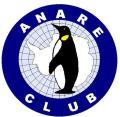
The National Council have advised that there is to be a Special General Meeting of the ANARE Club Inc., at the Bayview Eden Hotel, 6 Queens Rd. Melbourne at 2.30pm on Sunday 12 May 2013.
The object of the meeting is to table for ratification, redrafted Rules, (aka “the Constitution”), for the operation and management of the Club and to comply with changes in Victorian Government legislation.
A copy of the redrafted rules are available in pdf format on the National Website.
All Members & Proxy Voting Welcome. Proxy voting can be accessed here...
The review of the Club rules and regulations has been a 2 year work in progress. Joe Johnson in conjunction with many other members of National Council past and present, have spent countless hours drafting the new document for consideration of the ANARE Club members.
It is vital you vote so we have a representative view of the majority of ANARE Club members.
If you are unable to attend please consider forwarding on your proxy vote to Ingrid Mcgaughey or Marilyn Boydell who will be attending the meeting in person.
Although both of us will be placing a personal vote in favor of the amendments, as per proxy vote form you can clearly state whether you are in favor or against the amendments to reflect your personal wishes. We guarantee that all proxy votes forwarded to us will be taken to the meeting.
The object of the meeting is to table for ratification, redrafted Rules, (aka “the Constitution”), for the operation and management of the Club and to comply with changes in Victorian Government legislation.
A copy of the redrafted rules are available in pdf format on the National Website.
All Members & Proxy Voting Welcome. Proxy voting can be accessed here...
The review of the Club rules and regulations has been a 2 year work in progress. Joe Johnson in conjunction with many other members of National Council past and present, have spent countless hours drafting the new document for consideration of the ANARE Club members.
It is vital you vote so we have a representative view of the majority of ANARE Club members.
If you are unable to attend please consider forwarding on your proxy vote to Ingrid Mcgaughey or Marilyn Boydell who will be attending the meeting in person.
Although both of us will be placing a personal vote in favor of the amendments, as per proxy vote form you can clearly state whether you are in favor or against the amendments to reflect your personal wishes. We guarantee that all proxy votes forwarded to us will be taken to the meeting.
Hobart turns on the Auroras

from Helen Kempton, March 19 2013
The Mercury website
THESE stunning images of the Aurora Australis -- or Southern Lights -- were captured late at night just outside Hobart in late March 2013. The video can be viewed here...
Hobart is the nation's viewing hotspot for the Southern Lights and Kingston photographer Xavier Hoenner made sure he was in the right place at the right time to capture the spectacular scene
Mr Hoenner received an alert from the Bureau of Meteorology's Ionospheric Prediction Service that the stunning sky show would be visible.
Then it was just a matter of setting up his equipment away from any artificial light pollution. He chose Howden, just south of Hobart.
The IPS Space weather website said Sunday's light show was caused by a geomagnetic storm and the lights had been visible from Tasmania for several hours.
Mr Hoenner captured this shot of the dramatic light show between 11pm and midnight.
He said the time-lapse sequence was made up of 124 photos taken at 33-second intervals.
Here are the vital statistics for photography boffins -- aperture f/3.5; shutter speed 30 seconds; and ISO 640.
An aurora is a natural light display that occurs in both northern and southern hemispheres.
In the south, Aurora Australis is best viewed from South Georgia Island, Tasmania, Stewart Island in New Zealand, the Falkland Islands and Argentina.
The best light shows of all can be seen in the Arctic and Antarctic.
The Mercury website
THESE stunning images of the Aurora Australis -- or Southern Lights -- were captured late at night just outside Hobart in late March 2013. The video can be viewed here...
Hobart is the nation's viewing hotspot for the Southern Lights and Kingston photographer Xavier Hoenner made sure he was in the right place at the right time to capture the spectacular scene
Mr Hoenner received an alert from the Bureau of Meteorology's Ionospheric Prediction Service that the stunning sky show would be visible.
Then it was just a matter of setting up his equipment away from any artificial light pollution. He chose Howden, just south of Hobart.
The IPS Space weather website said Sunday's light show was caused by a geomagnetic storm and the lights had been visible from Tasmania for several hours.
Mr Hoenner captured this shot of the dramatic light show between 11pm and midnight.
He said the time-lapse sequence was made up of 124 photos taken at 33-second intervals.
Here are the vital statistics for photography boffins -- aperture f/3.5; shutter speed 30 seconds; and ISO 640.
An aurora is a natural light display that occurs in both northern and southern hemispheres.
In the south, Aurora Australis is best viewed from South Georgia Island, Tasmania, Stewart Island in New Zealand, the Falkland Islands and Argentina.
The best light shows of all can be seen in the Arctic and Antarctic.
Captain Scotts last letter on public display

Photo: Graham Barclay/Bloomberg
By Alice Vincent
Full article on The Telegraph news website
Captain Scott's last letter, from inside his final Antarctic camp in March 1912, has gone on public display for the first time, 101 years after the polar explorer's death.Captain Scott at the South Pole and his final letter revealing his dying thoughts were of his wife and son
The letter is addressed to Admiral Sir Francis Bridgeman, who was Scott's former commanding officer in the Royal Navy. In it, Scott expresses his anxiety for his wife and two-year-old son, asking Bridgeman to ensure they are looked after in his absence.
Scott poignantly admits he is at the end of his adventure, writing: "I fear we have shipped up – a close shave."
The letter has been quoted in part before, but was not made public in full until today as the letter was passed into private hands after it was delivered to Bridgeman. It was bought by the Scott Polar Research Institute at the University of Cambridge for £78,816, with donated funds.
Scott wrote eight letters as he faced death. There is one still in private ownership, addressed to Edgar Speyer, after it was sold last year in auction for £165,000.
It is believed the explorer died on 29 March, after writing his final diary entry, which ended: "It seems a pity, but I do not think I can write more. R. Scott. For God's sake look after our people." Read more...
Scott's last letter to Admiral Sir Francis Bridgeman
My dear Sir Francis,
I fear we have shipped up – a close shave. I am writing a few letters which I hope will be delivered some day. I want to thank you for the friendship you gave me of late years, and to tell you how extraordinarily pleasant I found it to serve under you. I want to tell you I was not too old for this job. It was the younger men that went under first.
Finally, I want you to secure a competence for my widow and boy. I leave them very ill provided for, but feel the country ought not to neglect them. After all we are setting a good example to our countrymen, if not by getting into a tight place, by facing it like men when we were there. We could have come back through had we neglected the sick. Goodbye and goodbye to dear Lady Bridgeman.
Yours ever, R Scott
Excuse writing, it is minus 40, and has been for nigh a month.
Full article on The Telegraph news website
Captain Scott's last letter, from inside his final Antarctic camp in March 1912, has gone on public display for the first time, 101 years after the polar explorer's death.Captain Scott at the South Pole and his final letter revealing his dying thoughts were of his wife and son
The letter is addressed to Admiral Sir Francis Bridgeman, who was Scott's former commanding officer in the Royal Navy. In it, Scott expresses his anxiety for his wife and two-year-old son, asking Bridgeman to ensure they are looked after in his absence.
Scott poignantly admits he is at the end of his adventure, writing: "I fear we have shipped up – a close shave."
The letter has been quoted in part before, but was not made public in full until today as the letter was passed into private hands after it was delivered to Bridgeman. It was bought by the Scott Polar Research Institute at the University of Cambridge for £78,816, with donated funds.
Scott wrote eight letters as he faced death. There is one still in private ownership, addressed to Edgar Speyer, after it was sold last year in auction for £165,000.
It is believed the explorer died on 29 March, after writing his final diary entry, which ended: "It seems a pity, but I do not think I can write more. R. Scott. For God's sake look after our people." Read more...
Scott's last letter to Admiral Sir Francis Bridgeman
My dear Sir Francis,
I fear we have shipped up – a close shave. I am writing a few letters which I hope will be delivered some day. I want to thank you for the friendship you gave me of late years, and to tell you how extraordinarily pleasant I found it to serve under you. I want to tell you I was not too old for this job. It was the younger men that went under first.
Finally, I want you to secure a competence for my widow and boy. I leave them very ill provided for, but feel the country ought not to neglect them. After all we are setting a good example to our countrymen, if not by getting into a tight place, by facing it like men when we were there. We could have come back through had we neglected the sick. Goodbye and goodbye to dear Lady Bridgeman.
Yours ever, R Scott
Excuse writing, it is minus 40, and has been for nigh a month.
Earliest satellite maps of Antarctic and Arctic sea-ice

The NSIDC project examined almost 40,000 images from the Nimbus-1 archive to produce the September 1964 maps of Arctic (L) and Antarctic (R) sea-ice extent
By Jonathan AmosScience correspondent, BBC News
24th April 2013
Full text can be accessed here...
The earliest satellite maps of Arctic and Antarctic sea-ice have been assembled by scientists.
They were made using data from Nasa's Nimbus-1 spacecraft, which was launched in 1964 to test new technologies for imaging weather systems from orbit. The satellite's old pictures have now been re-analysed to determine the extent of the marine ice at the poles in the September of that year.
Regular mapping from space did not begin until 1978.
One key finding is that marine floes around the White Continent in the 1960s were probably just as extensive as they are today. The new snapshot, published in The Cryosphere journal, therefore helps put current ice conditions into a longer-term context, say researchers at the US National Snow and Ice Data Centre (NSIDC).
It is also just a fascinating story of how old scientific data can be given a new lease of life.
Matching upThe Nimbus-1 satellite was a short-lived mission that observed the Earth's clouds in black and white video, which it transmitted to the ground as an analogue TV signal. Those transmissions were then photographed on to 35mm film and archived. The NSIDC team had to pull the canisters containing the original film out of storage to perform the re-analysis.
Continue reading the main story
Want to be the postmistress of Antarctica?
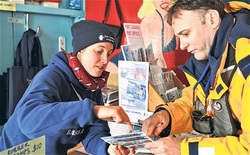
Postmistress Cat Totty helping a customer at the British Post Office, Port Lockroy Photo: Rick Price
Adapted from article by Christopher Middleton, The Telegraph website
For full article read here...
Applications are now open for a new Port Lockroy postmistress (or master, male applicants are welcome, though a man has never been chosen), starting November.
The UKAHT is looking for a certain amount of retail experience, along with fluency in a foreign language (French or German preferred), and the ability both to speak in public and keep paths clear of penguin guano. The latter qualification is crucial: despite Port Lockroy’s remote location, it hosts some 18,000 cruise ship passengers during the summer months. Most come to look around the post office museum, which harks back to the days when this was a secret British base monitoring German naval movements during World War Two. Back then, a team of 10 men would live here for two and a half years at a time as part of Operation Tabarin. While watching for enemy ships, the Tabarin team also monitored territory-grabbing attempts by foreign governments. Both the Argentinians and Chileans staked claims by dropping legal documents in canisters from the sky, while the Germans scattered steel markers bearing swastika symbols.
The average working day is 15 hours long, pay is between £1,000 and £1,500 per month, and getting there involves travelling by boat for four days and crossing Drake’s Passage, one of the most turbulent stretches of water known to man.
The UKAHT will only consider applicants with fairly high degrees of physical fitness. “There is very little prospect out there of getting immediate medical help”, says Land. “The location is too remote for helicopters to be able to get there, which means the nearest doctor is probably three days away on a ship.”
There are three other members of staff at Port Lockroy: the base leader, the shop manager and a chronicler of the resident penguin colony.
To apply for the post of Port Lockroy postmistress (or postmaster), during the months November 2013 to March 2014, or for any of the other three positions mentioned above, visit ukaht.org and email your application, with letter, CV and self-declared medical form, to [email protected] by noon on April 26.
Win free flights to Hobart at Midwinters...

As part of the Midwinter festivities, Dark MOFO is giving away $100,000 worth of flights to Hobart from mainland capital cities. There are a few conditions, such as a minimum stay in Hobart for 2 nights, but with so much on at this time, including the Tasmanian Midwinter dinner, you'll want to stay longer anyway...
Further details can be accessed here...
the dark MOFO program can be accessed here....
Further details can be accessed here...
the dark MOFO program can be accessed here....
Nude Solstice Swim
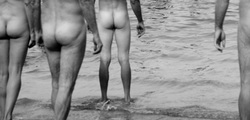
In some parts of the world, it's normal to swim nude during winter solstice. The Dark MOFO festival means to make it normal here, too.
While not an official ANARE Club event, we have heard of several members who are taking part and thought there may be one or two...or more...who would want to relive the midwinter dip sans bathers....
When: Saturday 22nd June at 07.42am....
Where: Nutgrove Beach, Sandy Bay
Cost: free
Registration is essential
Registrations open May 11. To receive more information register your interest here.
While not an official ANARE Club event, we have heard of several members who are taking part and thought there may be one or two...or more...who would want to relive the midwinter dip sans bathers....
When: Saturday 22nd June at 07.42am....
Where: Nutgrove Beach, Sandy Bay
Cost: free
Registration is essential
Registrations open May 11. To receive more information register your interest here.
MONA opening night for The Red Queen...

Mona's major exhibition opens on Tuesday June 18th 2013, with free entry for all on that day. (even mainlanders...) We are doing away with the hoity-toity tomfoolery and throwing our doors open till midnight instead. There will be food and music, as always; when you've eaten and drunk and danced there's always the art… The Red Queen is an assemblage of major commissions, exciting loans, and yet-unseen works from our own collection.
The concept emerged from a comment David Walsh made to curators about the fact that he built the museum 'as an attempt to understand why people make art'. Could it be, ask we, that art is part of a broader evolutionary imperative? Does the compulsion to create permeate our species because it, in some way, enhances our capacity to survive and procreate? Don't look for an answer. Just enjoy yourself, and ruminate.
The concept emerged from a comment David Walsh made to curators about the fact that he built the museum 'as an attempt to understand why people make art'. Could it be, ask we, that art is part of a broader evolutionary imperative? Does the compulsion to create permeate our species because it, in some way, enhances our capacity to survive and procreate? Don't look for an answer. Just enjoy yourself, and ruminate.
Casey 88 reunion at Tas MWD
Tom Maggs has offered to take over organising the Casey 88 reunion at the Tasmanian Midwinter dinner in Hobart. He is missing some contact details for members of this group. If you are interested in coming along, or simply making contact with Tom, please contact Tom via email ([email protected]) or facebook.
posted 23/3/2013
Tom Maggs has offered to take over organising the Casey 88 reunion at the Tasmanian Midwinter dinner in Hobart. He is missing some contact details for members of this group. If you are interested in coming along, or simply making contact with Tom, please contact Tom via email ([email protected]) or facebook.
posted 23/3/2013
Barend (Barry) Beckers Macca blog
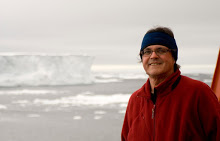
Meterorologist Barend Becker has returned down south and is now wintering at Macquarie Island. He is communicating with a number of schools via a blog which can be accessed here...
Macca 'Edge of Nowhere' DVD released ABC shops

Dean Miller wintered at Macquarie Island in 2010. He mad a documentary which was recently seen on the ABC in late February 2013. The documentary has now been released as a DVD in ABC shops, retailing for $20.
The ABC blurb.....
'Macquarie Island, situated in the cold and furious Southern Ocean, is one of the most remote and little known places on Earth and is the last green outpost of land before the ice of the Antarctic. Here, on this tiny island at the end of the world, resides one of the largest concentrations of wildlife on the planet.
Dean Miller, scientist and marine biologist, dedicated twelve months of his life living on the island to study and document the return of the Antarctic fur seals from the brink of extinction.
Armed with a High Definition camera, Dean set out to observe and document every type of seal, every type of penguin, killer whales and every marine bird you can think of, and in the process captured the unique stories of each of these creatures and the wild island that they call home. It is a wild, colourful and rich story; it is the Edge of Nowhere.'
The ABC blurb.....
'Macquarie Island, situated in the cold and furious Southern Ocean, is one of the most remote and little known places on Earth and is the last green outpost of land before the ice of the Antarctic. Here, on this tiny island at the end of the world, resides one of the largest concentrations of wildlife on the planet.
Dean Miller, scientist and marine biologist, dedicated twelve months of his life living on the island to study and document the return of the Antarctic fur seals from the brink of extinction.
Armed with a High Definition camera, Dean set out to observe and document every type of seal, every type of penguin, killer whales and every marine bird you can think of, and in the process captured the unique stories of each of these creatures and the wild island that they call home. It is a wild, colourful and rich story; it is the Edge of Nowhere.'
About the Documentary
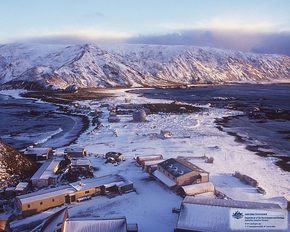
Documentaries - Edge of Nowhere
Dr Dean Miller - Website
Synopsis
Director's Statement
Cast Biography
Crew Biographies
Dr Dean Miller - Website
Synopsis
Director's Statement
Cast Biography
Crew Biographies
Greens Antarctic and Marine Science Initiative will boost Hobart’s global reputation

Media release from Christine Milne, Leader Greens party, Parliament House, Canberra, ACT 2600
15 Mar 2013 | Christine Milne Antarctica
The Australian Greens have today launched a $205 million policy initiative to properly resource Australia's Antarctic and Marine Science.
"Antarctica is the world's last great wilderness area. It is an incredible place for scientific exploration and provides an unparalleled source of information on our climate and health of our oceans. It is also a fantastic opportunity for Tasmania." said Senator Christine Milne, launching the initiative.
The Australian Greens propose to:
"Additional funding to Antarctic science and marine research will help promote Hobart as a science hub and reinforce the branding of Tasmania as clean, green and clever. We have already attracted four of the lead authors of the Inter-Governmental Panel on Climate Change to Hobart. This gives us an incredible reputation globally.
"A globally renowned science research centre will attract other countries to make Hobart a base for collaborative research and re- supply. I met the leader of the Chinese Antarctic expedition recently and he was quite enthusiastic about that idea. Wouldn't it be fantastic if we could attract the Chinese to make Hobart their Antarctic base?" said Senator Milne
Anna Reynolds, Greens candidate for Denison launched the Initiative with Senator Milne. "We are in a privileged position in Tasmania to be the global gateway to Antarctic exploration, marine and climate research. The Greens package is the investment needed to secure Hobart into the future as a globally recognised hub for Antarctic science and marine research.The federal government has taken its eye off the ball with this important sector - with funding cuts and uncertainty risking Hobart's reputation as the global hub for Antarctic science."
information supplied by Louise Crossley with thanks
posted 22nd March 2013
15 Mar 2013 | Christine Milne Antarctica
The Australian Greens have today launched a $205 million policy initiative to properly resource Australia's Antarctic and Marine Science.
"Antarctica is the world's last great wilderness area. It is an incredible place for scientific exploration and provides an unparalleled source of information on our climate and health of our oceans. It is also a fantastic opportunity for Tasmania." said Senator Christine Milne, launching the initiative.
The Australian Greens propose to:
- Fund an International Antarctic Science research centre/ joint venture - $10 million a year
- Restore funding for the Australian Antarctic Division (AAD) - $0.5 million a year
- Ensure ongoing funding for the Integrated Marine Observing System of $18 million a year
- Provide capacity for the new RV Investigator ship to do up to 300 days marine research (instead of 65) - $24.7 million a year
"Additional funding to Antarctic science and marine research will help promote Hobart as a science hub and reinforce the branding of Tasmania as clean, green and clever. We have already attracted four of the lead authors of the Inter-Governmental Panel on Climate Change to Hobart. This gives us an incredible reputation globally.
"A globally renowned science research centre will attract other countries to make Hobart a base for collaborative research and re- supply. I met the leader of the Chinese Antarctic expedition recently and he was quite enthusiastic about that idea. Wouldn't it be fantastic if we could attract the Chinese to make Hobart their Antarctic base?" said Senator Milne
Anna Reynolds, Greens candidate for Denison launched the Initiative with Senator Milne. "We are in a privileged position in Tasmania to be the global gateway to Antarctic exploration, marine and climate research. The Greens package is the investment needed to secure Hobart into the future as a globally recognised hub for Antarctic science and marine research.The federal government has taken its eye off the ball with this important sector - with funding cuts and uncertainty risking Hobart's reputation as the global hub for Antarctic science."
information supplied by Louise Crossley with thanks
posted 22nd March 2013
Stay..the last dog in Antarctica
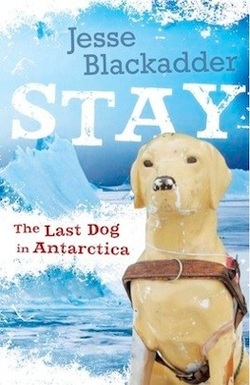
“...into the annals of modern polar history strays another character - part legend, part myth, part fibreglass. She is Stay, the Last Dog of Antarctica” - The Age
Author Jesse Blackadder is also planning to release a book on the iconic 'Stay' in July 2013. Her website reads...
'...Based on the true story of a fibreglass Guide Dog who was smuggled to the southern continent in 1991 and is still there today, “Stay: the last dog in Antarctica ” follows Stay’s adventures as she is hidden, liberated, repatriated and dognapped all over again. Antarctica is full of adventures, but will Stay ever manage to raise money for the Royal Guide Dogs and find a way to get it back to Australia?...'
For 8-12 year olds (and anyone who loves Antarctica). Due out 1 July 2013 with ABC Books.
Stories and rumours about Stay abound, but if you have your own Stay stories and photographs please send them to:
and we'll set up a page on the ANARE Tas branch website.
Iconic photos wanted!!!
Each year the Tas branch makes up a series of small cards for guests at our Midwinter dinner. Over the last few years we have featured images by Chris Wilson, Martyn Passingham and Nick Roden. This year we would like to add several new images.
If you have a digital copy of a photo you think would look great, and are happy to share it, please email the image by 16th April 2013 to
Each year the Tas branch makes up a series of small cards for guests at our Midwinter dinner. Over the last few years we have featured images by Chris Wilson, Martyn Passingham and Nick Roden. This year we would like to add several new images.
If you have a digital copy of a photo you think would look great, and are happy to share it, please email the image by 16th April 2013 to
Ideally we would like to have a mix of older and more contemporary images.
The name of the chosen photographers is acknowledged on the card.
We would be happy to present a number of postcards and business cards to the owners of the chosen images as a thank you.
And of course copyright remains with the owner of the photograph...
The name of the chosen photographers is acknowledged on the card.
We would be happy to present a number of postcards and business cards to the owners of the chosen images as a thank you.
And of course copyright remains with the owner of the photograph...
Philip Law Medal
Nominations for awardees for the 2013 Phillip Law Medal are invited. Details are on the National website. Please give consideration to possible candidates for this great honour. The time frame is fairly short. In order that the announcement can be made at Midwinter 2013, nominations close on 1 April 2013.
Nominations for awardees for the 2013 Phillip Law Medal are invited. Details are on the National website. Please give consideration to possible candidates for this great honour. The time frame is fairly short. In order that the announcement can be made at Midwinter 2013, nominations close on 1 April 2013.
Heard Island trip report by Jan Adolph

In August 2012 the Australian Antarctic Division asked me to travel to Heard Island to collect building materials from the former ANARE Station at Atlas Cove to be analysed for asbestos content. In September 2012 a berth was arranged on the Heritage Expeditions ship, Spirit of Enderby, which was travelling to Heard Island in November 2012.
The Spirit of Enderby departed Fremantle on 8 November. For nine days we sailed west through wild seas to Amsterdam Island. Many of the passengers were bird spotting enthusiasts and the sighting of the very rare Amsterdam Albatross was greeted with much excitement. From Amsterdam Island we turned south to Heard Island, arriving off Atlas Cove on the morning of 20 November, 13 days after leaving Fremantle. A south-westerly gale brought rain and snow, so no landing could be made.
The next day we sailed to Spit Bay to see if the conditions were suitable for landing; unfortunately they were not. While returning to Atlas Cove the weather improved and views of Big Ben, bathed in sunshine between the clouds were enjoyed. By 2pm the weather had improved sufficiently and we were able to go ashore by IRB. The landing point was at the southern end of Atlas Cove, over a kilometre from the former ANARE Station. During my time ashore I collected about thirty material samples which were analysed on my return to Hobart. We had about 7 hours ashore, with the last IRB leaving from the southern landing point at 9pm.
From the ship we watched the sun set on Big Ben, magnificent!
The Spirit of Enderby departed Fremantle on 8 November. For nine days we sailed west through wild seas to Amsterdam Island. Many of the passengers were bird spotting enthusiasts and the sighting of the very rare Amsterdam Albatross was greeted with much excitement. From Amsterdam Island we turned south to Heard Island, arriving off Atlas Cove on the morning of 20 November, 13 days after leaving Fremantle. A south-westerly gale brought rain and snow, so no landing could be made.
The next day we sailed to Spit Bay to see if the conditions were suitable for landing; unfortunately they were not. While returning to Atlas Cove the weather improved and views of Big Ben, bathed in sunshine between the clouds were enjoyed. By 2pm the weather had improved sufficiently and we were able to go ashore by IRB. The landing point was at the southern end of Atlas Cove, over a kilometre from the former ANARE Station. During my time ashore I collected about thirty material samples which were analysed on my return to Hobart. We had about 7 hours ashore, with the last IRB leaving from the southern landing point at 9pm.
From the ship we watched the sun set on Big Ben, magnificent!

Since the return of long term expeditions to Heard Island the former ANARE station buildings at Atlas Cove have deteriorated considerably. Presently there is only one building, the Mess/Recreation Hut, still standing. This building is in extremely poor condition and is covered with a cargo net in an attempt to keep it intact.
On 22 November the weather deteriorated again so it was decided to visit McDonald Island, about 40 kilometres to the west of Heard Island.
The fourth day at Heard Island, 23 November, brought better weather and another landing was made in the morning. This time the landing site was on the beach near the former ANARE Station. All passengers were back on board for lunch after which we left Heard Island and headed for Albany.
After another 9 days of rough weather we arrived back in the Port of Albany.
I would like to acknowledge and thank Rodney Russ and the Staff of Heritage Expeditions for all their assistance prior to and during the voyage to Heard Island.
Jan Adolph
posted 17/3/2013
On 22 November the weather deteriorated again so it was decided to visit McDonald Island, about 40 kilometres to the west of Heard Island.
The fourth day at Heard Island, 23 November, brought better weather and another landing was made in the morning. This time the landing site was on the beach near the former ANARE Station. All passengers were back on board for lunch after which we left Heard Island and headed for Albany.
After another 9 days of rough weather we arrived back in the Port of Albany.
I would like to acknowledge and thank Rodney Russ and the Staff of Heritage Expeditions for all their assistance prior to and during the voyage to Heard Island.
Jan Adolph
posted 17/3/2013
ANARE Club Berth 2013/14
Applications are now open for consideration as the occupant of the traditional ANARE Club berth on one of the voyages next summer. We do not yet know if a berth will be available, as it is the gift of the Division and there is always a high demand for space. But we are proceeding with selection well ahead of time as notice of availability may come late. Details, selection criteria and an application form are on our national website. Please make this known among your members. Application close on 30 June 2013.
David Ellyard
Applications are now open for consideration as the occupant of the traditional ANARE Club berth on one of the voyages next summer. We do not yet know if a berth will be available, as it is the gift of the Division and there is always a high demand for space. But we are proceeding with selection well ahead of time as notice of availability may come late. Details, selection criteria and an application form are on our national website. Please make this known among your members. Application close on 30 June 2013.
David Ellyard
2012/13 Club berth report

As previous announced the Club was awarded a berth on a voyage south this summer, largely to recruit new Club members from amongst the expeditioners.
We are grateful as always for the generosity of the Division.
The berth was on the Casey resupply voyage leaving on the17th December 2012 (V2) for the Casey resupply.
The National Council of the Club chose long-serving member Trevor Gadd from South Australia to carry the flag on this occasion
Trevors voyage reports can be accessed on the ANARE NSW branch website here...
Check Trevor'sVoyage track here...
posted 17/3/2013
We are grateful as always for the generosity of the Division.
The berth was on the Casey resupply voyage leaving on the17th December 2012 (V2) for the Casey resupply.
The National Council of the Club chose long-serving member Trevor Gadd from South Australia to carry the flag on this occasion
Trevors voyage reports can be accessed on the ANARE NSW branch website here...
Check Trevor'sVoyage track here...
posted 17/3/2013
Mawson mountains features on new AAT stamps...
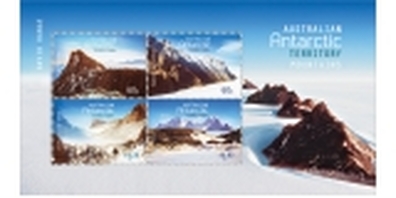
Australia Post has released 4 more stamps of AAT mountains. They include Mt Parsons, Mawson Escarpment, South Masson Range and David Range.
These stamps continue the Australian Antarctic Territory (AAT) Landscapes series which began with the iceberg issue in 2011. The mountains and mountain ranges featured reveal the beauty and grandeur of the landscape.
Antarctica is the highest continent on earth and Mt McClintock, in the eastern sector of the AAT is its highest mountain. Although elevations in excess of 4,000 metres exist in the western sector of the AAT, these are ice domes and generally not considered mountains, but the definition is frequently debated.
Mt Parsons near Mawson Base is one of the most regularly ascended peaks due to the repeater installed on its summit. The repeater facilitates communications on VHF band between field parties back to station around the area. Mt Parsons rises more than 1,000 metres above sea level.
Technical details
Issue date: 12 March 2013
Issue withdrawal date: 31 August 2013
FDI withdrawal date: 11 April 2013
Denominations: 2 x 60c, 2 x $1.20, 1 x $1.80
Stamp & product design: Sharon Rodziewicz
Information from the Australia Post website.
Further information and purchase can be accessed here...
And special thanks to Bill Storer for providing the initial information...
posted 16/3/13
These stamps continue the Australian Antarctic Territory (AAT) Landscapes series which began with the iceberg issue in 2011. The mountains and mountain ranges featured reveal the beauty and grandeur of the landscape.
Antarctica is the highest continent on earth and Mt McClintock, in the eastern sector of the AAT is its highest mountain. Although elevations in excess of 4,000 metres exist in the western sector of the AAT, these are ice domes and generally not considered mountains, but the definition is frequently debated.
Mt Parsons near Mawson Base is one of the most regularly ascended peaks due to the repeater installed on its summit. The repeater facilitates communications on VHF band between field parties back to station around the area. Mt Parsons rises more than 1,000 metres above sea level.
Technical details
Issue date: 12 March 2013
Issue withdrawal date: 31 August 2013
FDI withdrawal date: 11 April 2013
Denominations: 2 x 60c, 2 x $1.20, 1 x $1.80
Stamp & product design: Sharon Rodziewicz
Information from the Australia Post website.
Further information and purchase can be accessed here...
And special thanks to Bill Storer for providing the initial information...
posted 16/3/13
Advances in non lethal minke whale research

Photo: John Durban, AAD website
Published on Mar 14, 2013
Satellite tags have been deployed on Antarctic minke whales, giving researchers access to more comprehensive information about them than ever before.
A 3 minute video featuring an interview with AAD Chief Scientist Nick Gales and footage of the tagging can be accessed here...
Further information can be accessed on the Australian Antarctic Division website here
posted 16/3/2013
Satellite tags have been deployed on Antarctic minke whales, giving researchers access to more comprehensive information about them than ever before.
A 3 minute video featuring an interview with AAD Chief Scientist Nick Gales and footage of the tagging can be accessed here...
Further information can be accessed on the Australian Antarctic Division website here
posted 16/3/2013
New book on the first women in Antarctica

'Chasing the light', a novel by Jesse Blackadder about the first women to reach Antarctica, has been released to good reviews.
Blackadder's interest in the topic started when she saw a photograph of Ingrid Christensen in Elizabeth Chipman's book 'Women on the Ice". Christiansen was the wife of a Norwegian whaling captain, and travelled to Antarctica on four occasions. (She was not however the first woman to set foot on the Antarctic continent).
Ms Blackadder, who won the 2011-2012 Australian Antarctic Arts Fellowship, spent six weeks on an Antarctic voyage and visited Davis Station in Antarctica, as part of her research for the novel.
Ms Blackadder also won the Guy Morrison Prize for Literary Journalism in 2012.
Blackadder's interest in the topic started when she saw a photograph of Ingrid Christensen in Elizabeth Chipman's book 'Women on the Ice". Christiansen was the wife of a Norwegian whaling captain, and travelled to Antarctica on four occasions. (She was not however the first woman to set foot on the Antarctic continent).
Ms Blackadder, who won the 2011-2012 Australian Antarctic Arts Fellowship, spent six weeks on an Antarctic voyage and visited Davis Station in Antarctica, as part of her research for the novel.
Ms Blackadder also won the Guy Morrison Prize for Literary Journalism in 2012.
A trailer on the novel 'Chasing the Light' can be accessed here...
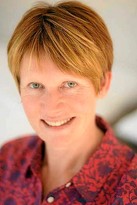
Jesse Blackadder. Photo by David Young.
Chasing the Light by Jesse Blackadder is published by Fourth Estate Australia, $29.99.
Read more here:
The Age Newspaper book review by Nick Galvin
“The first woman in Antarctica” - Australian Antarctic magazine
“The story behind Chasing the Light’s cover” - blog
Australian Geographic also has a feature article by Jesse Blackadder on the first women in Antarctica in the march /April 2013 publication.
Thanks to Anthea Wallhead for the initial lead on the story..
posted 16/3/13
Antarctic Lake Vostok yields 'new bacterial life'

By Paul Rincon, Science editor, BBC News website
7th March 2013.
Link provided by Owen Holmwood with thanks
Russian scientists have claimed the discovery of a new type of bacterial life in water from a buried Antarctic lake.
The researchers have been studying samples brought up from Vostok - the largest subglacial lake in Antarctica.
Last year, the team drilled through almost 4km (2.34 miles) of ice to reach the lake and retrieve samples. Vostok is thought to have been cut off from the surface for millions of years. This has raised the possibility that such isolated bodies of water might host microbial life forms new to science.
"After putting aside all possible elements of contamination, DNA was found that did not coincide with any of the well-known types in the global database," said Sergei Bulat, of the genetics laboratory at the St Petersburg Institute of Nuclear Physics. "We are calling this life form unclassified and unidentified," he explained. Dr Bulat added that close attention was focused on one particular form of bacteria whose DNA was less than 86% similar to previously existing forms.
Lake Vostok is situated in one of the most inhospitable places on Earth "A level of 90% usually means that the organism is unknown."
However, other researchers said the data needed to be carefully verified by other experts before the claims could be confirmed.
The Vostok drilling project took years to plan and implement. The lake's location in the heart of the East Antarctic Ice Sheet makes it one of the most inhospitable environments on the planet. It is the place where thermometers recorded the lowest ever temperature on Earth - minus 89C on 21 July 1983.
Vostok Station was set up by the Russians in 1956, and their seismic soundings soon suggested there was an area of liquid underneath all the ice. However, it was only in the 1990s that British scientists, with the help of radar, were able to determine the full extent of the sub-glacial feature. With an area of 15,000 square km and with depths reaching more than 800m, Lake Vostok is similar in size to Lake Baikal in Siberia or Lake Ontario in North America.
The US recently broke through into another Antarctic lake - Whillans. They have also reported the discovery of microbial life in the lake waters. But Lake Whillans is thought by some to have been less isolated than Vostok.
A British expedition to drill through 3km (1.8 miles) of Antarctic ice into Lake Ellsworth was called off late last year after engineers were unable to join the main borehole with a parallel hole that was to be used to recover drilling water.
posted 11/3/2013
7th March 2013.
Link provided by Owen Holmwood with thanks
Russian scientists have claimed the discovery of a new type of bacterial life in water from a buried Antarctic lake.
The researchers have been studying samples brought up from Vostok - the largest subglacial lake in Antarctica.
Last year, the team drilled through almost 4km (2.34 miles) of ice to reach the lake and retrieve samples. Vostok is thought to have been cut off from the surface for millions of years. This has raised the possibility that such isolated bodies of water might host microbial life forms new to science.
"After putting aside all possible elements of contamination, DNA was found that did not coincide with any of the well-known types in the global database," said Sergei Bulat, of the genetics laboratory at the St Petersburg Institute of Nuclear Physics. "We are calling this life form unclassified and unidentified," he explained. Dr Bulat added that close attention was focused on one particular form of bacteria whose DNA was less than 86% similar to previously existing forms.
Lake Vostok is situated in one of the most inhospitable places on Earth "A level of 90% usually means that the organism is unknown."
However, other researchers said the data needed to be carefully verified by other experts before the claims could be confirmed.
The Vostok drilling project took years to plan and implement. The lake's location in the heart of the East Antarctic Ice Sheet makes it one of the most inhospitable environments on the planet. It is the place where thermometers recorded the lowest ever temperature on Earth - minus 89C on 21 July 1983.
Vostok Station was set up by the Russians in 1956, and their seismic soundings soon suggested there was an area of liquid underneath all the ice. However, it was only in the 1990s that British scientists, with the help of radar, were able to determine the full extent of the sub-glacial feature. With an area of 15,000 square km and with depths reaching more than 800m, Lake Vostok is similar in size to Lake Baikal in Siberia or Lake Ontario in North America.
The US recently broke through into another Antarctic lake - Whillans. They have also reported the discovery of microbial life in the lake waters. But Lake Whillans is thought by some to have been less isolated than Vostok.
A British expedition to drill through 3km (1.8 miles) of Antarctic ice into Lake Ellsworth was called off late last year after engineers were unable to join the main borehole with a parallel hole that was to be used to recover drilling water.
posted 11/3/2013
Vale Ian Bruce C88, Q97 and multiple round trips...

Ian Bruce died unexpectedly at his home in Burleigh Heads Queensland on the 16th March 2013.
Ian has been a long term ANARE Club member, and more recently was elected to National Council where he made significant suggestions and changes as the new webmaster.
Further details:
Ian's father, John Bruce advises that there will be a private family service at the funeral directors chapel Monday 25th March 2013.
Should anyone wish to send condolences, John Bruces address is:
21 ELANORA DRIVE
BURLEIGH HEADS
QLD 4220
updated 19/3/2013
Ian has been a long term ANARE Club member, and more recently was elected to National Council where he made significant suggestions and changes as the new webmaster.
Further details:
Ian's father, John Bruce advises that there will be a private family service at the funeral directors chapel Monday 25th March 2013.
Should anyone wish to send condolences, John Bruces address is:
21 ELANORA DRIVE
BURLEIGH HEADS
QLD 4220
updated 19/3/2013
Vale John Hogg M69

Dr John Hogg, the doctor at Mawson in 1969 died on March 1st 2013 after a short illness. He is remembered fondly by the remaining members of his year.
HOGG, Emeritus Professor John OAM.
10.1.1943 - 1.3.2013
John passed away at his home in Wollongong surrounded by his loving family, after a short
and brave battle with Metastatic Melanoma. "A gentleman beyond all description", his loss will be felt by many from old school mates, fellow Antarctic expeditioners, by patients, colleagues, students, friends and family. He made an outstanding contribution to the practice of medicine in the Illawarra over the past three decades culminating in his pivotal role in the establishment of the Graduate School of Medicine, at the University
of Wollongong.
The University has generously offered to host a Memorial Service to provide an opportunity to honour his memory. The Memorial Service will be held at Wollongong University Hall, on Saturday April 6, 2013 at 2 p.m. Please RSVP to [email protected]
The obituary in his local newspaper the Illawarra Mercury gives further insight on John.
Professor John Hogg was ‘‘a gentleman beyond all description,’’ whose generosity to the community and medicine was immeasurable.
One of the Illawarra’s most respected doctors, Prof Hogg died yesterday following a short illness.
A renowned vascular and general surgeon, Prof Hogg touched the lives of countless patients across the region and beyond and his loss has been felt deeply in the medical community.
Prof Hogg and wife Linda, a physiotherapist, moved to the Illawarra in the late 70s, raising their four children in the region. The couple were in Bali at the time of the 2002 terrorist bombings and chose to abandon their holiday to instead help treat the horrific injuries of the Australian victims. For their work in Bali both were awarded Order of Australia Medals, while Prof Hogg was also named Wollongong Citizen of the Year in January 2003.
He joined the University of Wollongong in 2004 as Foundation Dean of the Medical School, working closely with Professors Don Iverson and Lori Lockyer to develop the school’s innovative curriculum and unique community-based model. Prof Iverson said the school would not exist today had it not been for the work of Prof Hogg.
After 35 years practicing medicine, Prof Hogg gave up his career to join academia and the push for a medical school in Wollongong. He managed to get the medical community’s backing for the school through dogged campaigning and by travelling through regional NSW meeting and working with doctors.
‘‘The legacy that he leaves behind is that all these future doctors that come out of here are here because of John Hogg,’’ Prof Iverson said.
‘‘I think I’ll remember him as a person that always had a smile on his face, always engaging with everybody, never having a bad word to say. ‘‘He lived life to the fullest, he loved people, he loved his family. ‘‘People who are fortunate to know him are blessed,’’ he said.
Retired paediatrician Dr Allen James yesterday paid tribute to his friend and praised his many achievements. ‘‘He was an outstanding person, in a crowd he stood out...just such a delightful guy really,’’ h said.
Prof Hogg is survived by wife Linda, children Genevieve, Sophie, James and Katie and his grandchildren.
HOGG, Emeritus Professor John OAM.
10.1.1943 - 1.3.2013
John passed away at his home in Wollongong surrounded by his loving family, after a short
and brave battle with Metastatic Melanoma. "A gentleman beyond all description", his loss will be felt by many from old school mates, fellow Antarctic expeditioners, by patients, colleagues, students, friends and family. He made an outstanding contribution to the practice of medicine in the Illawarra over the past three decades culminating in his pivotal role in the establishment of the Graduate School of Medicine, at the University
of Wollongong.
The University has generously offered to host a Memorial Service to provide an opportunity to honour his memory. The Memorial Service will be held at Wollongong University Hall, on Saturday April 6, 2013 at 2 p.m. Please RSVP to [email protected]
The obituary in his local newspaper the Illawarra Mercury gives further insight on John.
Professor John Hogg was ‘‘a gentleman beyond all description,’’ whose generosity to the community and medicine was immeasurable.
One of the Illawarra’s most respected doctors, Prof Hogg died yesterday following a short illness.
A renowned vascular and general surgeon, Prof Hogg touched the lives of countless patients across the region and beyond and his loss has been felt deeply in the medical community.
Prof Hogg and wife Linda, a physiotherapist, moved to the Illawarra in the late 70s, raising their four children in the region. The couple were in Bali at the time of the 2002 terrorist bombings and chose to abandon their holiday to instead help treat the horrific injuries of the Australian victims. For their work in Bali both were awarded Order of Australia Medals, while Prof Hogg was also named Wollongong Citizen of the Year in January 2003.
He joined the University of Wollongong in 2004 as Foundation Dean of the Medical School, working closely with Professors Don Iverson and Lori Lockyer to develop the school’s innovative curriculum and unique community-based model. Prof Iverson said the school would not exist today had it not been for the work of Prof Hogg.
After 35 years practicing medicine, Prof Hogg gave up his career to join academia and the push for a medical school in Wollongong. He managed to get the medical community’s backing for the school through dogged campaigning and by travelling through regional NSW meeting and working with doctors.
‘‘The legacy that he leaves behind is that all these future doctors that come out of here are here because of John Hogg,’’ Prof Iverson said.
‘‘I think I’ll remember him as a person that always had a smile on his face, always engaging with everybody, never having a bad word to say. ‘‘He lived life to the fullest, he loved people, he loved his family. ‘‘People who are fortunate to know him are blessed,’’ he said.
Retired paediatrician Dr Allen James yesterday paid tribute to his friend and praised his many achievements. ‘‘He was an outstanding person, in a crowd he stood out...just such a delightful guy really,’’ h said.
Prof Hogg is survived by wife Linda, children Genevieve, Sophie, James and Katie and his grandchildren.
Book Launch: Madigan's Account: The Mawson Expedition (C.T. Madigan)

Professor Patrick Quilty (Honorary Research Professor in Earth Sciences, and the Institute for Marine and Antarctic Studies at the University of Tasmania) will be launching Madigan's Account: The Mawson Expedition (The Antarctic Diaries of C. T. Madigan 1911-1914).
These diaries describe the experiences of Cecil Thomas Madigan in Antarctica as a member of the Australasian Antarctic Expedition. Madigan gives his account of the first year at the main base at Cape Denison.
The transcriber, Julia W. Madigan, will also be in attendance.
When: Thursday March 7 @ 17.30
Where: The Hobart Bookshop, 22 Salamanca Square Hobart Tasmania Ph. 03 6223 1803
Cost: free
posted 5/3/2013
These diaries describe the experiences of Cecil Thomas Madigan in Antarctica as a member of the Australasian Antarctic Expedition. Madigan gives his account of the first year at the main base at Cape Denison.
The transcriber, Julia W. Madigan, will also be in attendance.
When: Thursday March 7 @ 17.30
Where: The Hobart Bookshop, 22 Salamanca Square Hobart Tasmania Ph. 03 6223 1803
Cost: free
posted 5/3/2013
V4 departs
The final voyage of the 2012/13 shipping season departed Thursday 28th February for the Macquarie Island resupply and changeover. The Aurora Australis is due home on the 14th March 2013.
The final voyage of the 2012/13 shipping season departed Thursday 28th February for the Macquarie Island resupply and changeover. The Aurora Australis is due home on the 14th March 2013.
Invite to opening of Traversing Antarctica exhibition
The Western Australian Museum has sent an invite for 1-2 people to attend the launch of 'Traversing Antarctica' in Geraldton, WA on Friday 15th March 2013 @ 17.30.
If you are interested in attending please ring Ingrid or Michael on 0402 677 483 or 03 6224 8573 by 11 th March so we can RSVP names for entry.
posted 5/3/2013
The Western Australian Museum has sent an invite for 1-2 people to attend the launch of 'Traversing Antarctica' in Geraldton, WA on Friday 15th March 2013 @ 17.30.
If you are interested in attending please ring Ingrid or Michael on 0402 677 483 or 03 6224 8573 by 11 th March so we can RSVP names for entry.
posted 5/3/2013
Traversing Antarctica exhibition opens in Geraldton
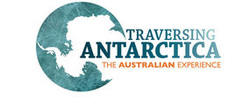
Traversing Antarctica highlights Australia's connection with the Antarctic and has beendeveloped by the National Archives of Australia in partnership with the Australian Antarctic Division and Western Australian Museum, with support from the Tasmanian Museum and Art Gallery and South Australian Museum.
The exhibition includes a rare collection of artifacts that are on display together for the first time, among them are original equipment and diaries used by members of the Australasian Antarctic Expedition. The exhibition is interesting as rather than focus predominantly on Sir Douglas Mawson, there is a real attempt to highlight the contribution of other AAE members. One of the most moving exhibits is Stillwell's diary with the sentence '...still no Mawson...'
The exhibition is opening on 16th March 2013 until 26th may 2013. It will then continue to tour nationally until 2014. The ANARE Club and Pat Quilty were consulted by curator Jane McKnight for expert advice in the development stages of the exhibition (and appreciate being recognised on the exhibition acknowledgements board!) It is pleasing to see a number of large format photographs by ANARE Club member Chris Wilson as well as several hobby items made by ANARE expeditioners in the exhibition.
Where: West Australian Museum, 1 Museum place, Batavia Coast Marina, Geraldton.
When: 16th March -26th May 2013.
Cost: free
The exhibition includes a rare collection of artifacts that are on display together for the first time, among them are original equipment and diaries used by members of the Australasian Antarctic Expedition. The exhibition is interesting as rather than focus predominantly on Sir Douglas Mawson, there is a real attempt to highlight the contribution of other AAE members. One of the most moving exhibits is Stillwell's diary with the sentence '...still no Mawson...'
The exhibition is opening on 16th March 2013 until 26th may 2013. It will then continue to tour nationally until 2014. The ANARE Club and Pat Quilty were consulted by curator Jane McKnight for expert advice in the development stages of the exhibition (and appreciate being recognised on the exhibition acknowledgements board!) It is pleasing to see a number of large format photographs by ANARE Club member Chris Wilson as well as several hobby items made by ANARE expeditioners in the exhibition.
Where: West Australian Museum, 1 Museum place, Batavia Coast Marina, Geraldton.
When: 16th March -26th May 2013.
Cost: free
Registrations open for Antarctic science conference
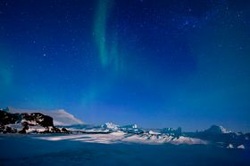
Antarctic night sky (Photo: Chris Wilson)
From Australian Antarctic Division website with thanks
Registration is now open for the ‘Strategic Science in Antarctica’ conference to be held from 24-26 June 2013 at the University of Tasmania in Hobart.
The inaugural conference is a collaboration between Australian Antarctic Division and Antarctica New Zealand, and will feature a number of key note speakers, science presentations, poster displays and social functions.
A series of post-conference workshops will also take place on 27 and 28 June.
Australian Antarctic Division Chief Scientist, Dr Nick Gales said he hoped the strategic science theme will encourage researchers to think about how their research informs and shapes policy.
“The conference will highlight the important role science plays in informing environmental management and biodiversity conservation in Antarctica, the Southern Ocean and beyond,” Dr Gales said.
“We welcome abstracts for presentations, posters or workshops under six key sub-themes: physical change and global connections; marine ecosystems; land and coastal marine; data management; frontier science and science communication,” Dr Gales said.
The conference will provide an opportunity for Antarctic scientists, researchers, policy and support personnel from institutions across Australia and New Zealand to exchange information on existing and planned research, management and policy priorities and to identify opportunities for further collaboration.
Abstract submission is open until 8 April, and early bird registration rates are available until 10 May.
A special reduced registration rate is available for full-time students.
Visit the conference website for further information, to view the call for abstracts or to register.
Slushies Choice... The Thing...

Valmar Kurol of the Montreal Antarctic Society has compiled a list of fictional movies about Antarctica.
This months feature for our newsletter is The Thing (USA 2011).
The well known 1982 cult classic and annual ‘drive in’ event at the ANARE stations has been has now been developed as a prequel.
Valmar Kurol writes...'Directed by Matthijs van Heijningen Jr., featuring May Elizabeth Winstead, Joel Edgerton and Ulrich Thomsen and a cast of Swedish and Norwegian actors.
This film was developed as the prequel to the 1982 classic of the same name by John Carpenter, in which an alien being takes on human form at an American Antarctic base, following its discovery at a deserted Norwegian base.
The current film explains the beginnings of the 1982 film. A gritty female scientist is invited to a dig at a Norwegian base in Antarctica, where the scientists uncover an alien and its space ship buried in the ice. Paranoia ensues.
While one film review had fun with descriptions of “an animate pile of chocolate Jell-O adorned with a couple of half-eaten human heads” and “a series of attacks and counter-attacks with an overused flame-thrower” (Globe & Mail), it seems to have been accepted as “no great thing but just a better Thing than expected” (Globe & Mail) and “a whole lot better than it had any right to be” (Montreal Gazette). Orchestrated music is by the American composer Marco Beltrami.
Both films were predated by the original The Thing (From Another World), a 1951 movie by Howard Hawks, in which the polar base was an Arctic one, rather than Antarctic. All three films were based on the 1938 short story, Who Goes There?, by John W. Campbell.
The list can be accessed here…
This months feature for our newsletter is The Thing (USA 2011).
The well known 1982 cult classic and annual ‘drive in’ event at the ANARE stations has been has now been developed as a prequel.
Valmar Kurol writes...'Directed by Matthijs van Heijningen Jr., featuring May Elizabeth Winstead, Joel Edgerton and Ulrich Thomsen and a cast of Swedish and Norwegian actors.
This film was developed as the prequel to the 1982 classic of the same name by John Carpenter, in which an alien being takes on human form at an American Antarctic base, following its discovery at a deserted Norwegian base.
The current film explains the beginnings of the 1982 film. A gritty female scientist is invited to a dig at a Norwegian base in Antarctica, where the scientists uncover an alien and its space ship buried in the ice. Paranoia ensues.
While one film review had fun with descriptions of “an animate pile of chocolate Jell-O adorned with a couple of half-eaten human heads” and “a series of attacks and counter-attacks with an overused flame-thrower” (Globe & Mail), it seems to have been accepted as “no great thing but just a better Thing than expected” (Globe & Mail) and “a whole lot better than it had any right to be” (Montreal Gazette). Orchestrated music is by the American composer Marco Beltrami.
Both films were predated by the original The Thing (From Another World), a 1951 movie by Howard Hawks, in which the polar base was an Arctic one, rather than Antarctic. All three films were based on the 1938 short story, Who Goes There?, by John W. Campbell.
The list can be accessed here…
New BAS station operational
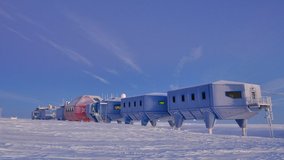
by Jonathon Amos, BBC Science correspondent
from BBC news website
View video with Architect Hugh Broughton explaining how Halley VI was built in extreme conditions (flash player needed)
Britain's new Halley research station in the Antarctic goes into full operation this month.
The base sits on the Brunt Ice Shelf, and is the sixth such UK facility to be erected at this location since 1957. Together with Rothera on the Antarctic Peninsula, it will spearhead UK science on the White Continent.
Halley gathers important weather and climate data, and it played a critical role in the research that identified the ozone "hole" in 1985. In recent years, Halley has also become a major centre for studying solar activity and the impacts it can have on Earth. This is most evident in the beautiful auroras that form over the base - the consequence of particles from the Sun crashing into air molecules high in the atmosphere. Halley VI's researchers now have a state-of-the-art complex from which to monitor these phenomena.
Perhaps the most striking thing about the new station is its appearance. "It looks like something in space," says architect Hugh Broughton.
The British Antarctic Survey (BAS) station comprises eight modules in all. The seven blue ones are work and habitation units. The central red module, which is on two storeys, is the social hub where residents can gather to relax. It contains the dining room, the bar and even a gym.
The entire base stands on a hydraulic leg and ski system that allows it to be raised above the annual snowfall, and periodically to be towed closer to land. If these adjustments were not to happen, the station would eventually be buried and carried to the ice edge where it would then be dropped into the ocean.
Halley bases I to IV were abandoned to this fate. The new design makes the adjustments easier and less labour intensive. The station was constructed in large part in South Africa and then shipped to the Antarctic in easy-to-assemble units.
"The idea was to prefabricate as much as possible," explained Karl Tuplin, the project manager for the Halley VI building programme. "Room pods, bedrooms, bathrooms - they were all made in advance. Mechanical, electrical services - the wires and piping - came in cassettes that were just slotted into place." The hope is, some refurbishment notwithstanding, the new Halley can last 30-40 years before a wholly new structure is required.
"The feedback has been great," Mr Broughton told BBC News. "In the last station, not everyone had a window from their bedroom. Now everyone's got a view. The acoustics are better, and there're more opportunities to rest. But also the working conditions are much better and there's a far greater array of different scientific experiments now possible at Halley VI compared to Halley V."
The old station has just been dismantled and all its parts removed from the Antarctic.
Thanks to Ian Thomas and Phil Barnaart for providing the links..
posted: 8th February 2013
from BBC news website
View video with Architect Hugh Broughton explaining how Halley VI was built in extreme conditions (flash player needed)
Britain's new Halley research station in the Antarctic goes into full operation this month.
The base sits on the Brunt Ice Shelf, and is the sixth such UK facility to be erected at this location since 1957. Together with Rothera on the Antarctic Peninsula, it will spearhead UK science on the White Continent.
Halley gathers important weather and climate data, and it played a critical role in the research that identified the ozone "hole" in 1985. In recent years, Halley has also become a major centre for studying solar activity and the impacts it can have on Earth. This is most evident in the beautiful auroras that form over the base - the consequence of particles from the Sun crashing into air molecules high in the atmosphere. Halley VI's researchers now have a state-of-the-art complex from which to monitor these phenomena.
Perhaps the most striking thing about the new station is its appearance. "It looks like something in space," says architect Hugh Broughton.
The British Antarctic Survey (BAS) station comprises eight modules in all. The seven blue ones are work and habitation units. The central red module, which is on two storeys, is the social hub where residents can gather to relax. It contains the dining room, the bar and even a gym.
The entire base stands on a hydraulic leg and ski system that allows it to be raised above the annual snowfall, and periodically to be towed closer to land. If these adjustments were not to happen, the station would eventually be buried and carried to the ice edge where it would then be dropped into the ocean.
Halley bases I to IV were abandoned to this fate. The new design makes the adjustments easier and less labour intensive. The station was constructed in large part in South Africa and then shipped to the Antarctic in easy-to-assemble units.
"The idea was to prefabricate as much as possible," explained Karl Tuplin, the project manager for the Halley VI building programme. "Room pods, bedrooms, bathrooms - they were all made in advance. Mechanical, electrical services - the wires and piping - came in cassettes that were just slotted into place." The hope is, some refurbishment notwithstanding, the new Halley can last 30-40 years before a wholly new structure is required.
"The feedback has been great," Mr Broughton told BBC News. "In the last station, not everyone had a window from their bedroom. Now everyone's got a view. The acoustics are better, and there're more opportunities to rest. But also the working conditions are much better and there's a far greater array of different scientific experiments now possible at Halley VI compared to Halley V."
The old station has just been dismantled and all its parts removed from the Antarctic.
Thanks to Ian Thomas and Phil Barnaart for providing the links..
posted: 8th February 2013
Techport at Osborne downplays Antarctic icebreaker project claims
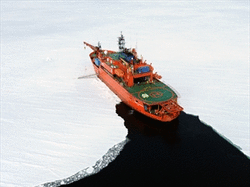
from news.com.au website
'...ADELAIDE-based Commonwealth shipbuilder ASC has downplayed suggestions it will construct an icebreaker for the Federal Government.
The Antarctic division of the Environment Department has initiated a request for proposal - the first step in bidding - for a replacement for the Aurora Australis.
"We have invited industry to come forward with cost-effective proposals for a new ship ... but no decisions have yet been made on proceeding with further stages of the procurement," Environment Minister Tony Burke said in announcing the request last month...
...Government-owned ship builder ASC said today it had made no decision yet on whether to respond to the opportunity...'
posted: 8th February 2013
'...ADELAIDE-based Commonwealth shipbuilder ASC has downplayed suggestions it will construct an icebreaker for the Federal Government.
The Antarctic division of the Environment Department has initiated a request for proposal - the first step in bidding - for a replacement for the Aurora Australis.
"We have invited industry to come forward with cost-effective proposals for a new ship ... but no decisions have yet been made on proceeding with further stages of the procurement," Environment Minister Tony Burke said in announcing the request last month...
...Government-owned ship builder ASC said today it had made no decision yet on whether to respond to the opportunity...'
posted: 8th February 2013
Aurora Australis to be replaced
The Australian Government, acting through the Australian Antarctic Division, is currently seeking proposals for the design, construction and ongoing operation and maintenance of a new research and supply icebreaker. (info on the AusTender website).
The plan to replace the Hobart based icebreaker Aurora Australis was formally announced over a year ago by previous Australian Antarctic Division Director Lyn Maddock.
The 23-year-old ship has made over 120 voyages 'down south' and while owned by P&O maritime services, is under lease to the Australian Antarctic Division until 2016.
The Environment minister Mr Burke said the Government had allocated $1.7 million in 2012–13 for the development of a detailed business case for a new Antarctic shipping capability, including essential associated infrastructure and support.
Further information on the Aurora Australis can be accessed here...
The Australian Government, acting through the Australian Antarctic Division, is currently seeking proposals for the design, construction and ongoing operation and maintenance of a new research and supply icebreaker. (info on the AusTender website).
The plan to replace the Hobart based icebreaker Aurora Australis was formally announced over a year ago by previous Australian Antarctic Division Director Lyn Maddock.
The 23-year-old ship has made over 120 voyages 'down south' and while owned by P&O maritime services, is under lease to the Australian Antarctic Division until 2016.
The Environment minister Mr Burke said the Government had allocated $1.7 million in 2012–13 for the development of a detailed business case for a new Antarctic shipping capability, including essential associated infrastructure and support.
Further information on the Aurora Australis can be accessed here...
Governor General visits Antarctica
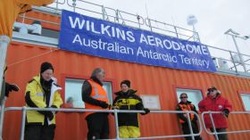
from AAD website with thanks!
5th February 2013
Governor-General, Ms Quentin Bryce AC CVO, has become the first Australian Governor-General to travel to Antarctica.
Her Excellency today flew to the Wilkins runway in Australia’s Antarctic Territory as part of the ongoing centenary celebrations of the Australasian Antarctic Expedition 1911-1914 led by scientist and polar explorer, Dr Douglas Mawson.
Ms Bryce was greeted at Wilkins by Allan Cooney, station leader at nearby Casey station and a number of scientists and support personnel who are crucial to the success of Australia’s Antarctic program. She also toured the communications facilities and living quarters, and experienced the confines of a remote field camp.
In honour of the Mawson-led expedition one hundred years ago, Her Excellency unveiled a plaque. Rather than a traditional unveiling, the plaque had been set in ice which Ms Bryce cracked with a small hammer to reveal its inscription marking the event...
...The Governor-General was accompanied on the early morning flight from Hobart by the Director of the Australian Antarctic Division, Dr Tony Fleming and Climate Program Leader, Dr Tas van Ommen, among others.
Ms Bryce returned to Hobart this afternoon on the flight which also brought back some summer expeditioners whose research on the Antarctic continent has come to a close for this season.
5th February 2013
Governor-General, Ms Quentin Bryce AC CVO, has become the first Australian Governor-General to travel to Antarctica.
Her Excellency today flew to the Wilkins runway in Australia’s Antarctic Territory as part of the ongoing centenary celebrations of the Australasian Antarctic Expedition 1911-1914 led by scientist and polar explorer, Dr Douglas Mawson.
Ms Bryce was greeted at Wilkins by Allan Cooney, station leader at nearby Casey station and a number of scientists and support personnel who are crucial to the success of Australia’s Antarctic program. She also toured the communications facilities and living quarters, and experienced the confines of a remote field camp.
In honour of the Mawson-led expedition one hundred years ago, Her Excellency unveiled a plaque. Rather than a traditional unveiling, the plaque had been set in ice which Ms Bryce cracked with a small hammer to reveal its inscription marking the event...
...The Governor-General was accompanied on the early morning flight from Hobart by the Director of the Australian Antarctic Division, Dr Tony Fleming and Climate Program Leader, Dr Tas van Ommen, among others.
Ms Bryce returned to Hobart this afternoon on the flight which also brought back some summer expeditioners whose research on the Antarctic continent has come to a close for this season.
Tas Midwinter festivities including dinner

The main event is the ANARE (Tas branch) Midwinter Dinner which will be held in Hobart on Saturday 21st June 2013. We encourage you to come along...it's sure to be a great night with a wide mix of ANARE expeditioners and their guests. Last year 160 people attended. Each attending ANARE expeditioner /AA crew is welcome to invite a guest to the dinner...husband, wife, partner, friend, son, daughter...whoever!
This year we are pleased to announce a number of special reunions including Davis 2003 and Macquarie Island 2000 (so far...).
Further information on the dinner and list of attendees can be accessed on our website.There will also be a number of other events occurring in Tasmania around the same time. If you are from the mainland, why not catch several other events while you are down here!! We will be listing more midwinter festivities as details become available...
Further information on the dinner and list of attendees can be accessed on our website.There will also be a number of other events occurring in Tasmania around the same time. If you are from the mainland, why not catch several other events while you are down here!! We will be listing more midwinter festivities as details become available...
Dark MOFO midwinter festival

Following the success of the recent MOFO festival in Hobart, there are now plans to host a Midwinter festival. Called DARK MOFO, the festival will embrace a number of events between the 14 to 24 June 2013.
Although formal programming has yet to be announced, Dark Mofo will commence with a large-scale fire and light event at Salamanca, and will include a night market at Princes Wharf 1 with music programmed by Brian Ritchie, a headline musical artist, and partnerships with existing events including the Festival of Voices.
Although formal programming has yet to be announced, Dark Mofo will commence with a large-scale fire and light event at Salamanca, and will include a night market at Princes Wharf 1 with music programmed by Brian Ritchie, a headline musical artist, and partnerships with existing events including the Festival of Voices.
Tours of the ice breaker Aurora Australis

The Masters of the Aurora Australis in conjunction with P&O have offered to run a tour of the Australian icebreaker Aurora Australis.
A tour of the Aurora Australis will be on the weekend of the 21/22nd June (date and time yet to be confirmed).
Please meet outside the front doors (city side) of Princess Wharf 1...just next to Salamanca.
Covered /enclosed shoes will need to be worn
When: to be confirmed
Where: Please meet outside the front doors (city side) of Princess Wharf 1...just next to Salamanca
Cost: free
A tour of the Aurora Australis will be on the weekend of the 21/22nd June (date and time yet to be confirmed).
Please meet outside the front doors (city side) of Princess Wharf 1...just next to Salamanca.
Covered /enclosed shoes will need to be worn
When: to be confirmed
Where: Please meet outside the front doors (city side) of Princess Wharf 1...just next to Salamanca
Cost: free
The Longest Night Film Festival

The Longest Night Film Festival is held at the State Theatre, North Hobart. A short season of cutting edge documentaries and historical film footage from the frozen south, and north! Open to all including members of the public. Further details of the program and session times will be available on the State Theatre website closer to the date.
Where: 375 Elizabeth Street, North Hobart
When: Friday 21st -Monday 24th June 2013
Cost: TBA but usually around Adult $18, Senior $14
Where: 375 Elizabeth Street, North Hobart
When: Friday 21st -Monday 24th June 2013
Cost: TBA but usually around Adult $18, Senior $14
Polar Pathways Walking Tour

An interesting 1.5 hour guided walk showcasing Hobart’s rich Antarctic history and connections with local guides from Polar Pathways can be organised for interested groups, or individuals if sufficient numbers (around 10 people) .
Pace: gentle.
Dates: to be announced
Cost: $15.00 pp. A minimum of 10 bookings are required for the walk to proceed. Participants will be notified of the departure point prior.
Further tours can be organised for reunion or other groups on request. If interested please contact us.
There is also the opportunity to do your own self guided polar pathways tour. Walking and driving options are available. Brochures can be collected from the Tasmanian Museum and Art Gallery, the Tourist Information Centre in Hobart , or a copy downloaded from the excellent Polar Pathways website.
The Polar Pathways website also offers the opportunity to download additional information on Polar Pathways sites and explorers, by clicking here.
To further enhance your experience of the Polar Pathways walking and driving tours, Podcasts are now available for all sites. Again these are available from the Polar Pathways website. Download all or just your selected sites and listen on your computer or transfer the Podcasts to your MP3 player and listen as you tour the sites.
Pace: gentle.
Dates: to be announced
Cost: $15.00 pp. A minimum of 10 bookings are required for the walk to proceed. Participants will be notified of the departure point prior.
Further tours can be organised for reunion or other groups on request. If interested please contact us.
There is also the opportunity to do your own self guided polar pathways tour. Walking and driving options are available. Brochures can be collected from the Tasmanian Museum and Art Gallery, the Tourist Information Centre in Hobart , or a copy downloaded from the excellent Polar Pathways website.
The Polar Pathways website also offers the opportunity to download additional information on Polar Pathways sites and explorers, by clicking here.
To further enhance your experience of the Polar Pathways walking and driving tours, Podcasts are now available for all sites. Again these are available from the Polar Pathways website. Download all or just your selected sites and listen on your computer or transfer the Podcasts to your MP3 player and listen as you tour the sites.
Australia mourns loss of ‘great friends’ in Antarctic plane crash
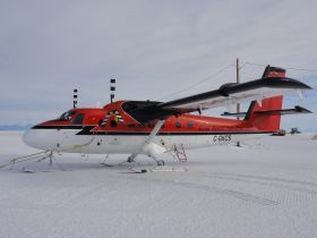
One of Kenn Borek Air's Twin Otters at McMurdo Station (Photo: Dana Bergstrom)
from AAD website
The Director of the Australian Antarctic Division Dr Tony Fleming says the Australian Antarctic community is deeply saddened by the plane crash in Antarctica and thoughts are with the families, friends and colleagues of the crew.
Dr Fleming said the Twin Otter operated by Canadian based Kenn Borek Air, which crashed in the Queen Alexandra range halfway between the South Pole and McMurdo station on Wednesday, had worked with the Australian Antarctic program over the summer season.
“The crew were great friends of the Australian Antarctic program and our expeditioners,” Dr Fleming said.
“The air crew were very well respected and had been embraced as part of our Antarctic station communities, we are deeply saddened by their loss,” he said.
“A couple of the crew had just completed a second year working with us in Antarctica performing a vital role supporting our science and moving expeditioners between stations during the season.
“I know they loved working with us and we certainly enjoyed and valued their contribution and friendship,” Dr Fleming said.
“Our hearts go out to their families, friends and colleagues at Kenn Borek Air as we share their grief at this time.”
Dr Fleming flew to Australia’s Wilkins Runway in Antarctica today to meet with some of the Antarctic expeditioners who are mourning the loss of their great friends.
The Director of the Australian Antarctic Division Dr Tony Fleming says the Australian Antarctic community is deeply saddened by the plane crash in Antarctica and thoughts are with the families, friends and colleagues of the crew.
Dr Fleming said the Twin Otter operated by Canadian based Kenn Borek Air, which crashed in the Queen Alexandra range halfway between the South Pole and McMurdo station on Wednesday, had worked with the Australian Antarctic program over the summer season.
“The crew were great friends of the Australian Antarctic program and our expeditioners,” Dr Fleming said.
“The air crew were very well respected and had been embraced as part of our Antarctic station communities, we are deeply saddened by their loss,” he said.
“A couple of the crew had just completed a second year working with us in Antarctica performing a vital role supporting our science and moving expeditioners between stations during the season.
“I know they loved working with us and we certainly enjoyed and valued their contribution and friendship,” Dr Fleming said.
“Our hearts go out to their families, friends and colleagues at Kenn Borek Air as we share their grief at this time.”
Dr Fleming flew to Australia’s Wilkins Runway in Antarctica today to meet with some of the Antarctic expeditioners who are mourning the loss of their great friends.
More on the tragedy...
From 'The Australian' newspaper
28/01/2013.
THE bodies of three Canadians who died when their plane crashed into an Antarctic mountain will not be recovered until October at the earliest, officials said today.
Conditions on the frozen continent were too dangerous for an immediate recovery operation, with the plane's cockpit embedded in snow and ice at a height of 3900m, Antarctica New Zealand (ANZ) said.
"I'm sad to say our teams have not been able to access and safely recover the remains of the crew, it's just unsafe to do so," ANZ operations manager Graeme Ayers told Radio New Zealand.
"The aircraft has suffered a major impact into the side of the mountain and the front of the aircraft is firmly embedded in snow and ice."
The Twin Otter belonged to Kenn Borek Air, a Canadian firm that charters aircraft to the US Antarctic program, and disappeared last Wednesday while on a supply run from the South Pole to Italy's Antarctic base at Terra Nova Bay.
Ayers said search crews had managed to recover some equipment from the tail of the plane but no attempt would be made to reach the bodies until conditions eased later this year.
"At this stage we're deferring the operation for recovery of any remains until the next Antarctic science season, which commences in October this year and runs through to February of the following year," he said.
Rescuers initially hoped to find the crew alive but described the crash as "not survivable" when they found the wreckage Saturday.
New Zealand coordinated the search, with cooperation from US and Italian authorities in Antarctica, because the Queen Alexandra range lies in its rescue zone.
From 'The Australian' newspaper
28/01/2013.
THE bodies of three Canadians who died when their plane crashed into an Antarctic mountain will not be recovered until October at the earliest, officials said today.
Conditions on the frozen continent were too dangerous for an immediate recovery operation, with the plane's cockpit embedded in snow and ice at a height of 3900m, Antarctica New Zealand (ANZ) said.
"I'm sad to say our teams have not been able to access and safely recover the remains of the crew, it's just unsafe to do so," ANZ operations manager Graeme Ayers told Radio New Zealand.
"The aircraft has suffered a major impact into the side of the mountain and the front of the aircraft is firmly embedded in snow and ice."
The Twin Otter belonged to Kenn Borek Air, a Canadian firm that charters aircraft to the US Antarctic program, and disappeared last Wednesday while on a supply run from the South Pole to Italy's Antarctic base at Terra Nova Bay.
Ayers said search crews had managed to recover some equipment from the tail of the plane but no attempt would be made to reach the bodies until conditions eased later this year.
"At this stage we're deferring the operation for recovery of any remains until the next Antarctic science season, which commences in October this year and runs through to February of the following year," he said.
Rescuers initially hoped to find the crew alive but described the crash as "not survivable" when they found the wreckage Saturday.
New Zealand coordinated the search, with cooperation from US and Italian authorities in Antarctica, because the Queen Alexandra range lies in its rescue zone.
Chinese icebreaker in Hobart

from 'Particle' newsletter,
organised by the Tasmanian Government Antarctic Science and Research Unit
Photo: Chinese icebreaker Xue Long sunbaking at Hobart's waterfront with the Macquarie Wharf Number 2, Antarctic redevelopment in the background.
Chinese icebreaking research vessel Xue Long, translated as ‘Snow Dragon’, arrived in Hobart for a port call on 18 January 2013, as part of China’s 29th scientific expedition to Antarctica. It resupplied in Hobart before returning to East Antarctica to conduct further research in the vicinity of a site identified for a fourth Chinese station near the Ross Sea, a location easily accessible from Hobart.
Antarctic Tasmania has been working with the Tasmanian Polar Network, the Australian Antarctic Division and the Hobart City Council to build on Hobart's reputation as a re-supply port for Antarctic nations, particularly those working in East Antarctica and the Southern Ocean. Already home port for the French and Australian Antarctic programs, the Xue Long’s visit, as well as recent visits from Japanese research vessels, are increasing Hobart’s profile as a centre of excellence.
Read more
If you wish to subscribe to Particle' newsletter please click here...
organised by the Tasmanian Government Antarctic Science and Research Unit
Photo: Chinese icebreaker Xue Long sunbaking at Hobart's waterfront with the Macquarie Wharf Number 2, Antarctic redevelopment in the background.
Chinese icebreaking research vessel Xue Long, translated as ‘Snow Dragon’, arrived in Hobart for a port call on 18 January 2013, as part of China’s 29th scientific expedition to Antarctica. It resupplied in Hobart before returning to East Antarctica to conduct further research in the vicinity of a site identified for a fourth Chinese station near the Ross Sea, a location easily accessible from Hobart.
Antarctic Tasmania has been working with the Tasmanian Polar Network, the Australian Antarctic Division and the Hobart City Council to build on Hobart's reputation as a re-supply port for Antarctic nations, particularly those working in East Antarctica and the Southern Ocean. Already home port for the French and Australian Antarctic programs, the Xue Long’s visit, as well as recent visits from Japanese research vessels, are increasing Hobart’s profile as a centre of excellence.
Read more
If you wish to subscribe to Particle' newsletter please click here...
Antarctic Arts Fellowship applications due
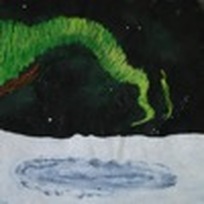
By previous recipient Stephen Eastaugh
info from AAD website
The Australian Antarctic Division is now accepting applications for the 2013–14 Australian Antarctic Arts Fellowship.
Each year, the Australian Government awards an Arts Fellowship to enable those with a non-science focus the opportunity to experience Antarctica and Australia’s work there first-hand so they may communicate this experience and understanding to others.
The program aims to nurture the production of excellent and significant works of art and interpretation by leading professionals and talented emerging artists.
Favel Parrett, Arts Fellow for 2012–13 recently returned to Australia after travelling to Antarctica as part of her research for her novel about the Nella Dan – a supply ship that was used by the Australian Antarctic Division for 26 years.
Ms Parrett said she would encourage anyone with a passion for Antarctica to apply.
“It will change your work in ways that you can’t even imagine. It will change you in ways you can’t even imagine.”
“And once you have seen it – the beauty, the stillness of the ice, the intense power of the Southern Ocean – it will be with you forever,” she said.
Previous participants have included sound artist Philip Samartzis; mixed-media artist Stephen Eastaugh; installation artist David Burrows; printmaker Jörg Schmeisser; dancer and choreographer Tina Evans; children’s authors and illustrators Coral Tulloch and Alison Lester.
Applications can be submitted online, and are due by 30 March 2013.
“Don’t miss this opportunity to do something that not many get a chance to do,” Ms Parrett said.
More information
The Australian Antarctic Division is now accepting applications for the 2013–14 Australian Antarctic Arts Fellowship.
Each year, the Australian Government awards an Arts Fellowship to enable those with a non-science focus the opportunity to experience Antarctica and Australia’s work there first-hand so they may communicate this experience and understanding to others.
The program aims to nurture the production of excellent and significant works of art and interpretation by leading professionals and talented emerging artists.
Favel Parrett, Arts Fellow for 2012–13 recently returned to Australia after travelling to Antarctica as part of her research for her novel about the Nella Dan – a supply ship that was used by the Australian Antarctic Division for 26 years.
Ms Parrett said she would encourage anyone with a passion for Antarctica to apply.
“It will change your work in ways that you can’t even imagine. It will change you in ways you can’t even imagine.”
“And once you have seen it – the beauty, the stillness of the ice, the intense power of the Southern Ocean – it will be with you forever,” she said.
Previous participants have included sound artist Philip Samartzis; mixed-media artist Stephen Eastaugh; installation artist David Burrows; printmaker Jörg Schmeisser; dancer and choreographer Tina Evans; children’s authors and illustrators Coral Tulloch and Alison Lester.
Applications can be submitted online, and are due by 30 March 2013.
“Don’t miss this opportunity to do something that not many get a chance to do,” Ms Parrett said.
More information
Leopard seal makes a meal of a penguin
A leopard seal lunges in to feast on a young penguin in graphic images highlighting the daily threat the birds face each day in the Antarctic Peninsula. Read (and see) more here...
A leopard seal lunges in to feast on a young penguin in graphic images highlighting the daily threat the birds face each day in the Antarctic Peninsula. Read (and see) more here...
Shackleton expedition sets off
from The Telegraph newspaper website
A British-Australian expedition recreating Ernest Shackleton's perilous 1916 crossing of the Southern Ocean in a small boat has set off, braced for fearsome seas and icy, bleak conditions.

The Shackleton Epic team prior to their departure from Elephant Island off the Antarctic Peninsula Photo: GETTY IMAGES
Led by renowned adventurer Tim Jarvis, the team of six plans to sail 800 nautical miles in a spartan lifeboat from Elephant Island off the Antarctic Peninsula to rugged South Georgia, their support team said.
While there were unusually moderate winds and a small swell as they pushed off, the team was heading for looming pack ice to the east as they bid to relive part of what is widely regarded as one of the greatest ever survival tales.
They plan to only use the equipment, navigational instruments and food available to Shackleton during his 16-day voyage before facing a two day climb to 2,950 feet over the mountainous, crevassed interior of South Georgia.
That will take them to the old whaling station at Stromness on the other side of the island, where Shackleton and his crew, with little more than the clothes on their backs, raised the alarm about the sinking of their ship, the Endurance.
"We are well aware of the dangers but believe we have a good little boat (an exact replica of the original James Caird), a great team and the spirit and courage to be able to honour the legend of Shackleton," Mr Jarvis said.
For further pictures of the expedition and plans of the James Caird click here...
While there were unusually moderate winds and a small swell as they pushed off, the team was heading for looming pack ice to the east as they bid to relive part of what is widely regarded as one of the greatest ever survival tales.
They plan to only use the equipment, navigational instruments and food available to Shackleton during his 16-day voyage before facing a two day climb to 2,950 feet over the mountainous, crevassed interior of South Georgia.
That will take them to the old whaling station at Stromness on the other side of the island, where Shackleton and his crew, with little more than the clothes on their backs, raised the alarm about the sinking of their ship, the Endurance.
"We are well aware of the dangers but believe we have a good little boat (an exact replica of the original James Caird), a great team and the spirit and courage to be able to honour the legend of Shackleton," Mr Jarvis said.
For further pictures of the expedition and plans of the James Caird click here...
2013 geographic South Pole marker moved
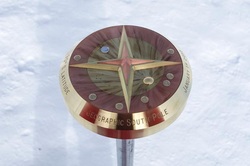
The 2013 geographic South Pole marker was installed on Jan. 1. This year's version was created by science machinist Derek Aboltins during the 2012 winter.
from the Antarctic Sun website
By Jeffrey Donenfeld, Special to the Sun
Posted January 11, 2013
As tradition dictates, on New Year’s Day the geographic South Pole marker was moved to its freshly surveyed position, and the new brass-and-copper plaque that tops the marker was revealed.
The Amundsen-Scott South Pole Station sits on a moving sheet of ice more than two miles thick. The site where the geographic marker, sign and American flag are installed drifts about 30 feet per year due to ice flow. In order to keep the marker in close proximity to the point where all the lines of longitude meet, the site is re-surveyed Jan. 1 each year. [See previous article — A good point: South Pole geographic marker changes with the times.]
The 2012 South Pole Station winter-overs engraved their names on the underside of the geographic marker.
The entire South Pole Station staff gathered outside between the old and new pole locations this year and formed a semicircle. Each person helped pass the American flag from its drifted location to the new location just beside the 90 degrees South marker.
Almost all hands were present for the ceremony, including station manager Bill Coughran, winter site manager Weeks Heist, and National Science Foundation representative Vladimir Papitashvili. The weather was sunny and a warm at just below minus 14 degrees Fahrenheit.
Once the American flag had been moved, Heist revealed the design of the newly relocated geographic South Pole marker. This year’s marker was created by science machinist Derek Aboltins during the 2012 winter. It was machined out of brass and copper.
The marker shows the position of the planets as viewed from the South Pole on Jan 1, 2013. There are seven brass planets displayed on a copper inlay. In the very center is a small copper star that marks the South Pole.
It also “represents the earth sciences done from here, as we reach out to understand our planet. The large brass star represents astronomy and astrophysics, as it extends out past our solar system in the quest for knowledge,” Aboltins wrote in his description of the marker.
“In the center of the marker (in brass) we have the sun, sunset and moon, with the Southern Cross, including the pointers. If you look carefully, the small inscription above the moon reads, ‘Accomplishment & Modesty.’ This was a reference to honor Neil Armstrong, as he passed away when I was making this section with the moon.”
There was even a nod in the design to disenfranchised Pluto: “For those of you who still think Pluto should be a planet, you’ll find it included underneath, just to keep everyone happy,” Aboltins said. “Bring back Pluto, I say!”
The previous 2012 South Pole marker was removed from its old location, and a flag was placed in its stead to mark the previous site. The 2012 marker will be displayed at the entrance of the South Pole Station.
By Jeffrey Donenfeld, Special to the Sun
Posted January 11, 2013
As tradition dictates, on New Year’s Day the geographic South Pole marker was moved to its freshly surveyed position, and the new brass-and-copper plaque that tops the marker was revealed.
The Amundsen-Scott South Pole Station sits on a moving sheet of ice more than two miles thick. The site where the geographic marker, sign and American flag are installed drifts about 30 feet per year due to ice flow. In order to keep the marker in close proximity to the point where all the lines of longitude meet, the site is re-surveyed Jan. 1 each year. [See previous article — A good point: South Pole geographic marker changes with the times.]
The 2012 South Pole Station winter-overs engraved their names on the underside of the geographic marker.
The entire South Pole Station staff gathered outside between the old and new pole locations this year and formed a semicircle. Each person helped pass the American flag from its drifted location to the new location just beside the 90 degrees South marker.
Almost all hands were present for the ceremony, including station manager Bill Coughran, winter site manager Weeks Heist, and National Science Foundation representative Vladimir Papitashvili. The weather was sunny and a warm at just below minus 14 degrees Fahrenheit.
Once the American flag had been moved, Heist revealed the design of the newly relocated geographic South Pole marker. This year’s marker was created by science machinist Derek Aboltins during the 2012 winter. It was machined out of brass and copper.
The marker shows the position of the planets as viewed from the South Pole on Jan 1, 2013. There are seven brass planets displayed on a copper inlay. In the very center is a small copper star that marks the South Pole.
It also “represents the earth sciences done from here, as we reach out to understand our planet. The large brass star represents astronomy and astrophysics, as it extends out past our solar system in the quest for knowledge,” Aboltins wrote in his description of the marker.
“In the center of the marker (in brass) we have the sun, sunset and moon, with the Southern Cross, including the pointers. If you look carefully, the small inscription above the moon reads, ‘Accomplishment & Modesty.’ This was a reference to honor Neil Armstrong, as he passed away when I was making this section with the moon.”
There was even a nod in the design to disenfranchised Pluto: “For those of you who still think Pluto should be a planet, you’ll find it included underneath, just to keep everyone happy,” Aboltins said. “Bring back Pluto, I say!”
The previous 2012 South Pole marker was removed from its old location, and a flag was placed in its stead to mark the previous site. The 2012 marker will be displayed at the entrance of the South Pole Station.
Fishing season in Antarctica
– daily reporting system to forecast fishery closure
from The Particle newsletter
Antarctica is surrounded by a rich marine environment. This area is managed by 24 countries and the European Union, through the Commission for the Conservation of Antarctic Marine Living Resources (CCAMLR), which has its secretariat in Hobart on Macquarie Street.
Vessels fishing in CCAMLR fisheries are closely monitored in order to mitigate the potential impacts on the ecosystem.
Read more
– daily reporting system to forecast fishery closure
from The Particle newsletter
Antarctica is surrounded by a rich marine environment. This area is managed by 24 countries and the European Union, through the Commission for the Conservation of Antarctic Marine Living Resources (CCAMLR), which has its secretariat in Hobart on Macquarie Street.
Vessels fishing in CCAMLR fisheries are closely monitored in order to mitigate the potential impacts on the ecosystem.
Read more
Reginald Koettlitz's photos of Scott’s Antarctica expedition revealed for first time
See more pictures here...
See more pictures here...
2013 MidWinter Lunch in United Kingdom Sat 18 May 2013
European-sector ANARE Club Members have now enjoyed two Mid Winter Functions: a Dinner in 2011 and a Lunch in 2012. Both were held in the UK, with the 2012 Lunch gaining from a British Antarctic Survey (BAS) Club representative joining with the ANARE Club Members.
Paul Gigg* and Ian Thomas* are again planning to organise such a MWLunch for 2013 in the UK and would like to invite any ANARE Club Members who are resident in the UK / Europe, or planning to be in the general London area on Saturday 18 May 2013 to consider joining in this get-together and celebration of our times working in Antarctica.
Due to timing constraints in Paul’s and Ian’s movements after May, the Lunch has had to be brought forward to 18 May (and closer to the 130th anniversary of Sir Douglas Mawson’s birth in Shipley Yorkshire on 05 May 1882).
It is planned to have a buffet lunch at Ian and Fiona’s home in Surrey, with hopefully too a representative of the BAS Club again joining with ANARE members.
Costings: Paul and Ian will again provide “softs”, water and juices, with each person separately bringing their own beers/wines etc and funding all transport and accommodation costs.
If any Club Member who is not already in touch with Paul Gigg or Ian Thomas and is interested in so participating, please contact the organisers before 29 March 2013 on the email addresses below, and they will ensure they update you per email with further details. Equally, if you are interested in linking in Europe but cannot join in the 2013 MWLunch and have not contacted Ian or Paul before, please also do respond and indicate your interest and you will be added to the “e-mail-out” contact list.
* Just as background:
Paul Gigg was a radio technician at Mawson in 1990 and at Macquarie in 1998 and is the UK on a posting. Email: [email protected]
Ian Thomas was an auroral physicist at Mawson in 1967, and worked with NZARP over 1975-1984 based on Scott Base; and has been resident in the UK from 1984 consulting on environmental satellite applications. Email: [email protected]
Information on the 2013 Tas Midwinter festival & dinner will be released at the end of January 2013....
European-sector ANARE Club Members have now enjoyed two Mid Winter Functions: a Dinner in 2011 and a Lunch in 2012. Both were held in the UK, with the 2012 Lunch gaining from a British Antarctic Survey (BAS) Club representative joining with the ANARE Club Members.
Paul Gigg* and Ian Thomas* are again planning to organise such a MWLunch for 2013 in the UK and would like to invite any ANARE Club Members who are resident in the UK / Europe, or planning to be in the general London area on Saturday 18 May 2013 to consider joining in this get-together and celebration of our times working in Antarctica.
Due to timing constraints in Paul’s and Ian’s movements after May, the Lunch has had to be brought forward to 18 May (and closer to the 130th anniversary of Sir Douglas Mawson’s birth in Shipley Yorkshire on 05 May 1882).
It is planned to have a buffet lunch at Ian and Fiona’s home in Surrey, with hopefully too a representative of the BAS Club again joining with ANARE members.
Costings: Paul and Ian will again provide “softs”, water and juices, with each person separately bringing their own beers/wines etc and funding all transport and accommodation costs.
If any Club Member who is not already in touch with Paul Gigg or Ian Thomas and is interested in so participating, please contact the organisers before 29 March 2013 on the email addresses below, and they will ensure they update you per email with further details. Equally, if you are interested in linking in Europe but cannot join in the 2013 MWLunch and have not contacted Ian or Paul before, please also do respond and indicate your interest and you will be added to the “e-mail-out” contact list.
* Just as background:
Paul Gigg was a radio technician at Mawson in 1990 and at Macquarie in 1998 and is the UK on a posting. Email: [email protected]
Ian Thomas was an auroral physicist at Mawson in 1967, and worked with NZARP over 1975-1984 based on Scott Base; and has been resident in the UK from 1984 consulting on environmental satellite applications. Email: [email protected]
Information on the 2013 Tas Midwinter festival & dinner will be released at the end of January 2013....
Dark MOFO: a new Midwinter festival for Tasmania

Information from Events Tasmania website
Dark MOFO - A new winter festival for TasmaniaDark MOFO will be for cornerstone of a three-month calendar of cultural activities, led by MONA, during winter next year. Dark Mofo is scheduled to take place from 14 to 24 June 2013.
The Premier and Minister for the Arts, Lara Giddings, announced on 22 October 2012 that Tasmania will host a new cultural festival, Dark Mofo, which will be held in winter 2013.
“Dark Mofo will be the cornerstone of a three-month calendar of cultural activities being led by MONA in conjunction with the Festival of Voices and other partners” Ms Giddings said
“Dark Mofo will commence with a large-scale fire and light event at Salamanca, and will include a night market at Princes Wharf 1 with music programmed by Brian Ritchie, a headline musical artist, and partnerships with existing events including the Festival of Voices.”
The festival will be centred around a major winter exhibition at MONA, which will run for approximately three months.
“Following the great success of Theatre of the World in collaboration with French curator Jean Hubert Martin and the Tasmanian Museum and Art Gallery, I am delighted that MONA will once again host a major winter exhibition during 2013.”
Ms Giddings said events play an important role in creating demand for travel to Tasmania throughout the year, and the Tasmanian Government, through Events Tasmania and Tourism Tasmania, would invest $1 million per year, for three years in the new event.
“Dark MOFO will build on the existing success of MONA FOMA as a powerful cultural tourism driver and will attract visitors to Tasmania during winter,” Ms Giddings said.
“This is particularly important to sustaining our tourism and hospitality industries through the traditionally quieter months.”
“I am delighted that David Walsh and MONA have seen an opportunity to build on the success of the summer MONAFOMA by designing a winter cultural event.” Ms Giddings said.
David Walsh, creator of MONA, attributes much of his motivation for backing Dark Mofo, to his father.
“My dad once said ‘I'll back the winter to beat any tourist business in Hobart’. He was a bit of a punter, but I've been known to have a bet myself, and I'm going to take his wager. I think he would understand why we think this is a race worth rigging,” said Walsh.
The Premier also thanked the Hobart and Glenorchy City Councils for their support of Dark Mofo and the many groups and organisations helping to make Dark Mofo a success –, Hobart’s Theatre Royal, Salamanca Arts Centre, Glenorchy Arts and Sculpture Park (GASP!), Conservatorium of Music at the University of Tasmania, CAST, the Tasmanian Museum and Art Gallery and the Tasmanian Symphony Orchestra.
“It is exciting to see the organisers of existing and proposed events working together with the promise to create an event that is larger than the sum of its parts.”
“This sort of dedication and collaboration within our arts and cultural sector is one of the reasons Tasmania now enjoys a reputation as a burgeoning cultural destination,” Ms Giddings said.
Dark MOFO - A new winter festival for TasmaniaDark MOFO will be for cornerstone of a three-month calendar of cultural activities, led by MONA, during winter next year. Dark Mofo is scheduled to take place from 14 to 24 June 2013.
The Premier and Minister for the Arts, Lara Giddings, announced on 22 October 2012 that Tasmania will host a new cultural festival, Dark Mofo, which will be held in winter 2013.
“Dark Mofo will be the cornerstone of a three-month calendar of cultural activities being led by MONA in conjunction with the Festival of Voices and other partners” Ms Giddings said
“Dark Mofo will commence with a large-scale fire and light event at Salamanca, and will include a night market at Princes Wharf 1 with music programmed by Brian Ritchie, a headline musical artist, and partnerships with existing events including the Festival of Voices.”
The festival will be centred around a major winter exhibition at MONA, which will run for approximately three months.
“Following the great success of Theatre of the World in collaboration with French curator Jean Hubert Martin and the Tasmanian Museum and Art Gallery, I am delighted that MONA will once again host a major winter exhibition during 2013.”
Ms Giddings said events play an important role in creating demand for travel to Tasmania throughout the year, and the Tasmanian Government, through Events Tasmania and Tourism Tasmania, would invest $1 million per year, for three years in the new event.
“Dark MOFO will build on the existing success of MONA FOMA as a powerful cultural tourism driver and will attract visitors to Tasmania during winter,” Ms Giddings said.
“This is particularly important to sustaining our tourism and hospitality industries through the traditionally quieter months.”
“I am delighted that David Walsh and MONA have seen an opportunity to build on the success of the summer MONAFOMA by designing a winter cultural event.” Ms Giddings said.
David Walsh, creator of MONA, attributes much of his motivation for backing Dark Mofo, to his father.
“My dad once said ‘I'll back the winter to beat any tourist business in Hobart’. He was a bit of a punter, but I've been known to have a bet myself, and I'm going to take his wager. I think he would understand why we think this is a race worth rigging,” said Walsh.
The Premier also thanked the Hobart and Glenorchy City Councils for their support of Dark Mofo and the many groups and organisations helping to make Dark Mofo a success –, Hobart’s Theatre Royal, Salamanca Arts Centre, Glenorchy Arts and Sculpture Park (GASP!), Conservatorium of Music at the University of Tasmania, CAST, the Tasmanian Museum and Art Gallery and the Tasmanian Symphony Orchestra.
“It is exciting to see the organisers of existing and proposed events working together with the promise to create an event that is larger than the sum of its parts.”
“This sort of dedication and collaboration within our arts and cultural sector is one of the reasons Tasmania now enjoys a reputation as a burgeoning cultural destination,” Ms Giddings said.
Vale Andrew McLaughlin
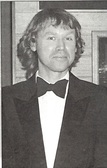
It is with great sadness that we report the passing of Andrew Mc Laughlin aged 51 years at the Lyell McEwin Hospital at Elizabeth in South Australia on 16th October 2012 after a major, courageous battle with cancer for 2 1/2 years.
Andy was a Casey 2000 Winter Electrician and he also took on extra responsibility as the Deputy Fire Captain and the Post Master.
Antarctica had been a dream for Andy for many years and he was very enthusiastic about all aspects of station life. He was a warm and friendly expeditioner who liked to socialise but most of all he loved to get out into the field away from the warmth and modernity of the Casey Red Shed!
Our thoughts are with his wife Liz and two children Sean and Erin in South Australia and his parents ken and Jan in Tasmania.
Marilyn Boydell
Andy was a Casey 2000 Winter Electrician and he also took on extra responsibility as the Deputy Fire Captain and the Post Master.
Antarctica had been a dream for Andy for many years and he was very enthusiastic about all aspects of station life. He was a warm and friendly expeditioner who liked to socialise but most of all he loved to get out into the field away from the warmth and modernity of the Casey Red Shed!
Our thoughts are with his wife Liz and two children Sean and Erin in South Australia and his parents ken and Jan in Tasmania.
Marilyn Boydell
Round 3: drills v Antarctic Ice

from the Smithsonian website
It’s been a busy year for Antarctic exploration. Earlier this year, a Russian team announced that they had managed to successfully drill through 2.4 miles of glacier ice into subglacial Lake Vostok. The Russians were looking for microbial life hidden beneath the ice, but they have so far come up empty handed. Then, in December, a British team tried and failed to push through 2 miles of Antarctic ice into another subglacial lake, Lake Ellsworth.
Scientists did recently find life hidden in Lake Vida, another Antarctic body of water. But that was a shallow and relatively young lake compared to lakes Vostok and Ellsworth.
But now, says Nature, it’s time for the Americans to try their hand. On Sunday, a team of scientists made their way from McMurdo Station to the West Antarctic Ice Sheet where they aim to sample from subglacial Lake Whillans, one of the lakes that underlies the Whillans Ice Stream. Lake Whillans is buried about half a mile down.
Later this week, the American team will begin using a hot water drill to push through the ice—the same technique used by the British Lake Ellsworth team.
According to The New York Times, the U.S.’s Lake Whillans project differs from the Vostok and Ellsworth missions “in several ways.”
Lake Whillans is smaller and not as deep, and is replenished more quickly from other water sources under the Antarctic ice shelf. It is a basin in a subglacial river where water accumulates to form a lake but keeps flowing, eventually reaching the ocean.
As such, any potential microbial life won’t likely be quite so disconnected from the environment, as is the case for the other two subglacial lakes. read more here...
You can follow along with the Lake Whillans project on twitter or on Facebook.
Follow us: @SmithsonianMag on Twitter
posted 15/1/2013
It’s been a busy year for Antarctic exploration. Earlier this year, a Russian team announced that they had managed to successfully drill through 2.4 miles of glacier ice into subglacial Lake Vostok. The Russians were looking for microbial life hidden beneath the ice, but they have so far come up empty handed. Then, in December, a British team tried and failed to push through 2 miles of Antarctic ice into another subglacial lake, Lake Ellsworth.
Scientists did recently find life hidden in Lake Vida, another Antarctic body of water. But that was a shallow and relatively young lake compared to lakes Vostok and Ellsworth.
But now, says Nature, it’s time for the Americans to try their hand. On Sunday, a team of scientists made their way from McMurdo Station to the West Antarctic Ice Sheet where they aim to sample from subglacial Lake Whillans, one of the lakes that underlies the Whillans Ice Stream. Lake Whillans is buried about half a mile down.
Later this week, the American team will begin using a hot water drill to push through the ice—the same technique used by the British Lake Ellsworth team.
According to The New York Times, the U.S.’s Lake Whillans project differs from the Vostok and Ellsworth missions “in several ways.”
Lake Whillans is smaller and not as deep, and is replenished more quickly from other water sources under the Antarctic ice shelf. It is a basin in a subglacial river where water accumulates to form a lake but keeps flowing, eventually reaching the ocean.
As such, any potential microbial life won’t likely be quite so disconnected from the environment, as is the case for the other two subglacial lakes. read more here...
You can follow along with the Lake Whillans project on twitter or on Facebook.
Follow us: @SmithsonianMag on Twitter
posted 15/1/2013
Antarctic Glacier's retreat unprecedented
from Becky Oskin, OurAmazingPlanet Staff Writer | LiveScience.com
Like a plug in a leaky dam, little Pine Island Glacier holds back part of the massive West Antarctic Ice Sheet, whose thinning ice is contributing to sea level rise.
In recent decades, Pine Island Glacier's rapid retreat raised fears that the glacier could "collapse," freeing the ice sheet it buffers to flow even more rapidly into the southern seas. The West AntarcticIce contributes 0.15 to 0.30 millimeters per year to sea level rise.
The big question is whether the hasty retreat is a recent change, caused by climate change, or a more long-term phenomenon.
"We need to know if what we observe today is something that started perhaps at the end of the last Ice Age or something that started in more recent times," said Claus-Dieter Hillenbrand, a marine geologist with the British Antarctic Survey.
Pine Island Glacier's small ice shelf, a platform of ice floating on the ocean's surface, acts as a plug, holding the rest of the ice stream in place on land. As warm ocean currents melt the ice shelf from below, inland glaciers flow down to the coast and feed the thinning ice shelf. Changes to Antarctic wind currents, driven by global warming, have pushed relatively warmer ocean waters beneath the ice shelves.
In the past 20 years, Pine Island Glacier's grounding line, the location where the glacier leaves bedrock and meets the ocean, has retreated at a rate of more than 1 kilometer a year. The glacier itself has thinned at a rate of 5 feet (1.5 meters) a year since the 1990s, and its flow rate has accelerated by 30 percent in the past 10 years.
posted 15/1/2013
from Becky Oskin, OurAmazingPlanet Staff Writer | LiveScience.com
Like a plug in a leaky dam, little Pine Island Glacier holds back part of the massive West Antarctic Ice Sheet, whose thinning ice is contributing to sea level rise.
In recent decades, Pine Island Glacier's rapid retreat raised fears that the glacier could "collapse," freeing the ice sheet it buffers to flow even more rapidly into the southern seas. The West AntarcticIce contributes 0.15 to 0.30 millimeters per year to sea level rise.
The big question is whether the hasty retreat is a recent change, caused by climate change, or a more long-term phenomenon.
"We need to know if what we observe today is something that started perhaps at the end of the last Ice Age or something that started in more recent times," said Claus-Dieter Hillenbrand, a marine geologist with the British Antarctic Survey.
Pine Island Glacier's small ice shelf, a platform of ice floating on the ocean's surface, acts as a plug, holding the rest of the ice stream in place on land. As warm ocean currents melt the ice shelf from below, inland glaciers flow down to the coast and feed the thinning ice shelf. Changes to Antarctic wind currents, driven by global warming, have pushed relatively warmer ocean waters beneath the ice shelves.
In the past 20 years, Pine Island Glacier's grounding line, the location where the glacier leaves bedrock and meets the ocean, has retreated at a rate of more than 1 kilometer a year. The glacier itself has thinned at a rate of 5 feet (1.5 meters) a year since the 1990s, and its flow rate has accelerated by 30 percent in the past 10 years.
posted 15/1/2013
And furthermore....IPCC meeting in Hobart
More than 250 lead authors of the report commissioned by the Intergovernmental panel on Climate Change (IPCC) are in Hobart for a meeting. The report is due to be released in just over eight months.
More than 250 lead authors of the report commissioned by the Intergovernmental panel on Climate Change (IPCC) are in Hobart for a meeting. The report is due to be released in just over eight months.
Australian Antarctic Division now recruiting...

from the Australian Antarctic Division website
OPPORTUNITY TO APPLY HAS BEEN EXTENDED TO 10 JANUARY 2013
Would you like to work and live in Antarctica or on Macquarie Island in the Southern Ocean?
You can!
The Australian Antarctic Division is now accepting applications for job opportunities supporting the 2013–14 Australian Antarctic Program.
Go online now and lodge your application via our online applications link. Applications will close DST midnight on 10 January 2013.
The Australian Antarctic Division recruits for a wide range of jobs in Antarctica and at Macquarie Island each season.
Periods of employment vary depending on the type of job (with initial preparation and training in Hobart, Tasmania ranging between two weeks and three months):
If your application is successful, you will become part of a team of professionals ensuring that our Antarctic Stations are safe and efficient and working to conduct important scientific research in Antarctica and the Southern Ocean.
Working and living in Antarctica is not for everyone, but if your application is successful, we will support, train and equip you for the demands of Antarctic employment. To become eligible, you will satisfy a comprehensive range of technical, personal qualities, medical fitness and psychological assessments. The AAD will ensure that you are fully informed about Antarctic employment to ensure that the experience is both safe and satisfying.
Other Benefits? You will be provided with all required cold weather clothing, accommodation and when in Antarctica, your food. This has the potential to save you thousands of dollars in costs that you would normally incur working in Australia.
If this opportunity sounds attractive to you, the links below and to the right will provide you with information that will allow you to decide whether you have the skill set and qualities which are required to perform this role.
If you decide to apply, please access the General Information document for important information.
You may like to try our working in Antarctica quiz.
Jobs availableStation Support
Antarctic Medical Practitioner
Telecommunications
Aircraft Ground Support
OPPORTUNITY TO APPLY HAS BEEN EXTENDED TO 10 JANUARY 2013
Would you like to work and live in Antarctica or on Macquarie Island in the Southern Ocean?
You can!
The Australian Antarctic Division is now accepting applications for job opportunities supporting the 2013–14 Australian Antarctic Program.
Go online now and lodge your application via our online applications link. Applications will close DST midnight on 10 January 2013.
The Australian Antarctic Division recruits for a wide range of jobs in Antarctica and at Macquarie Island each season.
Periods of employment vary depending on the type of job (with initial preparation and training in Hobart, Tasmania ranging between two weeks and three months):
- Summer jobs are generally offered for periods between early October and March–April of the following year
- Winter jobs can commence as early as July and run through until November–December of the following year
- Shorter winter opportunities may arise, between January and November–December in the same year
If your application is successful, you will become part of a team of professionals ensuring that our Antarctic Stations are safe and efficient and working to conduct important scientific research in Antarctica and the Southern Ocean.
Working and living in Antarctica is not for everyone, but if your application is successful, we will support, train and equip you for the demands of Antarctic employment. To become eligible, you will satisfy a comprehensive range of technical, personal qualities, medical fitness and psychological assessments. The AAD will ensure that you are fully informed about Antarctic employment to ensure that the experience is both safe and satisfying.
Other Benefits? You will be provided with all required cold weather clothing, accommodation and when in Antarctica, your food. This has the potential to save you thousands of dollars in costs that you would normally incur working in Australia.
If this opportunity sounds attractive to you, the links below and to the right will provide you with information that will allow you to decide whether you have the skill set and qualities which are required to perform this role.
If you decide to apply, please access the General Information document for important information.
You may like to try our working in Antarctica quiz.
Jobs availableStation Support
Antarctic Medical Practitioner
Telecommunications
- Communications Technical Officer & Supervising Communications Technical Officer
- Communications Operator
- Engineering Services Supervisor (ESS)
- Building Services Supervisor (BSS)
- Carpenter
- Electrician
- Tradesperson
- Instrument Electrician
- Plumber
- Station Mechanical Supervisor
- Expedition Mechanic
- Station Plant Operator
- Aerodrome Grader Operator
- Aerodrome Plant Operator
Aircraft Ground Support
Antarctic lake research abandoned

- Alok Jha, science correspondent
- The Guardian, Thursday 27 December 2012 14.55 GMT
Speaking to the Guardian from Antarctica, Prof Martin Siegert of the University of Edinburgh said he made the "sad decision" to halt the project in the early hours of Christmas Day, after the drilling did not go according to plan. He said the scientists remained committed to the project, however, and would return to complete the job, though that might take at least four or five years. "You don't do this kind of research without thinking about the risks involved," he said. "It is the cutting edge of science."
Scientists from the British Antarctic Survey flew to the site above Lake Ellsworth on the West Antarctic ice sheet in early December, joining a team of engineers who had already set up camp with the drilling equipment. They planned to use a hot-water "drill" to cut through the ice cap and sample the contents of the lake, which is liquid because of the extreme pressure of the ice on top of it. By looking for any forms of life in the water, which has been cut off from the rest of the world for anything up to a million years, they hoped to find clues about the evolution of life on Earth and, perhaps, the possibility of life on other planets.An ambitious British plan to search for minute forms of life in an ancient lake beneath Antarctica's ice has been suspended due to technical problems.
In a move that clears the way for US and Russian teams to take the lead, Professor Martin Siegert said technical problems and a lack of fuel had forced the closure on Christmas Day of the 7-million-pound project, which was looking for life forms and climate change clues in the lake-bed sediment.
"This is of course, hugely frustrating for us, but we have learned a lot this year," said Siegert of the University of Bristol, principal investigator for the mission, which was headed by the British Antarctic Survey (BAS).
"By the end, the equipment was working well, and much of it has now been fully field-tested," he said on the BAS website. Experts from Britain's Lake Ellsworth mission had expected to find minute forms of life in the lake three km (two miles) under Antarctica's ice, the most remote and extreme environment known on Earth.
They had also hoped that by dating bits of seashell found in the water they would have been able to ascertain when the ice sheet last broke up and to better understand the risks of it happening again. Read more....
Antarctic machinery photographic exhibition

Long recognised as a major figure in New Zealand photography, Wellington-based Anne Noble is an internationally renowned artist. Noble's work ranges from her well-known romantic 1982 essay exploring the Whanganui River to a graceful photo essay about the contemplative life of nuns, to photographs of her daughter Ruby and most recently to an exploration of the notion of the Antarctic.
A recent series on Scott Base machinery, particularly focusing on the names (usually female) of various tractors and trucks is being shown at the Stills photography gallery in Paddington, Sydney and can be accessed here...
Any stories /photos of Australian Antarctic /subantarctic machinery, especially the origin of the names and murals welcome... if we get a few we'll do a page on them...
A recent series on Scott Base machinery, particularly focusing on the names (usually female) of various tractors and trucks is being shown at the Stills photography gallery in Paddington, Sydney and can be accessed here...
Any stories /photos of Australian Antarctic /subantarctic machinery, especially the origin of the names and murals welcome... if we get a few we'll do a page on them...
And furthermore...
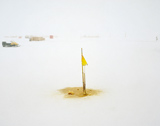
And Stills Gallery has just uploaded photographer Anna Nobles latest Antarctic series from her Scott base visit. Entitled 'Piss Poles', they are pretty self explanatory...and an unusual addition to any Antarctic Art collection....
Swathe of Antarctica renamed after Queen Elizabeth
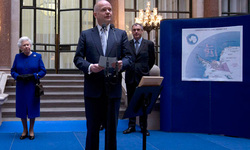
Foreign secretary William Hague announces new name.
- Jerry Brotton
- guardian.co.uk, Wednesday 19 December 2012
- Jerry Brotton
In the old days, the British empire could name huge swaths of Africa, North America or south Asia after any number of dodgy explorers and troubled aristocrats. Now the government is reduced to presenting the Queen with an uninhabited, icy desert twice the size of the UK; the only colonies here are not those of grateful subjects, but penguins and seals. As if to counter charges that this wasn't your average Christmas present, someone in the cabinet came up with the bright idea of also giving the Queen 60 placemats showing views of Buckingham Palace, the kitschness of which would make my own mother blush.
Behind all this lies a more serious point. Look at any political world map from virtually any era and you'll see how all cultures (and not just Europeans) try to impose their authority on places by naming them in their own image. From America (named after the Florentine explorer Amerigo Vespucci) to Rhodesia (created by Cecil Rhodes before it became Zimbabwe), even Greenland (from the Old Norse, and still part of the Danish kingdom), a world map offers a historical lesson in empire, warfare and colonisation just within its toponymy. The naming of Queen Elizabeth Land isn't new, but it comes at a very different moment in the history of empire. In this instance, it does not affect an indigenous people who find an alien name imposed on their land. The Foreign Office also justified its decision by saying "a currently unnamed area requires a name for scientific or logistical purposes", and that this is in line with the Antarctic treaty of 1959, which froze (to forgive the pun) competing claims to the region, making it the first truly "globalised" continent.
Today, more than 75% of Antarctica faces land and territorial claims made by Argentina, Australia, Chile, France, New Zealand, Norway, and the United Kingdom, many of which overlap, while Russia and the United States still reserve the right to make future claims. With fewer than half the world's maritime boundaries agreed according to international law, and the commercial possibilities of mining the natural resources of both the North and South Poles still to be explored, it is no wonder the Foreign Office is getting in there quickly, combining a shrewd jubilee celebration with a claim to future prospecting in a region where it has longstanding interests in claiming control over the seabed. The move will be seen as a particular provocation by Chile and Argentina, who already contest the British Antarctic Territory.
The government needs to tread carefully to avoid this becoming yet another PR gaffe. The name Queen Elizabeth Land will now be used on all British maps, but nobody else is required to adopt it, and undoubtedly few will do so. Just putting your ruler's name on the map won't do these days: it needs political and economic backing, and in today's globalised, trans-national world, it's unclear if Britain will have the authority to make this new name stick. The Queen should also bear in mind the fate that often awaits those who allow a place to be named after them. When her predecessor, the "Virgin Queen", Queen Elizabeth I allowed one of her most cherished attributes to be used in naming a rather more famous region than Antarctica, it came back to bite the British authorities in the American wars of independence. The place was called Virginia.
Reference: read here
Argentina complains to UK over QE Land 'imperialism'
The note handed over by the foreign ministry to John Freeman in Buenos Aires criticised the UK's "anachronistic imperialist ambitions that hark back to ancient practices".
The newly named area has long been claimed by Argentina as its own, along with other contested areas in the south Atlantic including the Falkland Islands, which Argentina claims as Las Malvinas.
The note expressed Argentina's "firmest rejection of the recently announced pretension of the government of the United Kingdom of Great Britain and Northern Ireland of naming an area of the Argentine Antarctic sector".
The ministry accused London of infringing the spirit of the Antarctic treaty, signed in 1959 in Washington DC by 50 nations including Britain and Argentina to preserve the Antarctic from territorial disputes by guaranteeing freedom of scientific investigation and banning military activity on the continent.
Two days ago Argentina's senate unanimously rejected the territory's new name. Read more...
- Uki Goni in Buenos Aires
- guardian.co.uk, Friday 21 December 2012
The note handed over by the foreign ministry to John Freeman in Buenos Aires criticised the UK's "anachronistic imperialist ambitions that hark back to ancient practices".
The newly named area has long been claimed by Argentina as its own, along with other contested areas in the south Atlantic including the Falkland Islands, which Argentina claims as Las Malvinas.
The note expressed Argentina's "firmest rejection of the recently announced pretension of the government of the United Kingdom of Great Britain and Northern Ireland of naming an area of the Argentine Antarctic sector".
The ministry accused London of infringing the spirit of the Antarctic treaty, signed in 1959 in Washington DC by 50 nations including Britain and Argentina to preserve the Antarctic from territorial disputes by guaranteeing freedom of scientific investigation and banning military activity on the continent.
Two days ago Argentina's senate unanimously rejected the territory's new name. Read more...
Fiennes sets off on Antarctic challenge
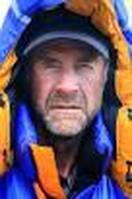
from website Western Daily Press
31st December 2012.
Veteran explorer Sir Ranulph Fiennes set off on a gruelling Antarctic challenge on Saturday – but was more worried about missing his daughter’s birthday.
He and his five-man team hope to become the first to cross the continent during the polar winter, in temperatures plummeting to minus 90C.But he will be leaving behind his only child, six-year-old Elizabeth during the six-month expedition and will miss her seventh birthday in April.
Exmoor-based Sir Ranulph, who was childless until he met his second wife Louise, said: “My late wife was usually the radio operator on my previous expeditions but when I re-married when she died seven years ago, we had a daughter so this will be the first expedition where I’m away from a child and my 18-year-old step-son.”
He does not yet know if he will be able to contact his family and said he had left presents for Elizabeth’s birthday.
He flew out on Saturday to join the SA Agulhas, the team’s ship, in Cape Town, South Africa.
The journey across the Antarctic has never before been attempted during the polar winter but a Norwegian exploring team recently crossed the Arctic during the summer months.
At 68, Sir Ranulph, who was educated at Sandroyd School, Wiltshire, is the oldest explorer to attempt the crossing and has been described by The Guinness Book of Records as “the world’s greatest living explorer”. He was the first person to visit both poles by surface and the first to cross Antarctica on foot.
He said: “In the last moment before certain expeditions there is a feeling like in the old days of not wanting to go back to school.”
In March 2013 the Ice Team, as they are known, will set off to travel 2,000 miles across the Antarctic, mostly in complete darkness and in temperatures averaging minus 70C.
During their sea voyage, the team will undertake a number of scientific tasks to provide unique data on marine life, oceanography and meteorology.
They will be using the very latest technological innovations such as transportable medical imaging machines, but these have never been tested in such severe winter conditions.
Sir Ranulph explained: “I’m particularly worried about the welding on the tracks. We are not entirely sure when they are under strain.
“We’ll need to carry a lot of food and fuel for a year for six people.”
The Ice Team includes Brian Newham, 54, a British mountaineer; Spencer Smirl, 28, a mechanic from Canada; Ian Prickett, 34, an engineer from Hampshire; Richmond Dykes, 30, an engineer from Northern Ireland and Dr Robert Lambert, from Cumbria.
The expedition aims to raise $10 million (£6.17 million) for Seeing is Believing, a charitable initiative tackling preventable blindness across the globe.
31st December 2012.
Veteran explorer Sir Ranulph Fiennes set off on a gruelling Antarctic challenge on Saturday – but was more worried about missing his daughter’s birthday.
He and his five-man team hope to become the first to cross the continent during the polar winter, in temperatures plummeting to minus 90C.But he will be leaving behind his only child, six-year-old Elizabeth during the six-month expedition and will miss her seventh birthday in April.
Exmoor-based Sir Ranulph, who was childless until he met his second wife Louise, said: “My late wife was usually the radio operator on my previous expeditions but when I re-married when she died seven years ago, we had a daughter so this will be the first expedition where I’m away from a child and my 18-year-old step-son.”
He does not yet know if he will be able to contact his family and said he had left presents for Elizabeth’s birthday.
He flew out on Saturday to join the SA Agulhas, the team’s ship, in Cape Town, South Africa.
The journey across the Antarctic has never before been attempted during the polar winter but a Norwegian exploring team recently crossed the Arctic during the summer months.
At 68, Sir Ranulph, who was educated at Sandroyd School, Wiltshire, is the oldest explorer to attempt the crossing and has been described by The Guinness Book of Records as “the world’s greatest living explorer”. He was the first person to visit both poles by surface and the first to cross Antarctica on foot.
He said: “In the last moment before certain expeditions there is a feeling like in the old days of not wanting to go back to school.”
In March 2013 the Ice Team, as they are known, will set off to travel 2,000 miles across the Antarctic, mostly in complete darkness and in temperatures averaging minus 70C.
During their sea voyage, the team will undertake a number of scientific tasks to provide unique data on marine life, oceanography and meteorology.
They will be using the very latest technological innovations such as transportable medical imaging machines, but these have never been tested in such severe winter conditions.
Sir Ranulph explained: “I’m particularly worried about the welding on the tracks. We are not entirely sure when they are under strain.
“We’ll need to carry a lot of food and fuel for a year for six people.”
The Ice Team includes Brian Newham, 54, a British mountaineer; Spencer Smirl, 28, a mechanic from Canada; Ian Prickett, 34, an engineer from Hampshire; Richmond Dykes, 30, an engineer from Northern Ireland and Dr Robert Lambert, from Cumbria.
The expedition aims to raise $10 million (£6.17 million) for Seeing is Believing, a charitable initiative tackling preventable blindness across the globe.
HEAT telescope observes star-making clouds
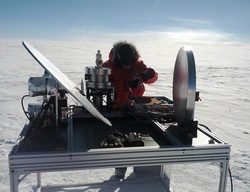
from the Antarctic Sun website
The HEAT (High elevation Antarctic terahertz) telescope has been installed at Ridge A about 900 kilometers from South Pole station in a joint Australian /US initiative.
At around 4,100 meters in altitude, and a dry atmosphere, Ridge A provides ideal conditions for looking at the molecular clouds in space.
The three-mirror telescope focuses light to a small cryostat that holds detectors cooled to 50 Kelvin (minus 370 degrees Fahrenheit). The terahertz telescope observes molecular clouds where stars are made.
The telescope “tunes” into frequencies between 0.5 and 2 THz, about 1,000 times higher than a mobile phone or 10,000 times higher than a typical two-way radio. Read more...
posted 21/12/2012
The HEAT (High elevation Antarctic terahertz) telescope has been installed at Ridge A about 900 kilometers from South Pole station in a joint Australian /US initiative.
At around 4,100 meters in altitude, and a dry atmosphere, Ridge A provides ideal conditions for looking at the molecular clouds in space.
The three-mirror telescope focuses light to a small cryostat that holds detectors cooled to 50 Kelvin (minus 370 degrees Fahrenheit). The terahertz telescope observes molecular clouds where stars are made.
The telescope “tunes” into frequencies between 0.5 and 2 THz, about 1,000 times higher than a mobile phone or 10,000 times higher than a typical two-way radio. Read more...
posted 21/12/2012
Centenary of Ninnis death
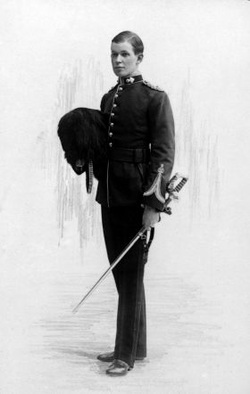
from Australian Antarctic Division website
Today, Friday 14 December 2012, marks 100 years since the death of Douglas Mawson’s sledging companion, Lieutenant Belgrave Edward Sutton Ninnis.
Ninnis was a Lieutenant in the Royal Fusiliers, an infantry regiment in the British Army, before he joined Mawson’s 1911-1914 Australasian Antarctic Expedition as a minder of the 49 Greenland huskies that would be used for sledging in Antarctica.
Ninnis was part of the three-man sledging team, the 'Far Eastern Party', with Douglas Mawson and Xavier Mertz, who headed east on 10 November 1912 to survey King George V Land.
After three weeks of excellent progress the party was crossing a glacier (now known as the Ninnis Glacier), when Ninnis fell through a snow-covered crevasse. Mertz had skied over the crevasse lid, Mawson had been on his sled with his weight dispersed, but Ninnis was jogging beside the second sled and his body weight is likely to have breached the lid.
Six of the best dogs, most of the party's rations, their tent and other essential supplies disappeared into a massive crevasse 480 km east of the main base. Mertz and Mawson spotted one dead and one injured dog on a ledge 46 m down, but Ninnis was never seen again. He was 25 years old. Read more...
Today, Friday 14 December 2012, marks 100 years since the death of Douglas Mawson’s sledging companion, Lieutenant Belgrave Edward Sutton Ninnis.
Ninnis was a Lieutenant in the Royal Fusiliers, an infantry regiment in the British Army, before he joined Mawson’s 1911-1914 Australasian Antarctic Expedition as a minder of the 49 Greenland huskies that would be used for sledging in Antarctica.
Ninnis was part of the three-man sledging team, the 'Far Eastern Party', with Douglas Mawson and Xavier Mertz, who headed east on 10 November 1912 to survey King George V Land.
After three weeks of excellent progress the party was crossing a glacier (now known as the Ninnis Glacier), when Ninnis fell through a snow-covered crevasse. Mertz had skied over the crevasse lid, Mawson had been on his sled with his weight dispersed, but Ninnis was jogging beside the second sled and his body weight is likely to have breached the lid.
Six of the best dogs, most of the party's rations, their tent and other essential supplies disappeared into a massive crevasse 480 km east of the main base. Mertz and Mawson spotted one dead and one injured dog on a ledge 46 m down, but Ninnis was never seen again. He was 25 years old. Read more...
Antarctic marine park on ice
by Matthew Denholm, Tasmanian Correspondent
published in The Australian Newspaper and online
3rd November 2012.
PLANS by Australia, the United States and other Antarctic nations to create the world's biggest marine parks, in the Southern Ocean, have been blocked by Russia and China but will be considered again next year.
The global body charged with conserving Antarctic marine life, meeting in Hobart, failed to adopt two plans for the planet's largest marine protected areas (MPAs) covering more than 4 million square kilometres of ocean.
While the proponents - Australia and France, and the United States and New Zealand - apparently secured majority support, the historic move was blocked by China, Russia and the Ukraine late last night.
The 25-member Commission for the Conservation of Marine Living Resources (CCAMLR) makes decisions by consensus only, meaning the proposals were defeated with the effective veto of Russia and China. Australia's head of delegation, Tony Fleming, joined other nations in expressing disappointment at the decision, which followed 12 months of work and two weeks of deliberations. Their hopes now turn to a special summit on the issue that CCAMLR has agreed to hold in Germany in July next year.
However, there are concerns China and Russia will continue to play a spoiler role, despite CCAMLR having previously resolved to create a network of Antarctic MPAs by the end of this year.
"This year, CCAMLR has behaved like a fisheries organisation instead of an organisation dedicated to conservation of Antarctic waters," said Farah Obaidullah of Greenpeace.
by Matthew Denholm, Tasmanian Correspondent
published in The Australian Newspaper and online
3rd November 2012.
PLANS by Australia, the United States and other Antarctic nations to create the world's biggest marine parks, in the Southern Ocean, have been blocked by Russia and China but will be considered again next year.
The global body charged with conserving Antarctic marine life, meeting in Hobart, failed to adopt two plans for the planet's largest marine protected areas (MPAs) covering more than 4 million square kilometres of ocean.
While the proponents - Australia and France, and the United States and New Zealand - apparently secured majority support, the historic move was blocked by China, Russia and the Ukraine late last night.
The 25-member Commission for the Conservation of Marine Living Resources (CCAMLR) makes decisions by consensus only, meaning the proposals were defeated with the effective veto of Russia and China. Australia's head of delegation, Tony Fleming, joined other nations in expressing disappointment at the decision, which followed 12 months of work and two weeks of deliberations. Their hopes now turn to a special summit on the issue that CCAMLR has agreed to hold in Germany in July next year.
However, there are concerns China and Russia will continue to play a spoiler role, despite CCAMLR having previously resolved to create a network of Antarctic MPAs by the end of this year.
"This year, CCAMLR has behaved like a fisheries organisation instead of an organisation dedicated to conservation of Antarctic waters," said Farah Obaidullah of Greenpeace.
Arts fellowship recipient to feature Nella Dan

from AAD website
The 2012 Australian Antarctic Arts Fellowship has been awarded to Australian writer Favel Parrett.
Each year, the Australian Government awards an Arts Fellowship to enable outstanding applicants with a non-science focus to experience Antarctica first-hand so that they may communicate this unique experience and understanding to other Australians.
The Director of the Australian Antarctic Division, Dr Tony Fleming, said Ms Parrett would use the Fellowship to research a novel based on the Nella Dan, a supply ship that was used by the Australian Antarctic Division for 26 years.
“The Nella Dan’s service record remains unchallenged as Australia’s longest continuously serving Antarctic ship,” Dr Fleming said.
“This year marks the 25th anniversary of her scuttling off Macquarie Island, and Favel’s novel will draw attention to Australia’s rich Antarctic history and the Nella Dan’s role.
“The Nella Dan visited every one of Australia’s Antarctic stations several times, and supported major exploratory activities along much of the Eastern Antarctic coastline.
“From 1981, she continued to provide a research platform for Australia’s increasingly sophisticated and prestigious marine science program.
“Through this Fellowship, Favel will get the opportunity to experience first-hand what it is like to travel on a working polar and marine science vessel, visiting one of the stations and the areas that Nella Dan worked in.”
Favel Parrett, from Carlton, in Victoria, will travel to Antarctica on Australia’s current icebreaker Aurora Australis, leaving Hobart on 7 November. She will visit Australia’s Davis station before returning in early December.
Ms Parrett grew up in Hobart, and knew the Nella Dan well as a child – even keeping a photo of the ship at Heard Island on her bedroom wall. She has already interviewed many past crew and expeditioners who travelled on the Nella Dan as research for her book.
Ms Parrett was a recipient of an Australian Society of Authors Mentorship in 2009 and has had a number of short stories published in journals including Island, Wet Ink, Griffith Review and Best Australian Stories 2011.
Her first novel, Past the Shallows, was shortlisted for the Miles Franklin Literary award 2012 and also won the Dobbie Literary Prize and Newcomer of the Year at the Australian Book Industry Awards.
More information
Australian Antarctic Division Arts Fellowship
The 2012 Australian Antarctic Arts Fellowship has been awarded to Australian writer Favel Parrett.
Each year, the Australian Government awards an Arts Fellowship to enable outstanding applicants with a non-science focus to experience Antarctica first-hand so that they may communicate this unique experience and understanding to other Australians.
The Director of the Australian Antarctic Division, Dr Tony Fleming, said Ms Parrett would use the Fellowship to research a novel based on the Nella Dan, a supply ship that was used by the Australian Antarctic Division for 26 years.
“The Nella Dan’s service record remains unchallenged as Australia’s longest continuously serving Antarctic ship,” Dr Fleming said.
“This year marks the 25th anniversary of her scuttling off Macquarie Island, and Favel’s novel will draw attention to Australia’s rich Antarctic history and the Nella Dan’s role.
“The Nella Dan visited every one of Australia’s Antarctic stations several times, and supported major exploratory activities along much of the Eastern Antarctic coastline.
“From 1981, she continued to provide a research platform for Australia’s increasingly sophisticated and prestigious marine science program.
“Through this Fellowship, Favel will get the opportunity to experience first-hand what it is like to travel on a working polar and marine science vessel, visiting one of the stations and the areas that Nella Dan worked in.”
Favel Parrett, from Carlton, in Victoria, will travel to Antarctica on Australia’s current icebreaker Aurora Australis, leaving Hobart on 7 November. She will visit Australia’s Davis station before returning in early December.
Ms Parrett grew up in Hobart, and knew the Nella Dan well as a child – even keeping a photo of the ship at Heard Island on her bedroom wall. She has already interviewed many past crew and expeditioners who travelled on the Nella Dan as research for her book.
Ms Parrett was a recipient of an Australian Society of Authors Mentorship in 2009 and has had a number of short stories published in journals including Island, Wet Ink, Griffith Review and Best Australian Stories 2011.
Her first novel, Past the Shallows, was shortlisted for the Miles Franklin Literary award 2012 and also won the Dobbie Literary Prize and Newcomer of the Year at the Australian Book Industry Awards.
More information
Australian Antarctic Division Arts Fellowship
And the winner is...New Tas Branch president elected!!!

Jan Adolph by Susan Gordon Brown
Jan Adolph was elected president of the ANARE Club Tas branch at our recent AGM. The current council includes:
President: Jan Adolph
Treasurer: Michael Ooyendyk
Social Secretary: Marilyn Boydell/ Michael Carr
Webmistress: Ingrid Mcgaughey
General Council member: George Cresswell
Jan writes...
'I have been a member of the ANARE Club since 1984. I wintered as an electrician at Davis in 1982 and Macca in 1984. After returning from Macca I commenced full time at AAD. I have spent a number of summers down south since then and I’ve also been on a few round trips. I have visited all the stations plus Commonwealth Bay. I am currently planning to travel to Heard Island.
I look forward to working with our Tasmanian members to get next year’s Midwinter Dinner organized and being another successful event.
Thanks to Noel Barrett and the previous committee for all their hard work over the last couple of years...'
President: Jan Adolph
Treasurer: Michael Ooyendyk
Social Secretary: Marilyn Boydell/ Michael Carr
Webmistress: Ingrid Mcgaughey
General Council member: George Cresswell
Jan writes...
'I have been a member of the ANARE Club since 1984. I wintered as an electrician at Davis in 1982 and Macca in 1984. After returning from Macca I commenced full time at AAD. I have spent a number of summers down south since then and I’ve also been on a few round trips. I have visited all the stations plus Commonwealth Bay. I am currently planning to travel to Heard Island.
I look forward to working with our Tasmanian members to get next year’s Midwinter Dinner organized and being another successful event.
Thanks to Noel Barrett and the previous committee for all their hard work over the last couple of years...'
250 Mile Depot, Mawson...
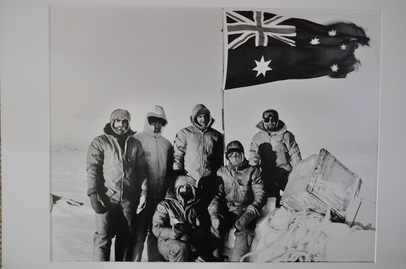
The Tas branch website is keen to circulate photos and stories of past and current ANARE activities. If you have a photo and /or a bit of a story, just send it in to us.
We saw this photo from Phil Barnaart recently...
'...It was taken during our "Autumn Traverse" on Friday 22 April 1988 at "250 Mile Depot" which was laid by Bill Bewsher (OIC) and his crew during the 1956 Mawson ANARE and our visit was the first since the depot was established.
It contained rations, clothing and spare parts for the "Weasel" tracked vehicles and dog sleds used at the time. Although much of the depot had been scattered by the wind and ice movement during the intervening 32 years, it was easy enough to locate using field trip reports from 1956.
On the day, we had finished our task of locating a suitable site for the proposed Dovers base at the foot of Mt Jacklyn in the Northern Prince Charles Mountains, and depoting 320 drums of fuel and other stores for operations at Dovers during the following summer. Before starting the journey back to Mawson station, we decided to try to locate Bewsher's depot as the "Weasel" spares might be handy for restoration purposes (and we really wanted to find it!)
The weather conditions at the time were: clear sky, temperature minus 25.5, wind from the SW averaging 40 knots gusting to 50. I recorded in the traverse log "perfect weather at sunset"! It got down to minus 42 on the traverse though and on 27 days the temperature was less than minus 30. The traverse lasted six weeks. We had a ball.
On the way back we re-explored a slightly shorter route to Mawson station which hadn't been used for years. We also located Bob Dover's "50 Mile Depot" but that is another story...No traverses had operated out of Mawson for eight years and without Dave McCormack's expertise it's doubtful we would have achieved what we did...'
We saw this photo from Phil Barnaart recently...
'...It was taken during our "Autumn Traverse" on Friday 22 April 1988 at "250 Mile Depot" which was laid by Bill Bewsher (OIC) and his crew during the 1956 Mawson ANARE and our visit was the first since the depot was established.
It contained rations, clothing and spare parts for the "Weasel" tracked vehicles and dog sleds used at the time. Although much of the depot had been scattered by the wind and ice movement during the intervening 32 years, it was easy enough to locate using field trip reports from 1956.
On the day, we had finished our task of locating a suitable site for the proposed Dovers base at the foot of Mt Jacklyn in the Northern Prince Charles Mountains, and depoting 320 drums of fuel and other stores for operations at Dovers during the following summer. Before starting the journey back to Mawson station, we decided to try to locate Bewsher's depot as the "Weasel" spares might be handy for restoration purposes (and we really wanted to find it!)
The weather conditions at the time were: clear sky, temperature minus 25.5, wind from the SW averaging 40 knots gusting to 50. I recorded in the traverse log "perfect weather at sunset"! It got down to minus 42 on the traverse though and on 27 days the temperature was less than minus 30. The traverse lasted six weeks. We had a ball.
On the way back we re-explored a slightly shorter route to Mawson station which hadn't been used for years. We also located Bob Dover's "50 Mile Depot" but that is another story...No traverses had operated out of Mawson for eight years and without Dave McCormack's expertise it's doubtful we would have achieved what we did...'





